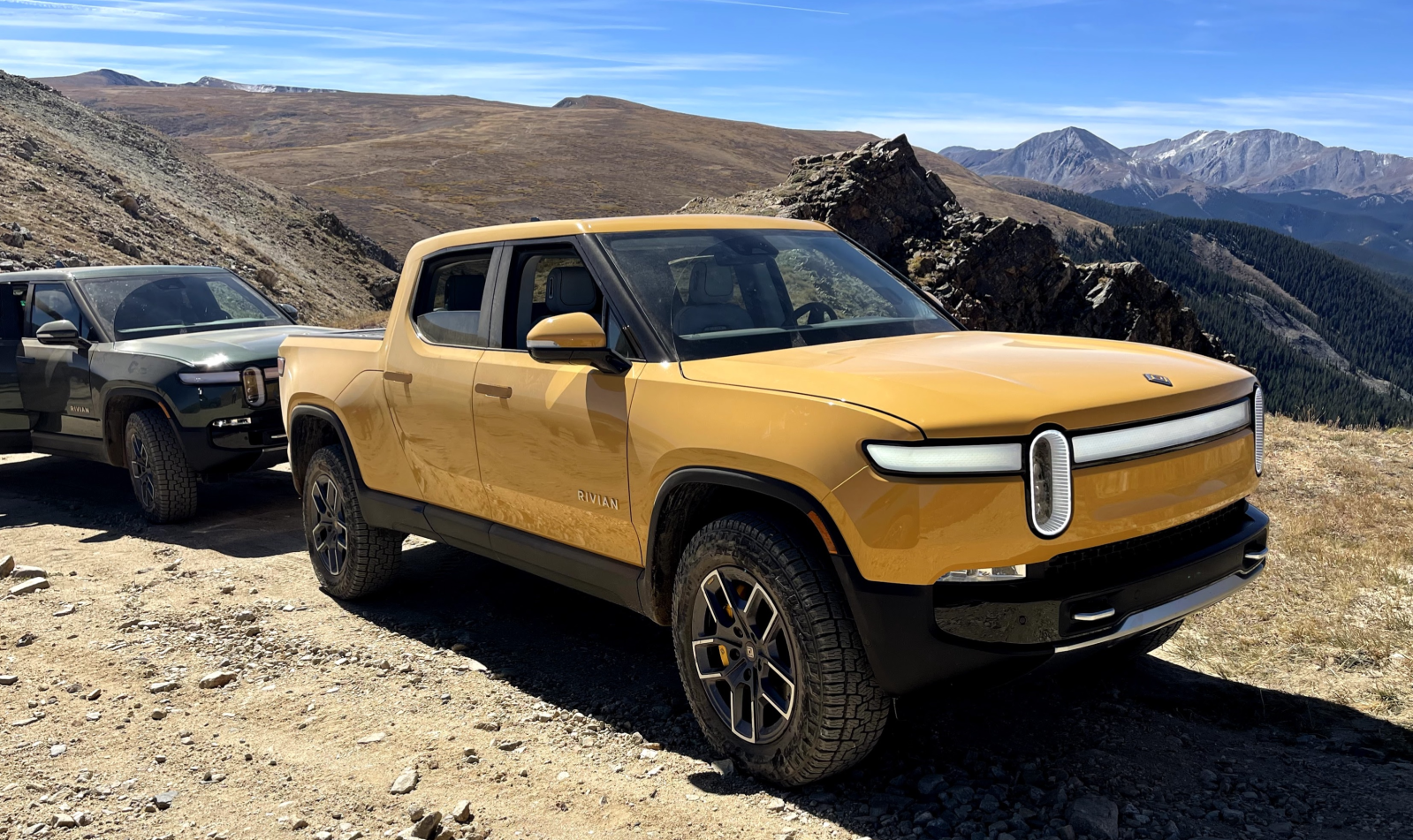
Rivian wowed us at the 2018 Los Angeles Auto Show, coming out of stealth mode with a working R1T electric pickup prototype. Fred said at the time:
I am stunned by the specs here. We are talking about a best-case scenario for an all-electric pickup truck. It looks like these guys have really figured out how to take advantage of an electric powertrain to get some great performance in a pickup truck package.
Fast-forward three years, including a pandemic and almost a year delay, and we’re finally able to take one for a serious drive.
Rivian flew us out to Colorado, put us up at a Breckenridge-adjacent motel and even fed us directly from the rollout “camp kitchen” for this review.
The Rivian R1T looks almost exactly like the prototypes Rivian showed off in 2018, which indicates that the company was pretty far along in its build process when it was revealed to the world in LA. Rivian has spent the almost three years since, refining the all-electric pickup truck and most importantly making it mass-producible.
The R1T was initially supposed to launch at the end of 2020, so last week’s first customer vehicle rolling off the assembly line is almost a year late – but that’s actually not bad compared to other automakers adjusting to the realities of the pandemic and uncertainties of electric drivetrains.
Rivian did still beat behemoths Ford, Chevy, and EV expert Tesla to production, and at the moment is the only automaker producing electric pickups, even if currently it is in small numbers. If you order now starting at $67,500 before incentives, you are probably looking at a late 2022 delivery time at best.
The car is still beautiful with very small changes since 2018. Those once questionable front lights have grown on me! Some of the subtle upgrades I’ve noticed:
- Frunk space is flatter and smoother around the edges
- Charging bay door now automatic motor driven
- Charging speed tops out at around 220kW+ (vs. 160kW promised)
- Door handles are flat
That’s pretty much it.
And that’s a good thing. My colleague Fred Lambert put a R1T reservation down after seeing the Rivian for the first time. I was more hesitant (and the R1S SUV model fits my family better). Would I be able to keep my wallet in my pocket after driving the R1T for the first time?
Rivian R1T first look
The motel was about a two-hour drive west of Denver airport at the base of Breckenridge, and it was already getting mighty chilly at night with snow dusting the upper extremities of the surrounding mountains. We got picked up from the airport hotel in an R1T, and it was my first time being inside a “production identical” model.
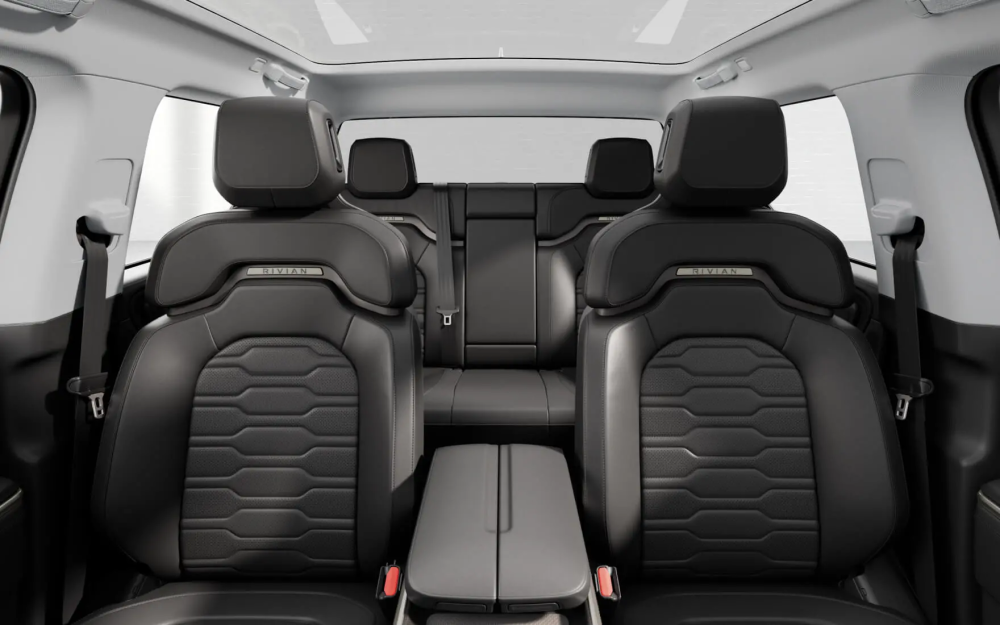
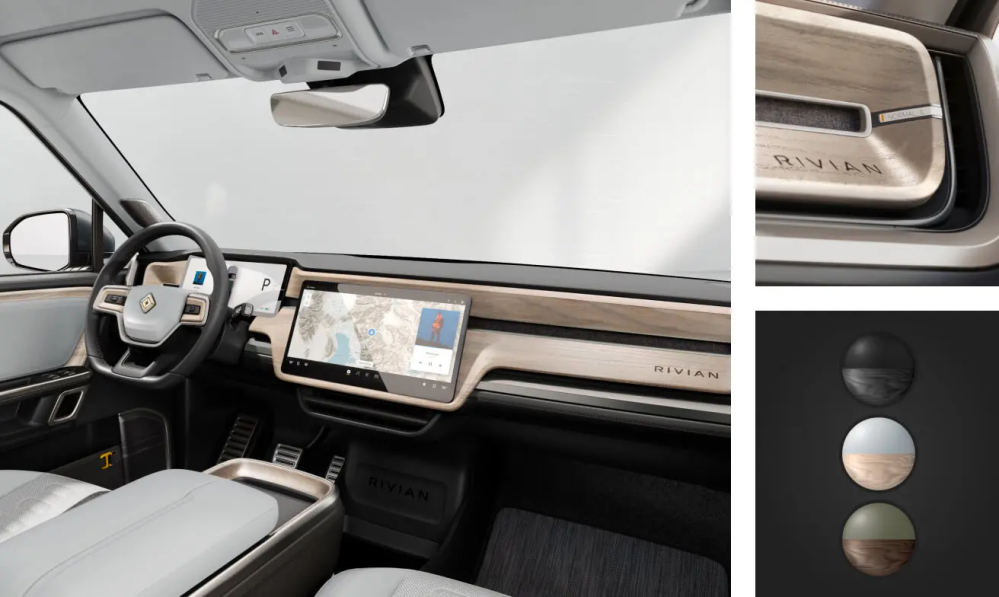
The seats were super comfortable, and the trim was just the right mix of sporty-spartan and rugged luxury. Quinn Nelson from Snazzy Labs Youtube channel was on the ride with me, and it was good to connect with a fellow tech geek on the display. I sometimes get a little car sick so I got to sit in front, but the glass ceiling and big cabin in the back allowed his 6’4″ frame plenty of room. The front trunk measures 25.4 in by 54.8 in with a depth of 22.7, which was plenty for our luggage and equipment.
Rivian R1T Center Stack
I’m always impressed when startups (like Tesla in 2012) are able to develop a whole center stack operating system on their own (compare to legacy automakers which often outsource to QNX and now often Google). Rivian’s OS isn’t as polished as Tesla’s is currently, but it has the same ambitions – Rivian wants to own the experience completely. There’s no CarPlay or Android Auto here, though I’m told the hardware exists and it theoretically could be added at a later date. In talking to CEO RJ Scaringe, however, I didn’t get the feeling that would ever happen. He told me that Rivian wanted to own the whole experience and that included not only music/audio but also mapping and other features smartphone projection screens include.
The company currently uses Mapbox, but you could see them doing their own maps over time. The trucks have an array of cameras and super accurate (within inches) GPS, and I think the idea is that not only will Rivian build its own street maps with its fleet, it will also be building off-road trail maps where Google and Apple won’t have access. The way Rivian talks about its community, you could see a Strava-like social network with Rivian drivers forming and talking about the intricacies of trails, charging, and off-road life.
Right now, there’s one third-party app, Spotify + Tune-in, which Rivian used to make a car listening playlist of everyone’s favorite songs. The Meridian sound system, including four overhead titanium speakers, is clear and immersive. More apps will be coming in future OTA updates including Amazon Alexa voice recognition. That Bezos money isn’t free.
R1T Drive Modes
The rest of the user interface is fairly simple. You can choose between driving modes, and rather than muted changes you’ll find in most vehicles, the modes on the Rivian totally change the vehicle. I think most drivers will live in “Sport” Mode which basically feels like a jacked up 6000lb Tesla. “All-purpose mode” feels a little bit more like a traditional pickup with slower acceleration and higher suspension. If you need to stretch out a charge, “Conserve mode” only uses the front motors and keeps the acceleration tame. “Rock Climb mode” jacks up the suspension and keeps the speed low for what was to come.
While the center stack is cool, I think this is where Rivian needs to do the most work. The maps are often slow to respond to finger swipes and on more than one occasion, the driving mode wasn’t switchable. This is all software, so I think it is easily attainable, but work does need to be done here. I’d also like to see CarPlay/Android Auto as an option, but I realize that is extremely unlikely to happen. If not having Apple or Android in the vehicle is a nonstarter for you, maybe get an iPad mount and an AUX cable?
Right now, the autopilot system is a simpler traffic-aware cruise control with lane assist called Driver+, and it works well on interstates. Rivian uses 11 total cameras (10 outside, 1 inside) which are assisted by 5 radars and 12 ultrasonic sensors. That seems like a lot of sensors for glorified cruise control but Level 3 autonomy isn’t officially on the menu yet. Hopefully we’ll hear more there soon.
When questioned about other company’s vision-only approach, we were told that more sensors are better, especially off road, and it is hard to argue with that.
We arrived in the evening to a campout with food and drinks prepared in, on and around the R1T “Camp Kitchen.” CEO RJ Scaringe introduced all of the employees and discussed the difficult journey getting to this week’s launch. There’s a real sense of camaraderie among the employees we worked with over the three days of driving. Employees, who come from all over the US and all walks of life, seem very bought in, and it was hard not to feel the love of the product here. Often these drives are lead by an outsourced PR team or employees who have never driven an EV before, so being surrounded by advocates was a nice change.

Even more impressive is the long lineup of Rivian vehicles in the large palette of colors ranging from normal white/black/silver to red and yellow and my favorites blue and a hunter green.
At 7:30 a.m. the next day we were ready for our first drive, and, man, I was not expecting to climb a whole friggin’ mountain. Usually these media drives are on a closed course at the company headquarters or some other vanilla “proving grounds.” This was, to put it mildly, an adventure. Two journalists in the previous group had gotten altitude sickness, one almost requiring an airlift. I drank lots of water and huffed lots of air when running around grabbing pictures at the breaks and luckily was fine.
We went from about 9,000 feet at the hotel to 13,000 feet up a very steep, rocky, narrow path. We passed some September snow and then the tree line but didn’t see any stock trucks along the way. Most of what is out here are dune buggies and highly modified Toyota Land Cruiser-type vehicles huffing that super thin air.
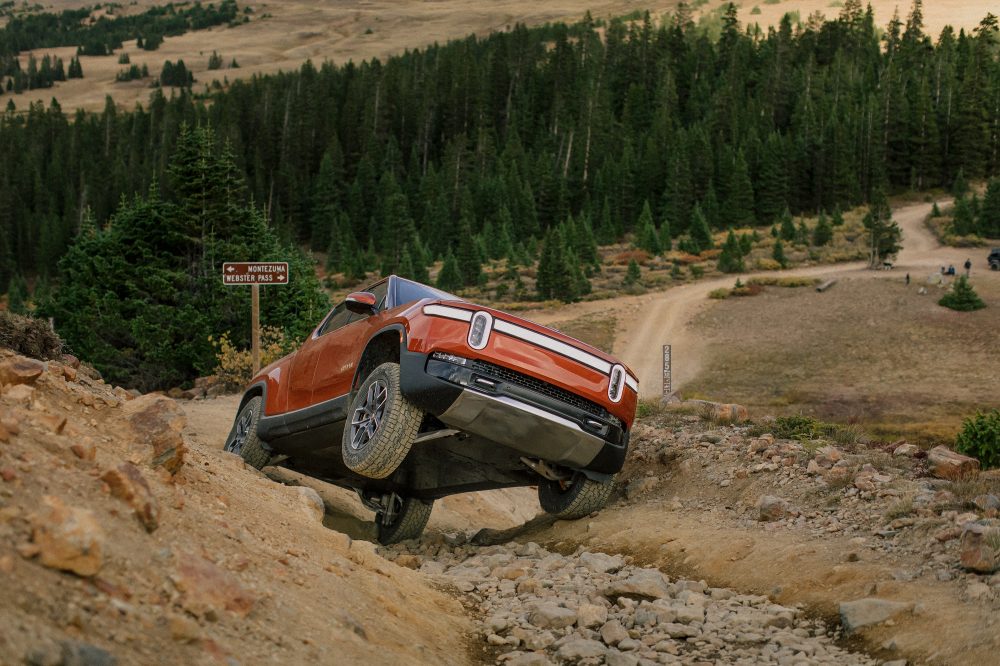
One nice thing, among many, about electric trucks is that they don’t lose power at high altitudes like ICE vehicles, which rely on the ever thinning oxygen in the air to combust. So if the R1T schools the ICE competition at sea level (and it does) then the whooping is all the worse at these high altitudes.
I was simply amazed at the rocks we were climbing, the angle of attack and how methodically all four wheels kept traction even while doing gymnastics over every obstacle. This is an area where every wheel having its own motor just kills the typical ICE 1-motor model. The R1T vehicles wanted to go faster, but our lead car, which was driven by a local trail guide who happened to work in Rivian’s finance department, kept us at a reasonable pace.
Once we hit the tree line, things started to smooth out. We were allowed to open up the vehicles a little more and get some slight drifts in, while never deviating from the trail lest we ruin the very fragile ecosystem.
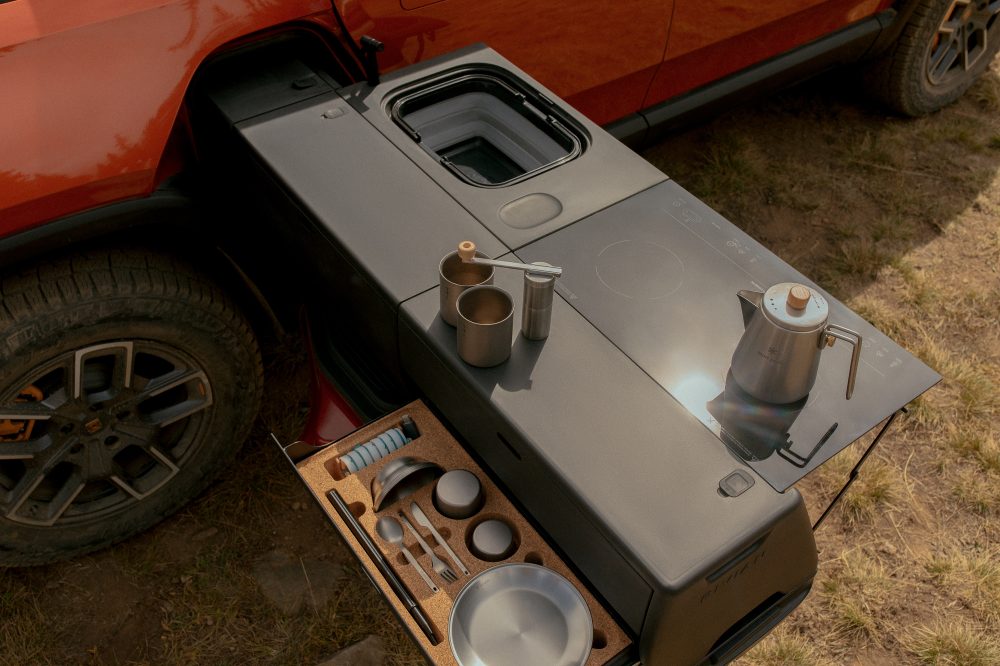
After some snack and “bio” breaks, we headed down the mountain again for another meal prepared on the Camp Kitchen. At $5,000, the Camp Kitchen isn’t cheap but it certainly pays for itself when you can have relaxing home-cooked meals like in places below:
We actually gained quite a few miles – maybe around 20 – of range regen-ing down the mountain, which was satisfying, particularly going over those same huge boulders and narrow trails.
From there we were allowed to travel at “safe speeds” on the mountain roads, including high-altitude passes and down into a local town that included an Electrify America station at the Walmart. In sport mode, the vehicle, even with off-road tires, approaches that 0-60 time of three seconds. Even on a highway going from 50-80mph feels almost instantaneous. For most pickup drivers, this will be a whole new world.
We hooked into the EA 350kW charging station, and almost immediately we started charging without any app or key card interactions. Yes, the Rivian will have the Plug and Charge standard, making it the third vehicle to do so after the Porsche Taycan and Mustang Mach-E. Again, super impressive that a startup can do things that established automakers can’t.
At around 50% state of charge we were gobbling down 145kW of electricity, something that was unimaginable just a few years ago. I was shown that when down around 15% state of charge, these same stations would put up about 225kW and Rivian expected to put up numbers approaching 250kW after some software updates and using its own optimized charging network. At a 240+kW station, you’ll get up to 200 miles in under 30 minutes. The pack in the trucks we were driving is 135kWh.
That real-world charging speed is particularly impressive given that Rivian only promised 160kW at launch. Rivian uses Samsung cells and builds the packs themselves over there in Normal, Illinois. Somewhere down the line they hope to use domestic cells, but currently those come in from Samsung plants in Korea.
R1T regen modes
For most EVs, regenning is a “one size fits all” affair. Not here. You can easily achieve one pedal driving with the full .21G full regen or little or no regen options which I didn’t try because why would I :D? If you think one pedal driving is nice on roads, wait until you rock climb with it. Together with no gears and 900lb/ft of torque at 0 RPMs it is a totally improved experience.
The Rivian R1T is efficient?! (for a pickup)
After the road drive, we looked at our miles/kWh ratio over the last 30 minutes. We ended up close to three miles/kwh, which is respectable given the huge tires, ground clearance, and profile of this vehicle. Off road, we saw about 2 miles per kwh which was still impressive. Special projects chief engineer Brian Gase, who you can see emerging from the gear tunnel below, told us that Rivian spent a lot of time on getting the coefficient of drag way down to .30, smoothing the bottom of the vehicle, directing air around the tires and so on. That’s how you get a pickup truck with 314 miles of EV range on a 135kWh battery.
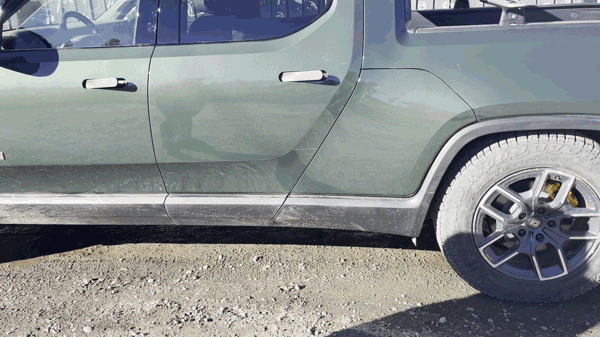
PR superstar Tanya Miller did the same with the Frunk, which shows Rivian folks love to have fun.
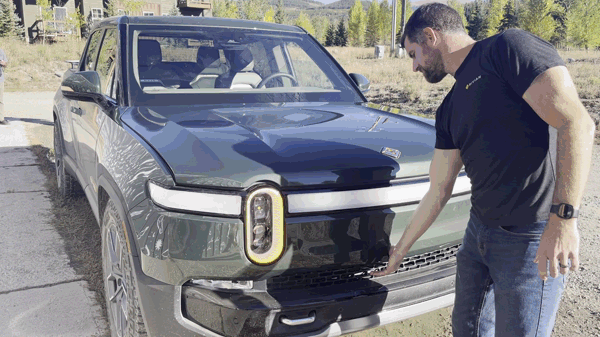
Electrek‘s take
I put down $1,000 for an R1S, the three row SUV version of this vehicle. That should tell you more than anything else I can say here. Sadly, it won’t have a camp kitchen or the gear tunnel, but we’ve got two growing boys and a crazy husky that would probably love being in the pickup bed until she saw something she wanted to investigate and jump out. Also that 3rd row would come in handy for hauling kids around. Therefore, I’m waiting a few extra months and opting for the SUV. Those begin shipping in January according to the company, but realistically at this point, I’m hoping for late 2022.
If actually buying one wasn’t enough of an indication, I think Rivian has an incredibly bright future. CEO RJ Scaringe is a “Stable Genius” so to speak and has built an impressive company around the mission to electrify the fun truck space. Rivian also has “Amazon money” building delivery trucks, which are already out on roads doing deliveries today.
The R1T isn’t just an incredibly fast and impressive 3 second 0-60 street pickup with racing suspension right now, it also does things off road that no other pickup could even attempt (tank turns and perfect doughnuts weren’t yet on the menu but will be coming). The quiet gearless electric motor lets you hear the trail and nature and doesn’t upset the environment nearly as much as its ICE counterparts. Add in 300 miles of range and so many Easter eggs I stopped counting, this vehicle is full of surprises and delights at every turn.
FTC: We use income earning auto affiliate links. More.
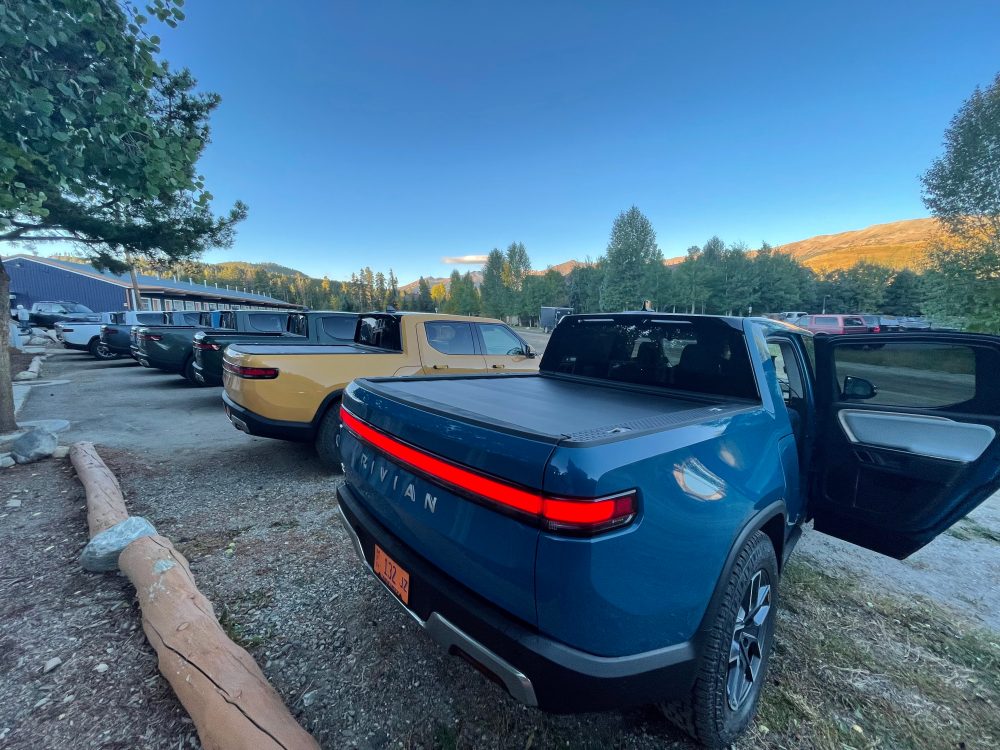
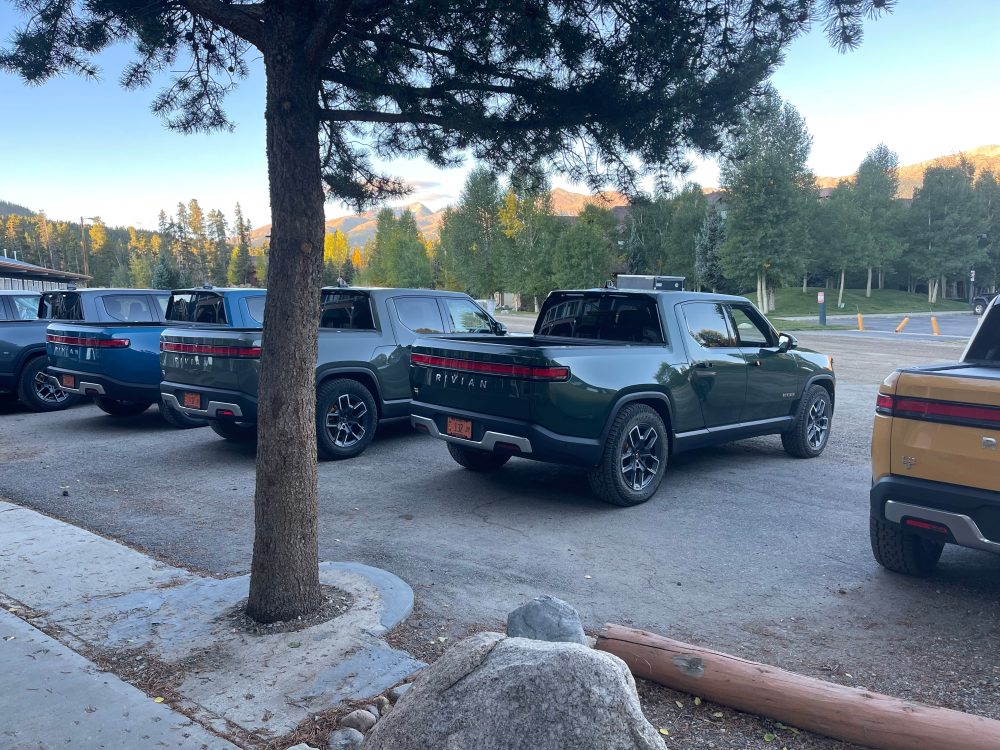
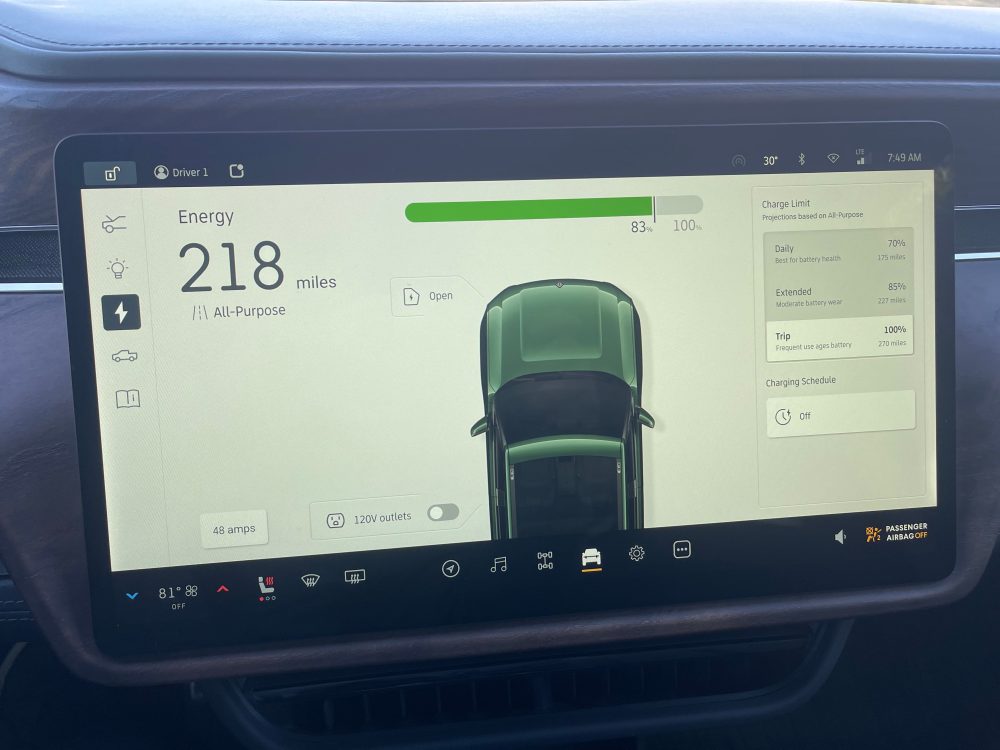
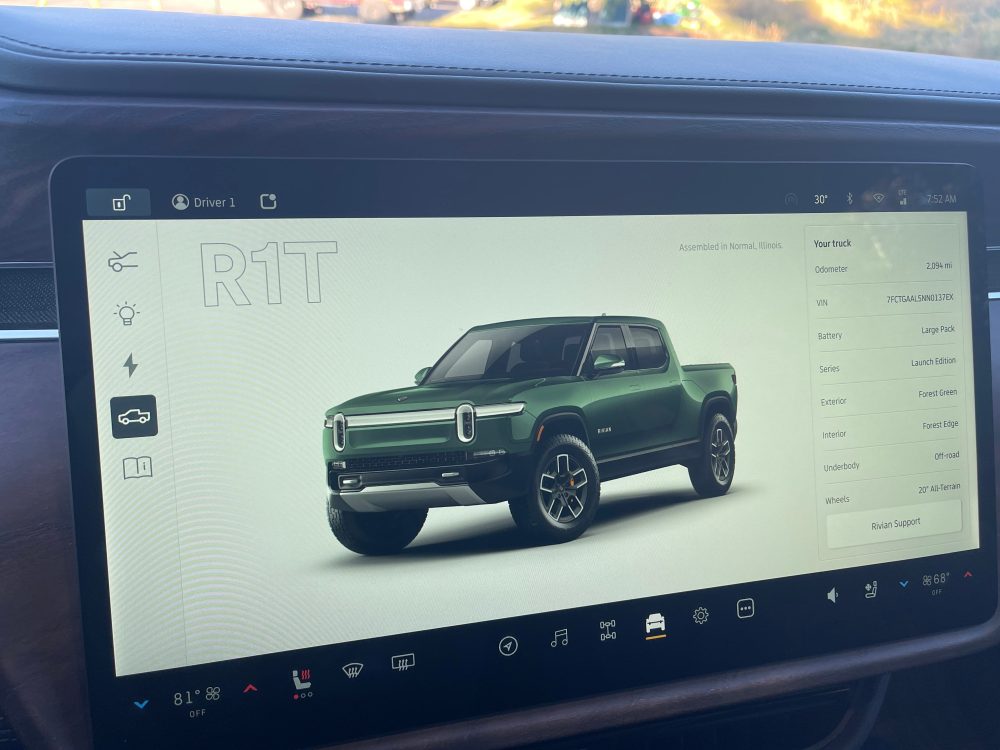
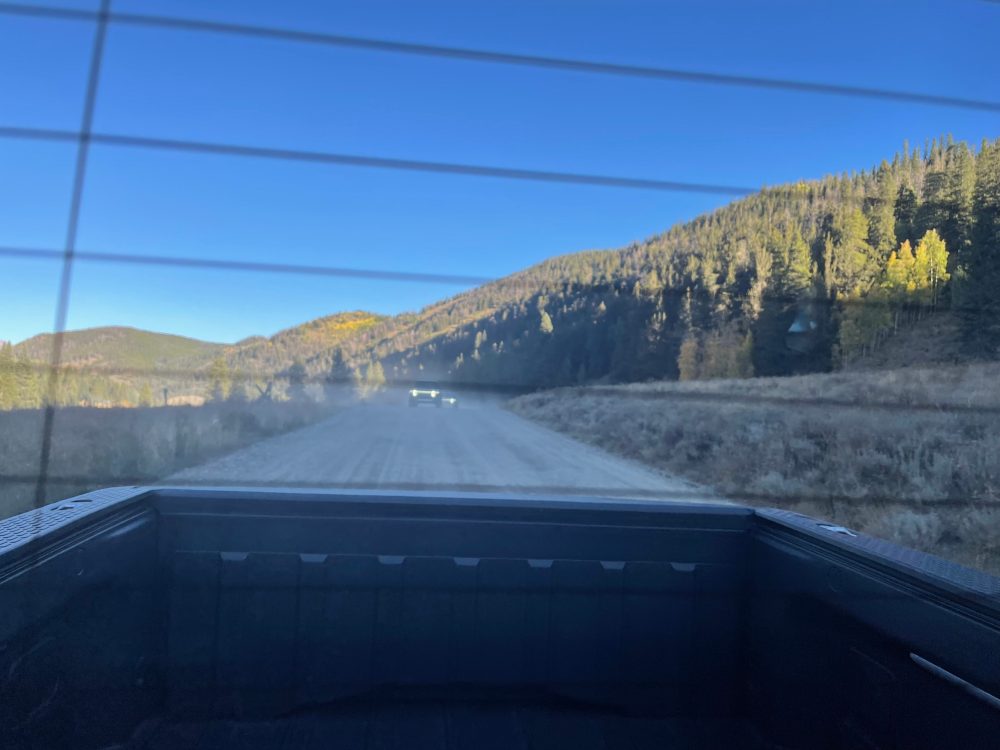
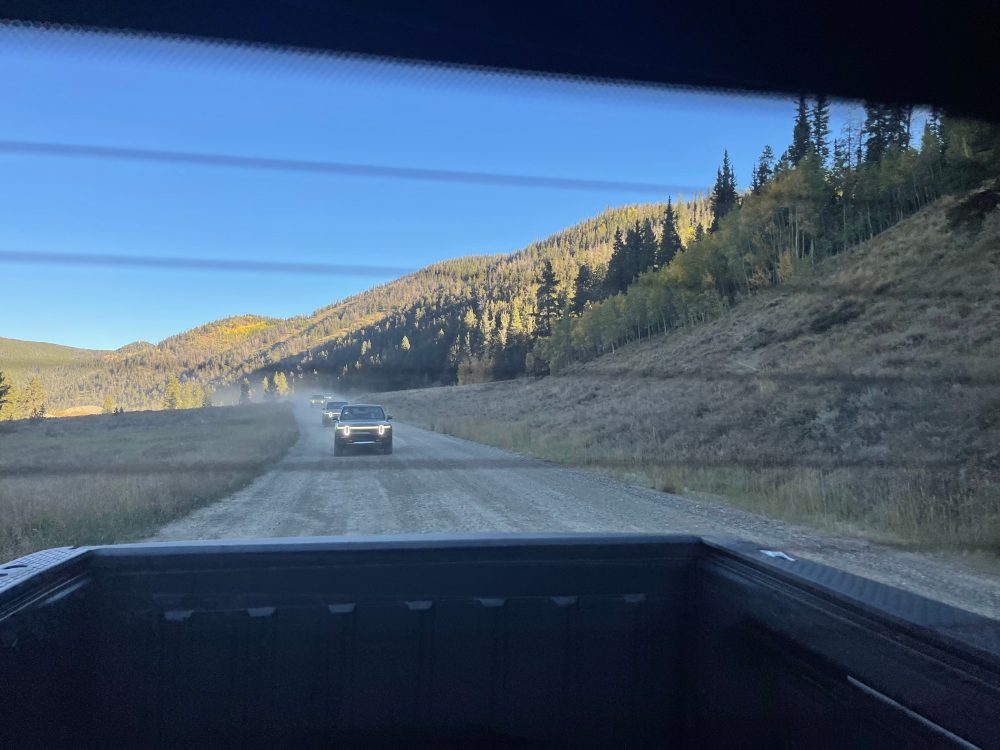
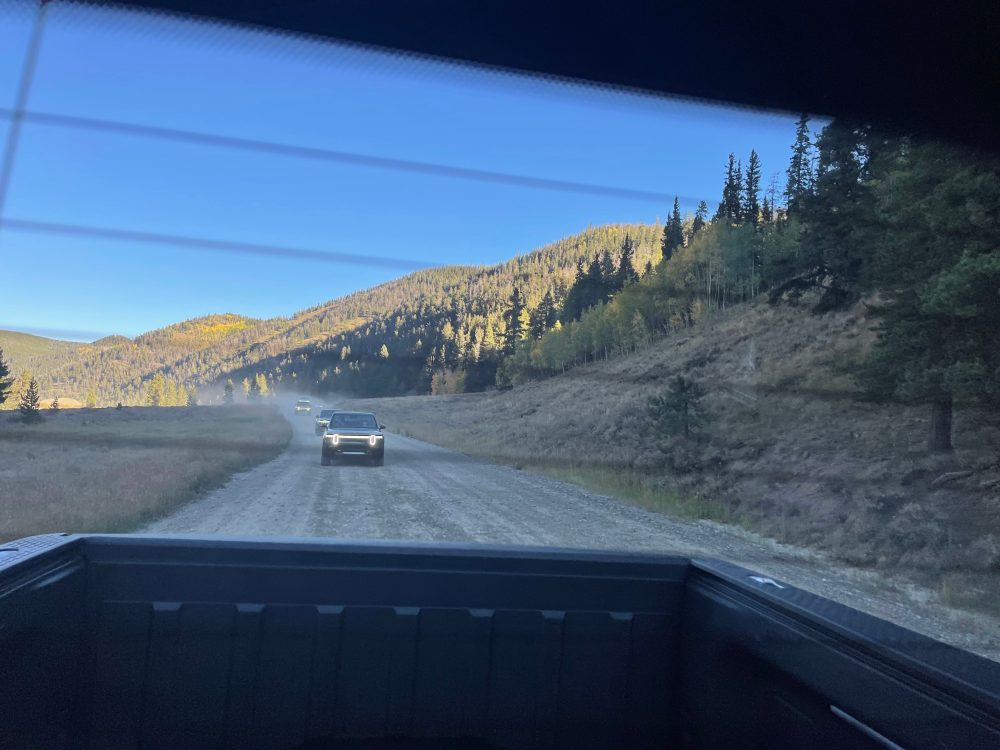
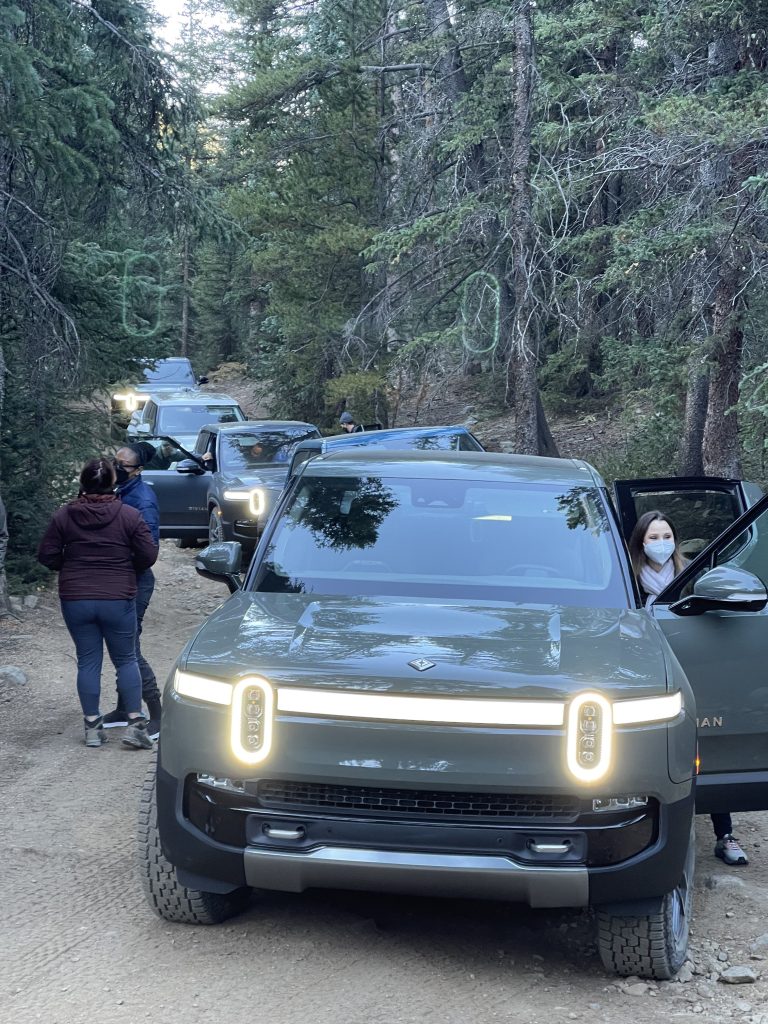
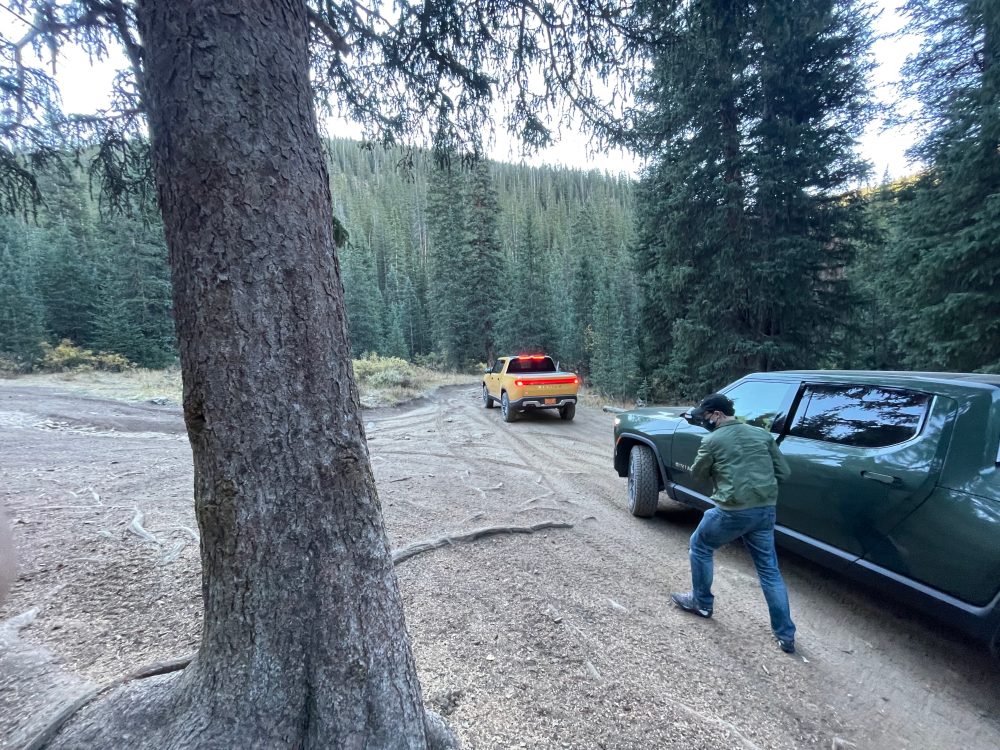

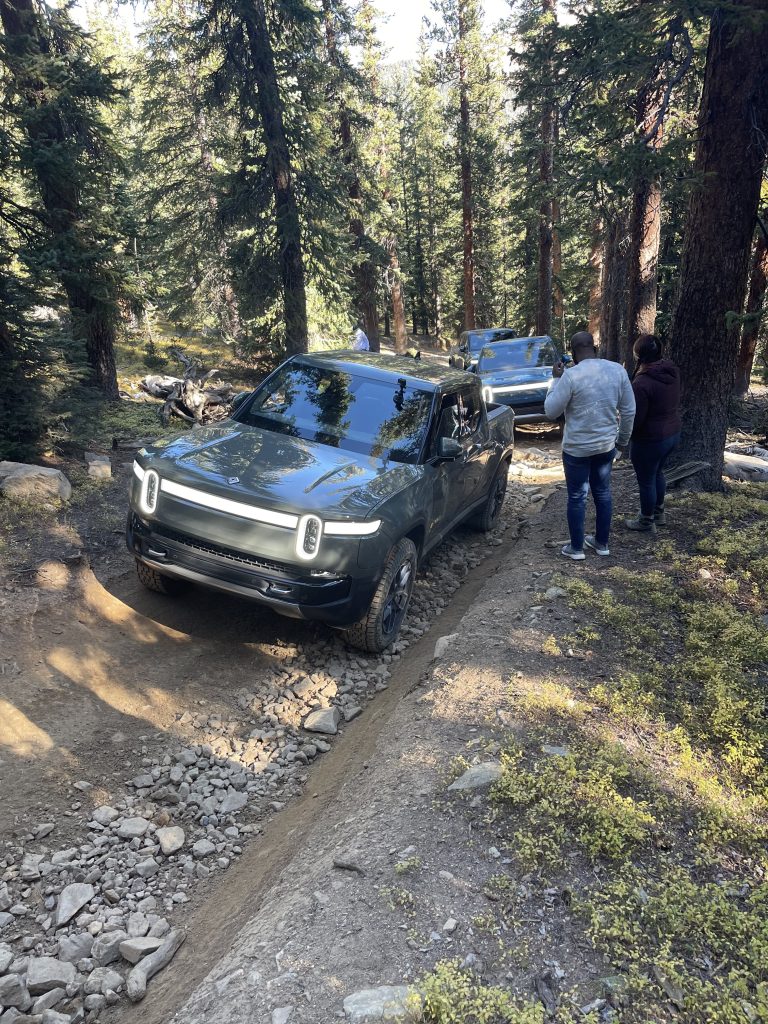
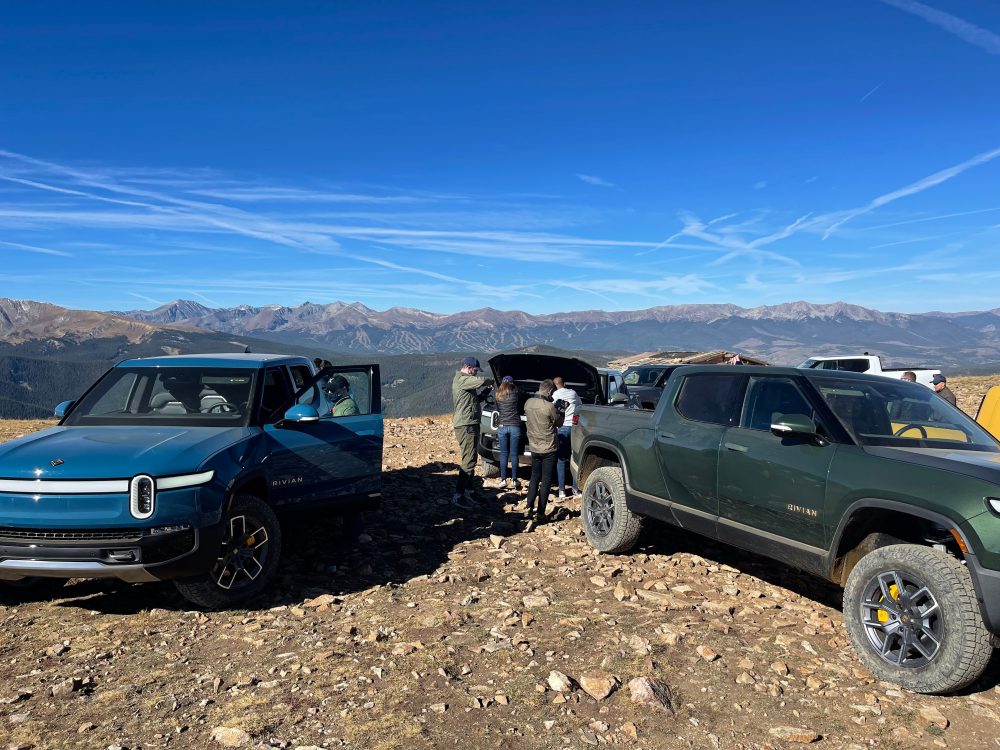
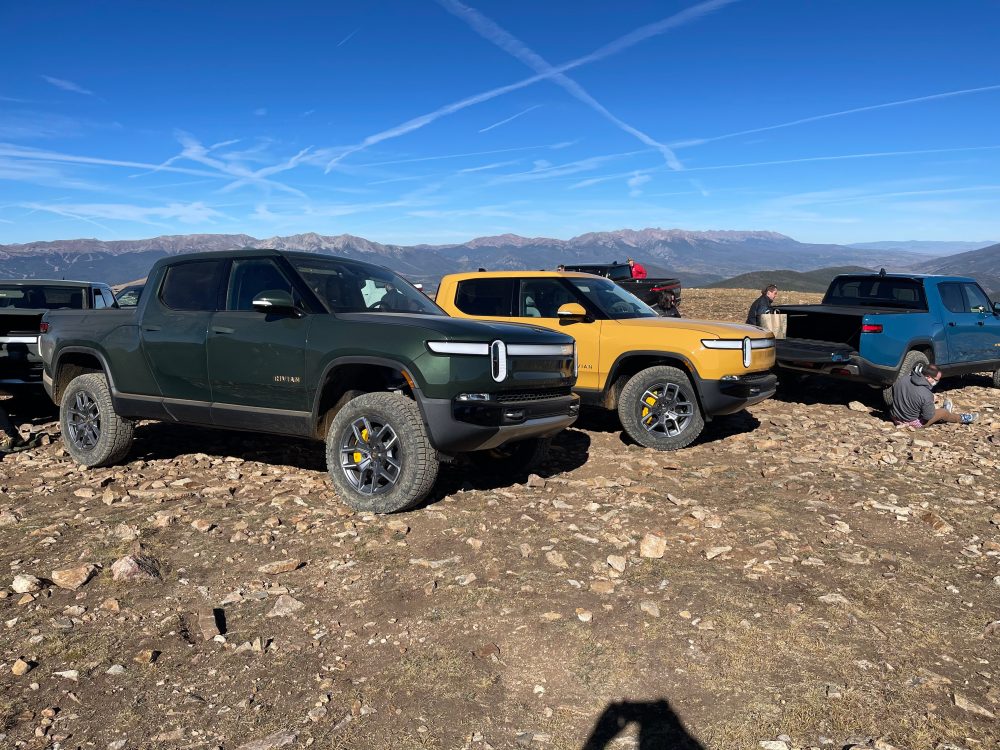
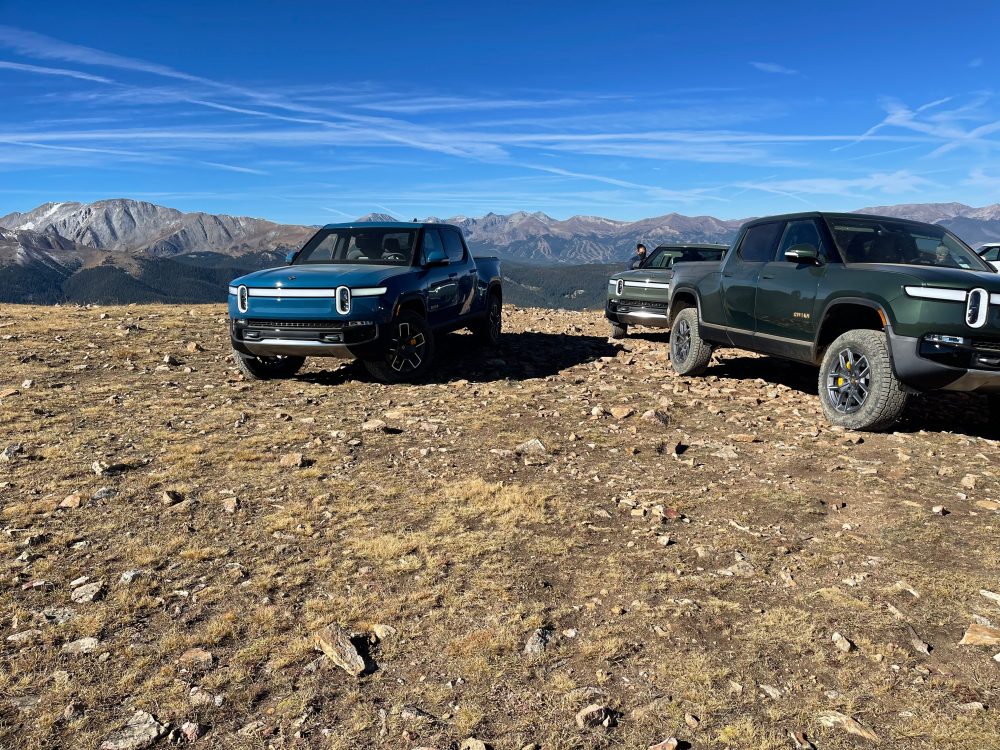
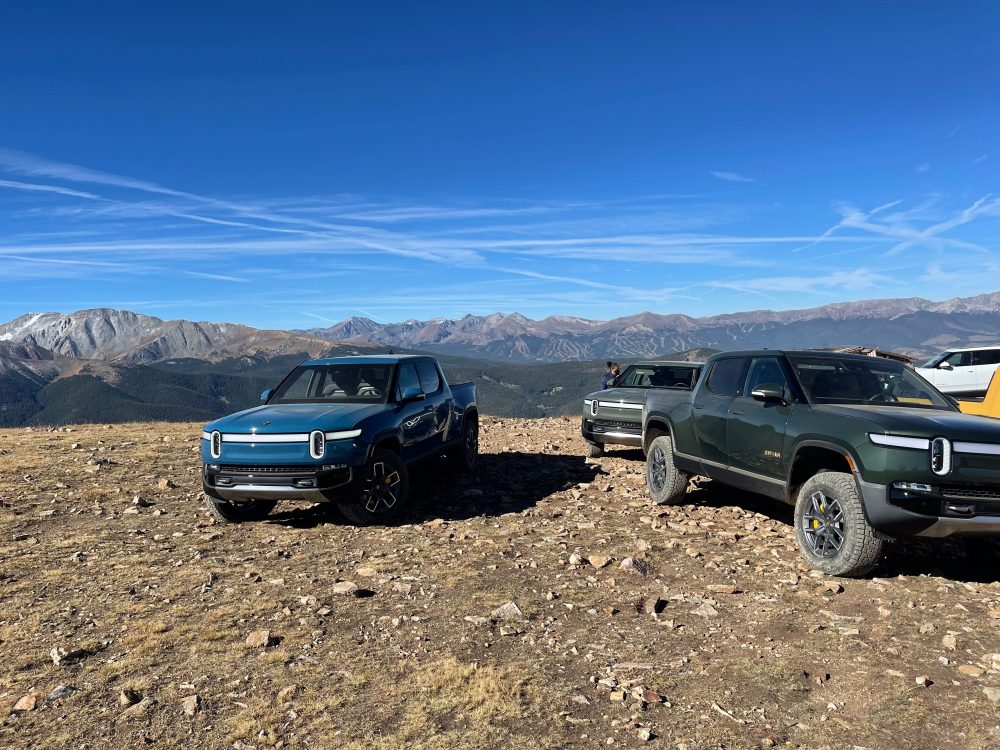
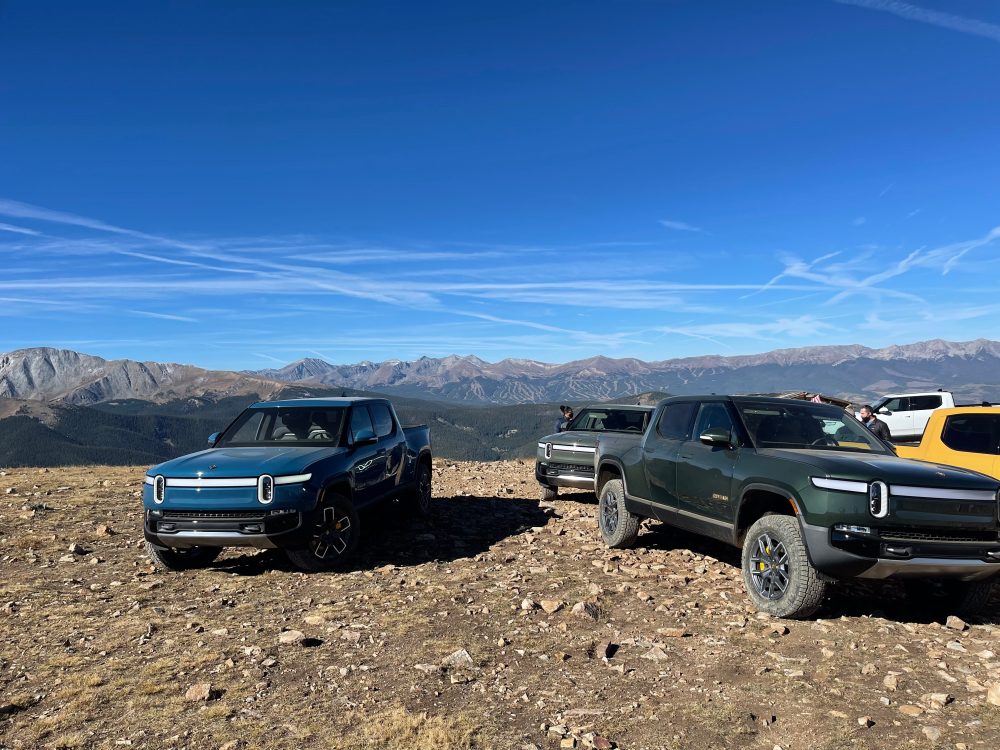
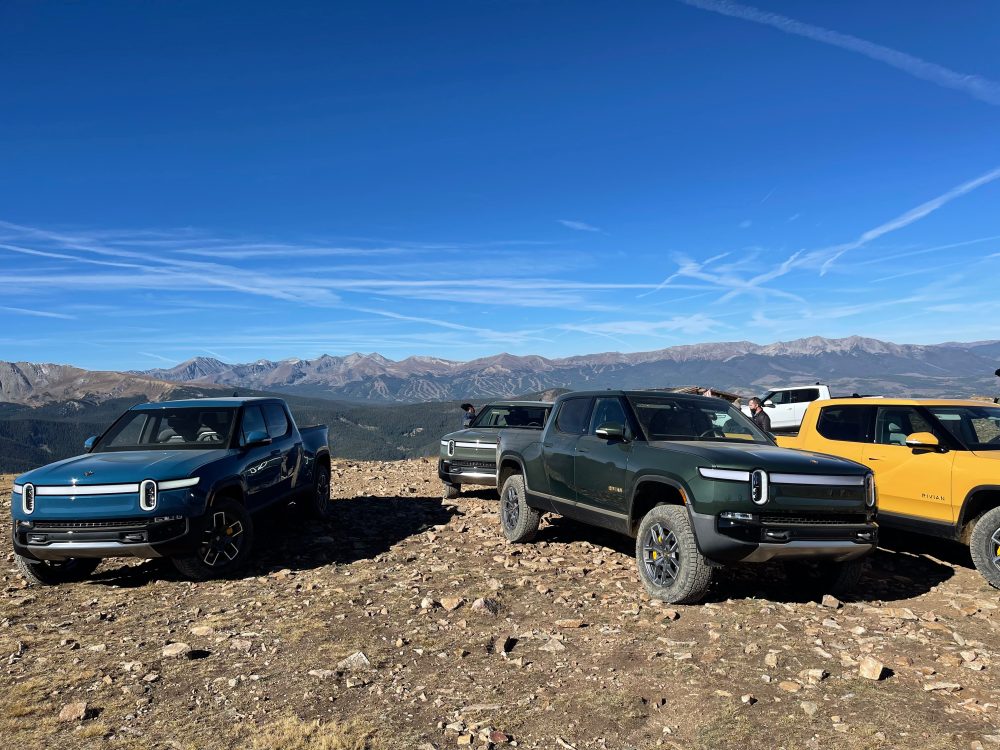

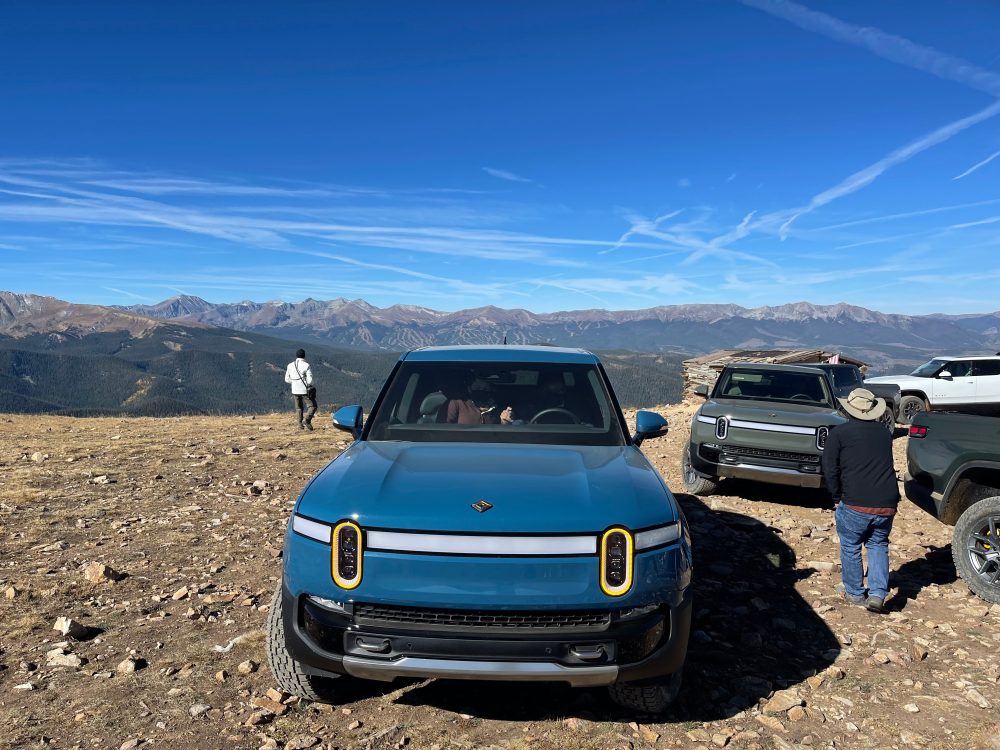
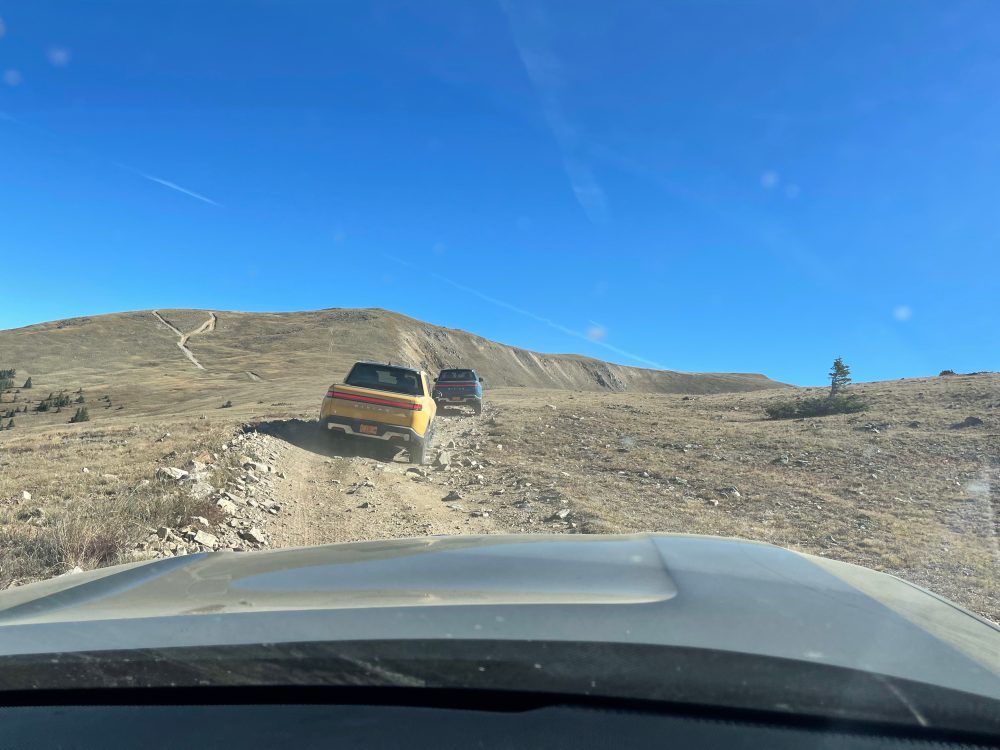
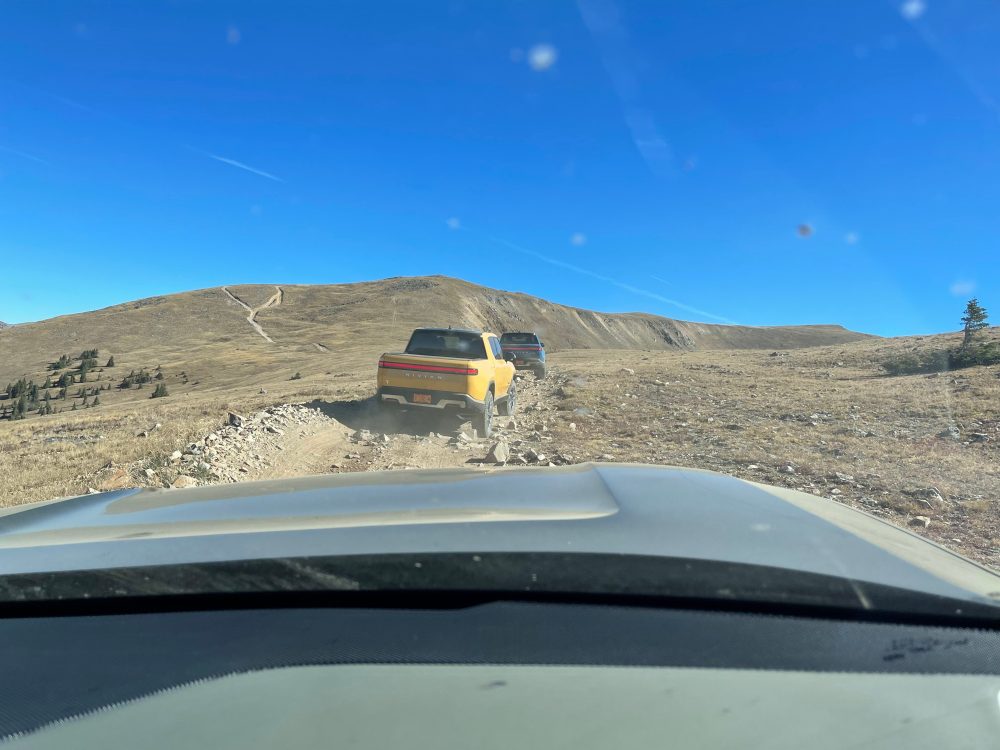
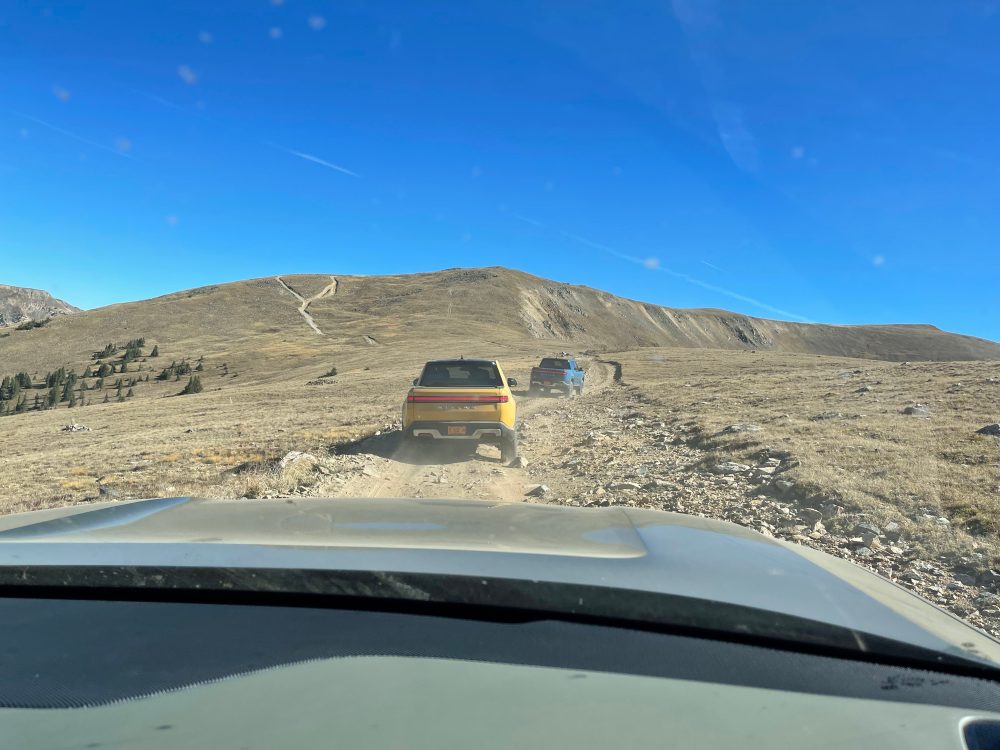
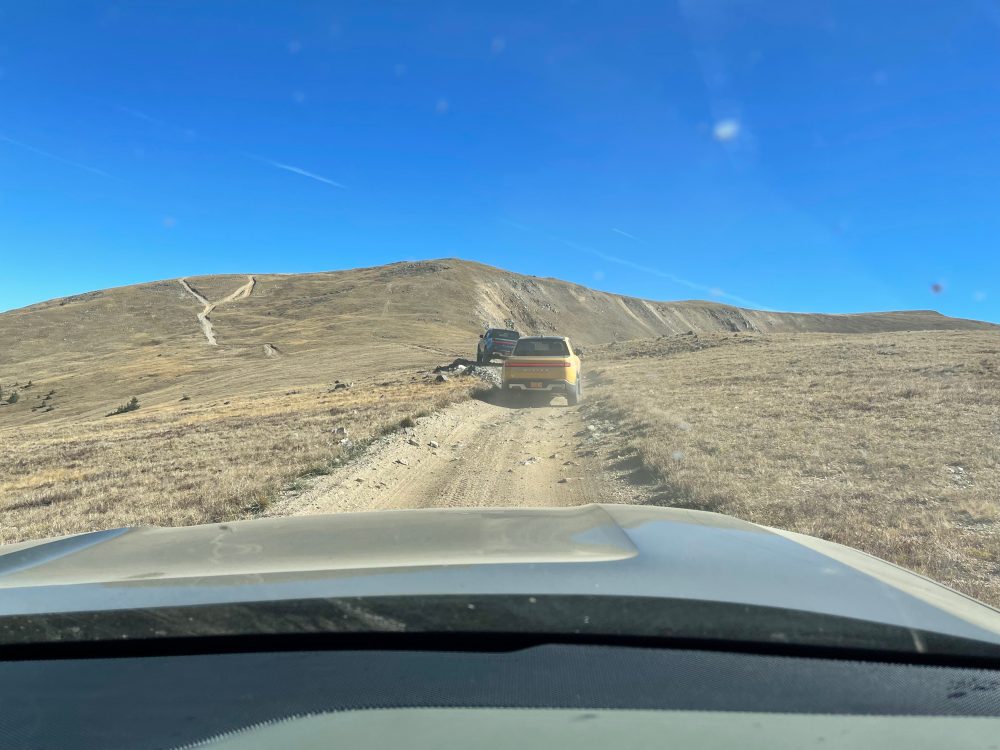
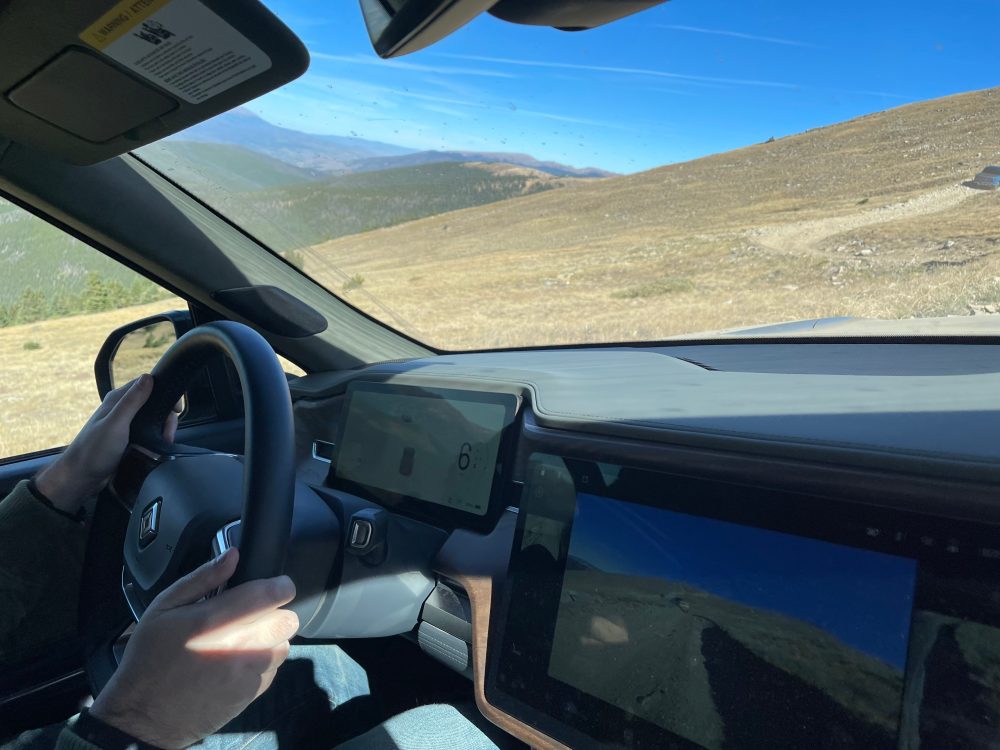
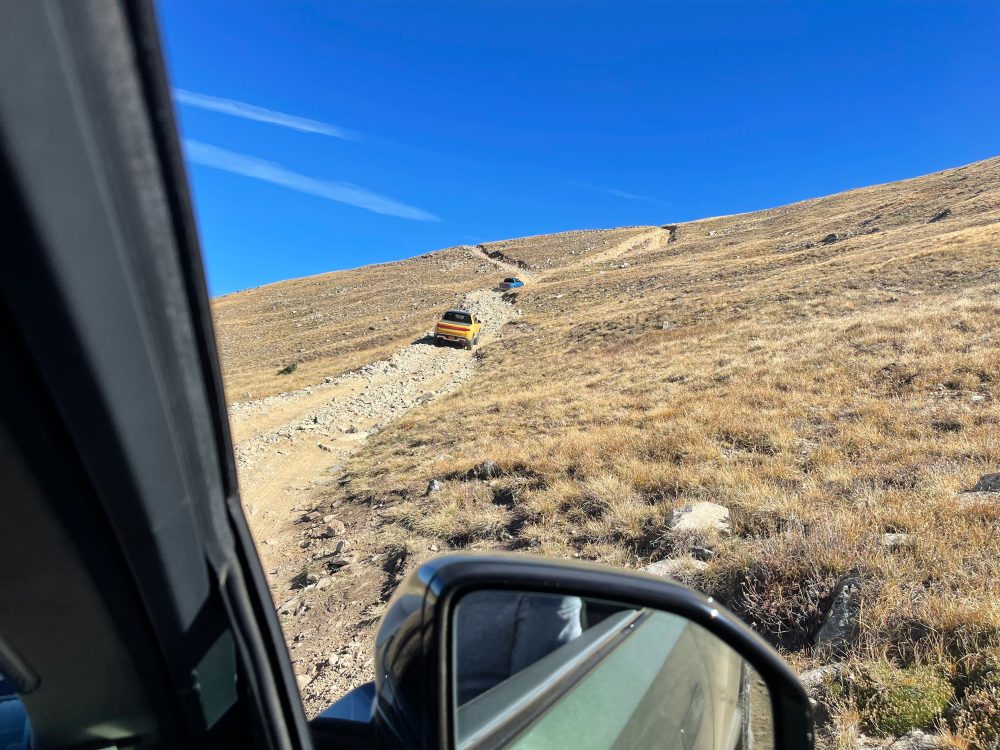
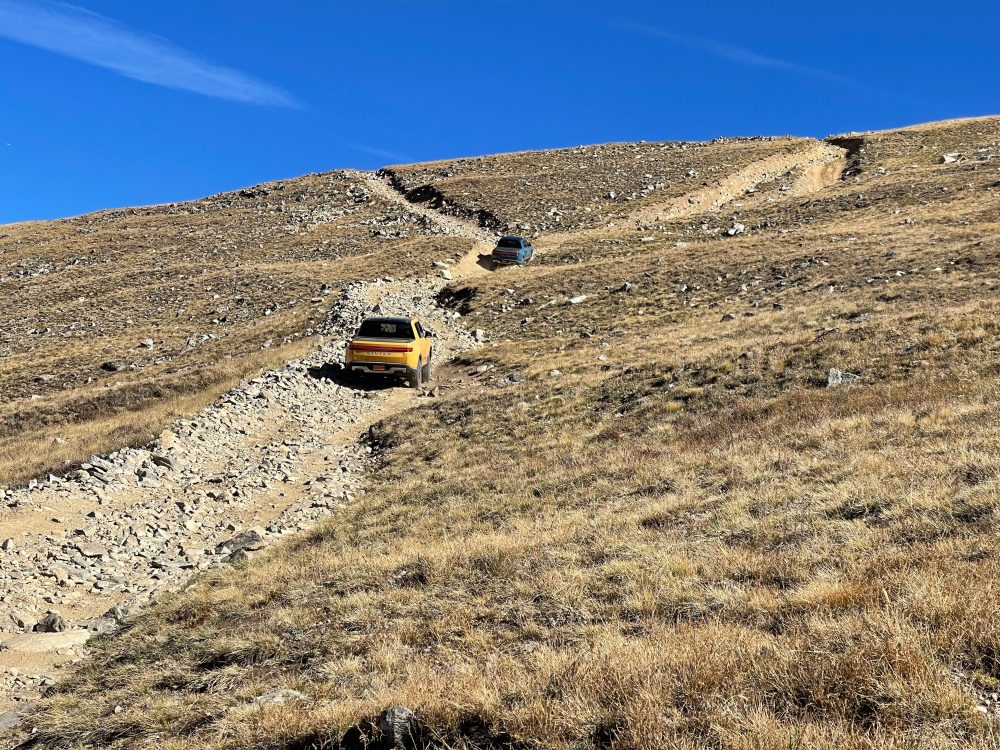
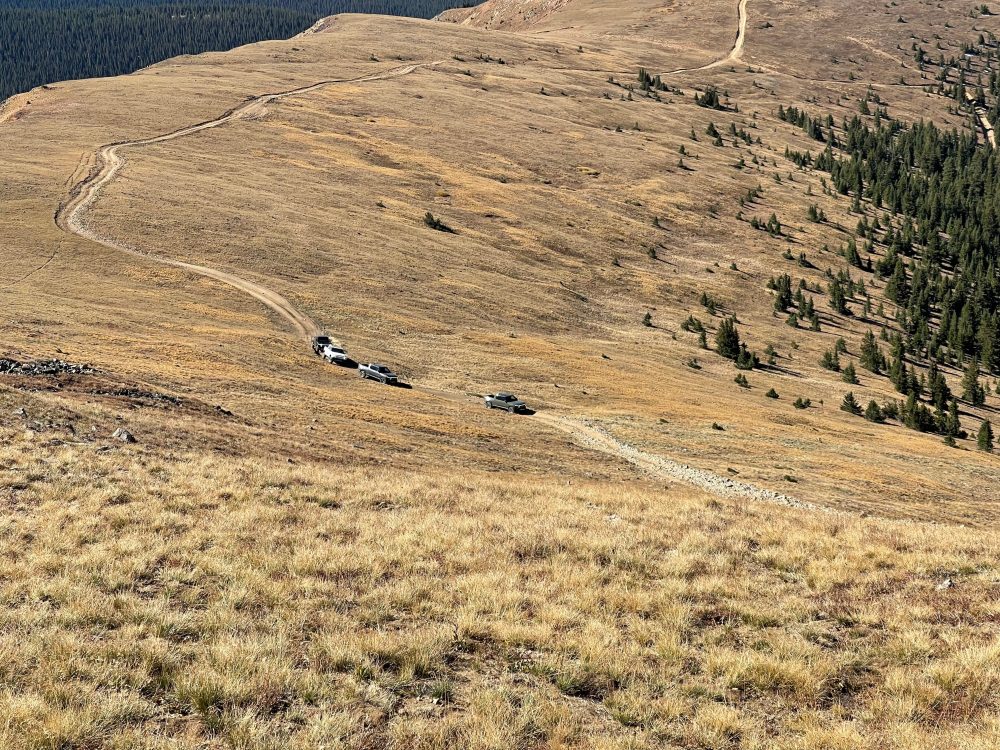
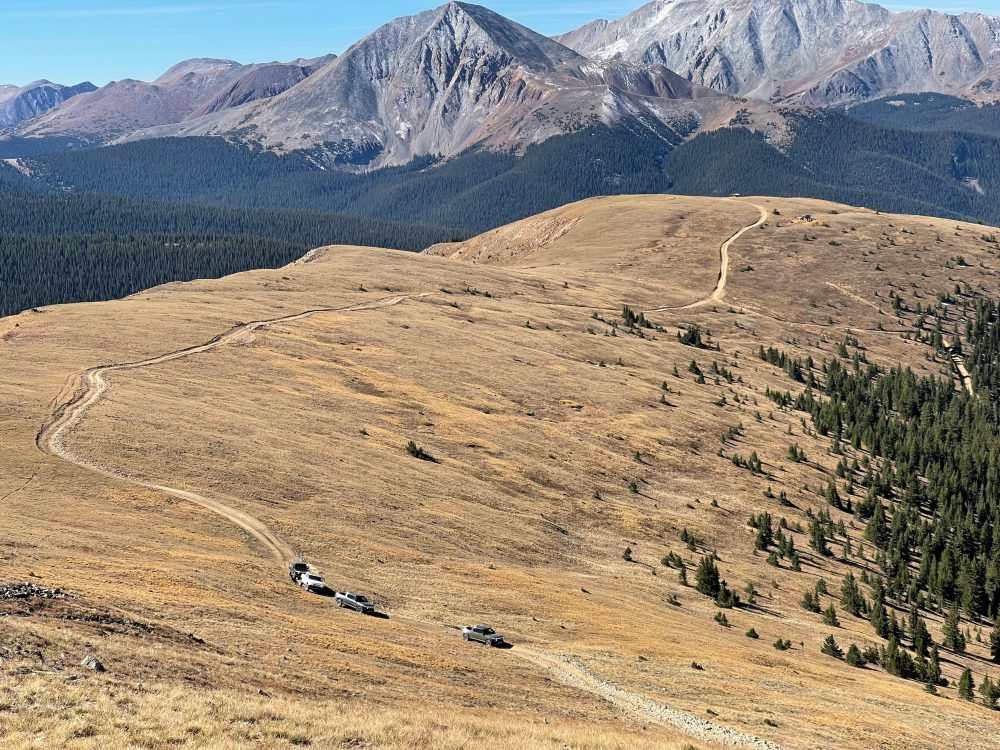
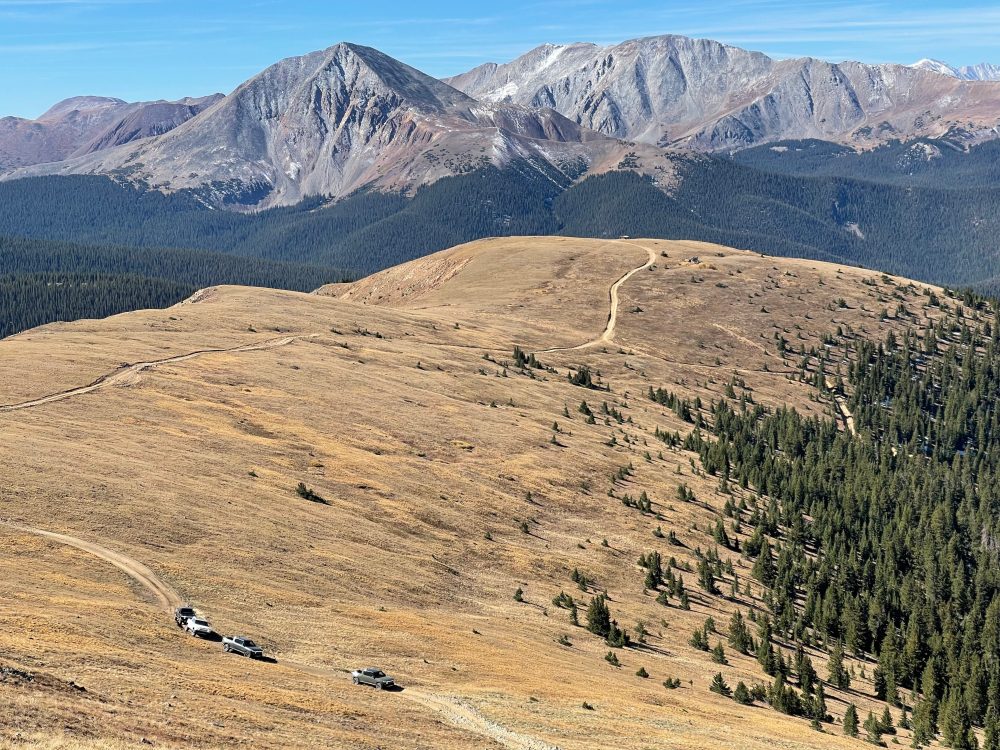
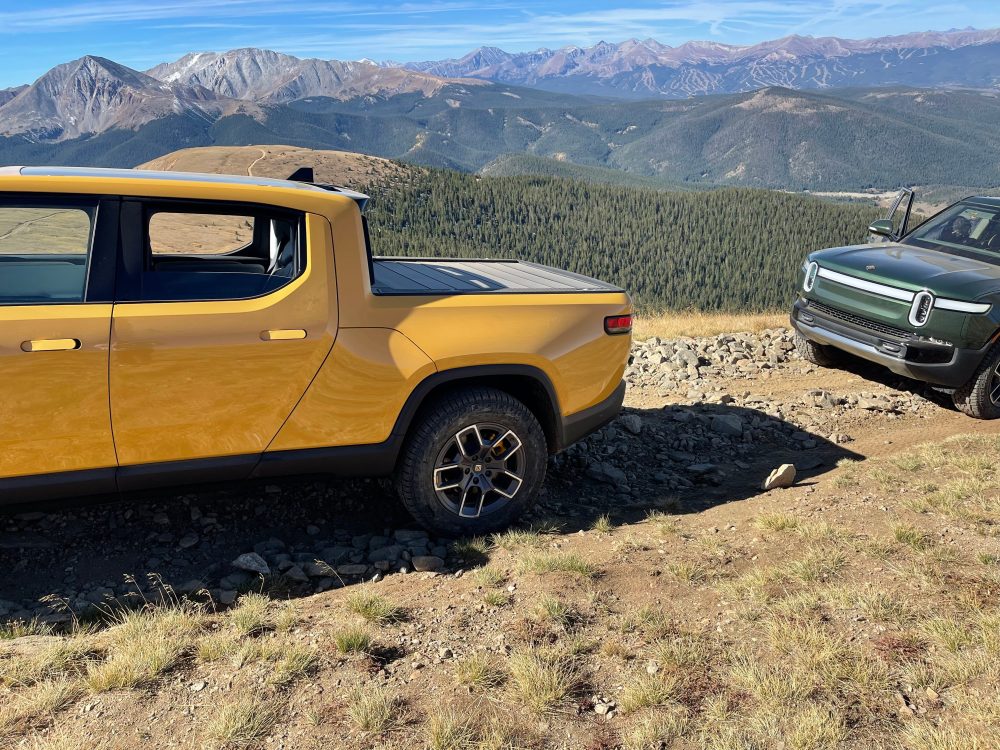
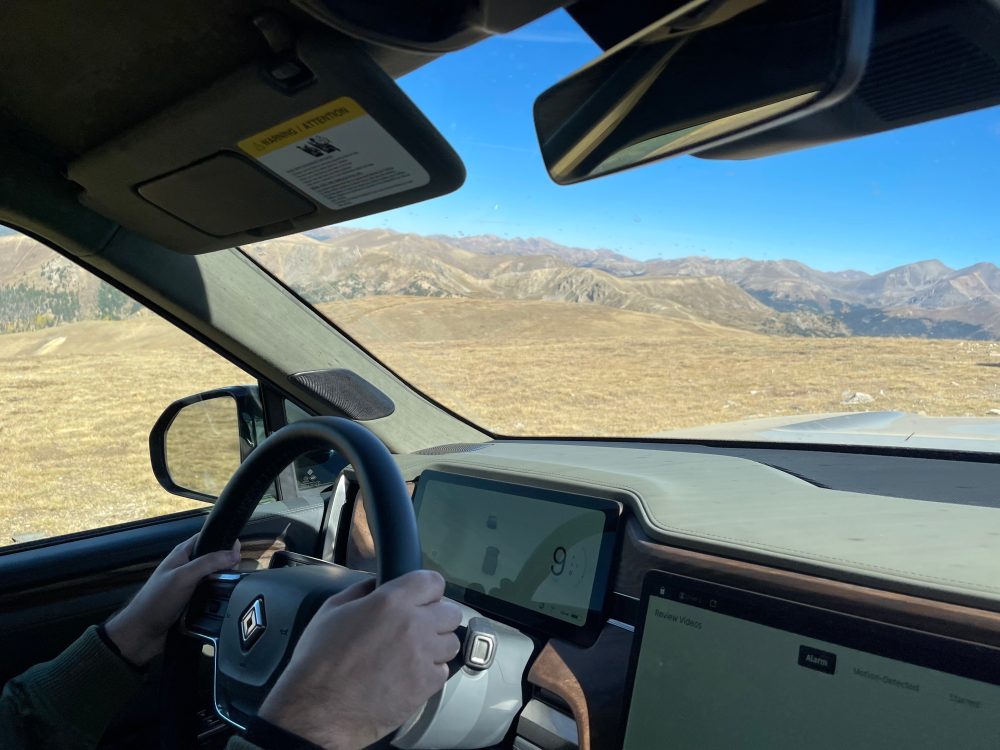
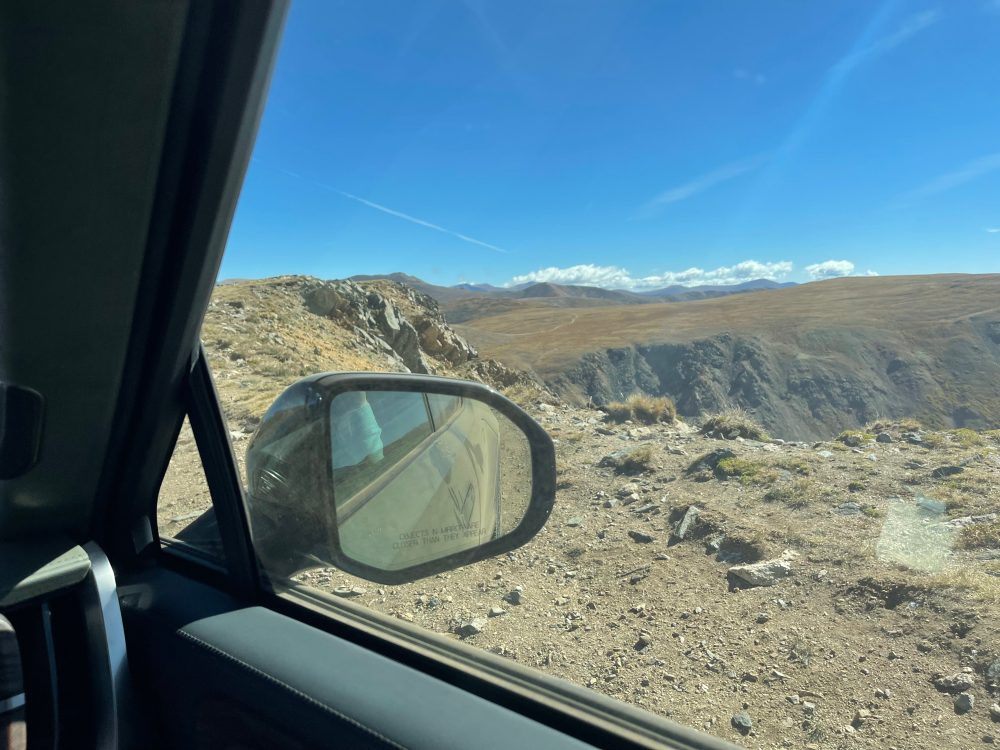
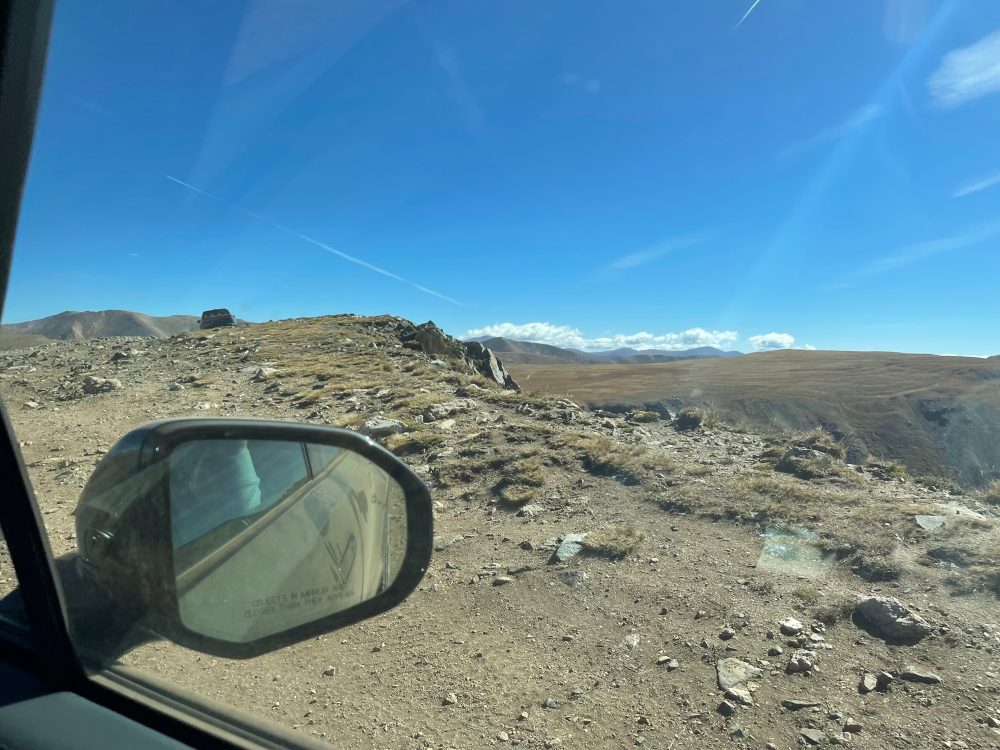
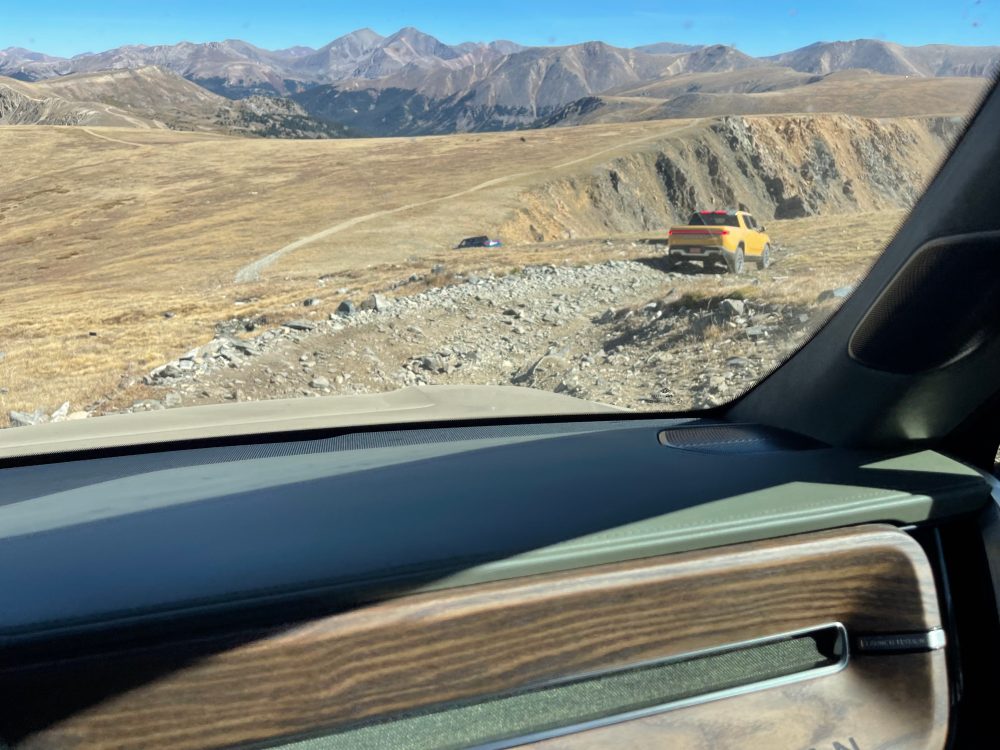
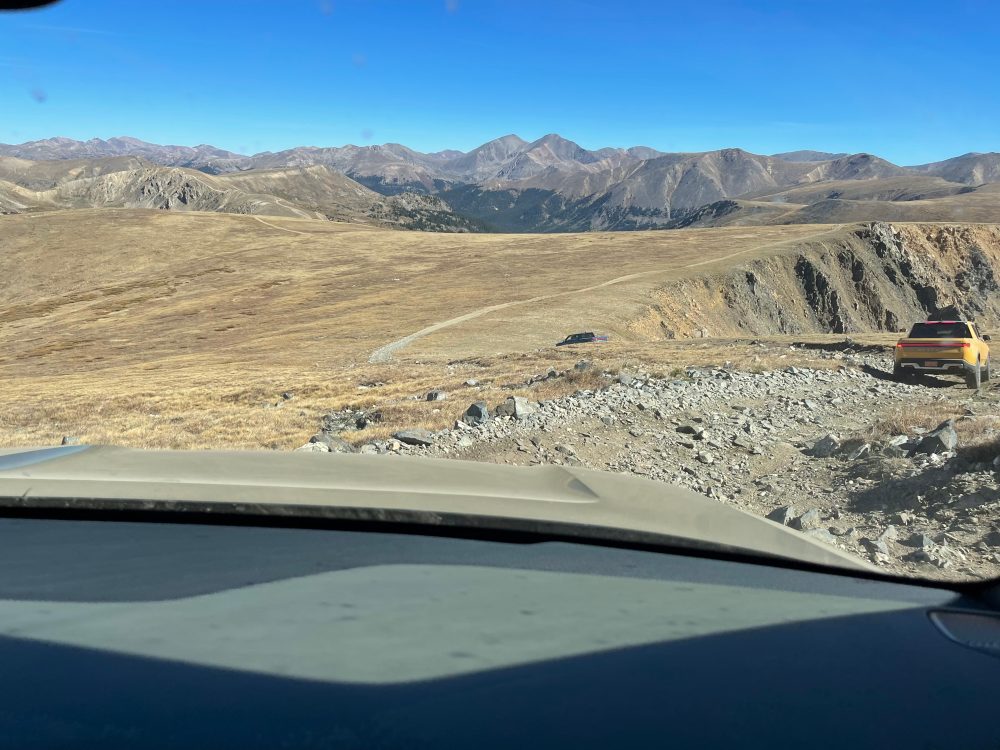
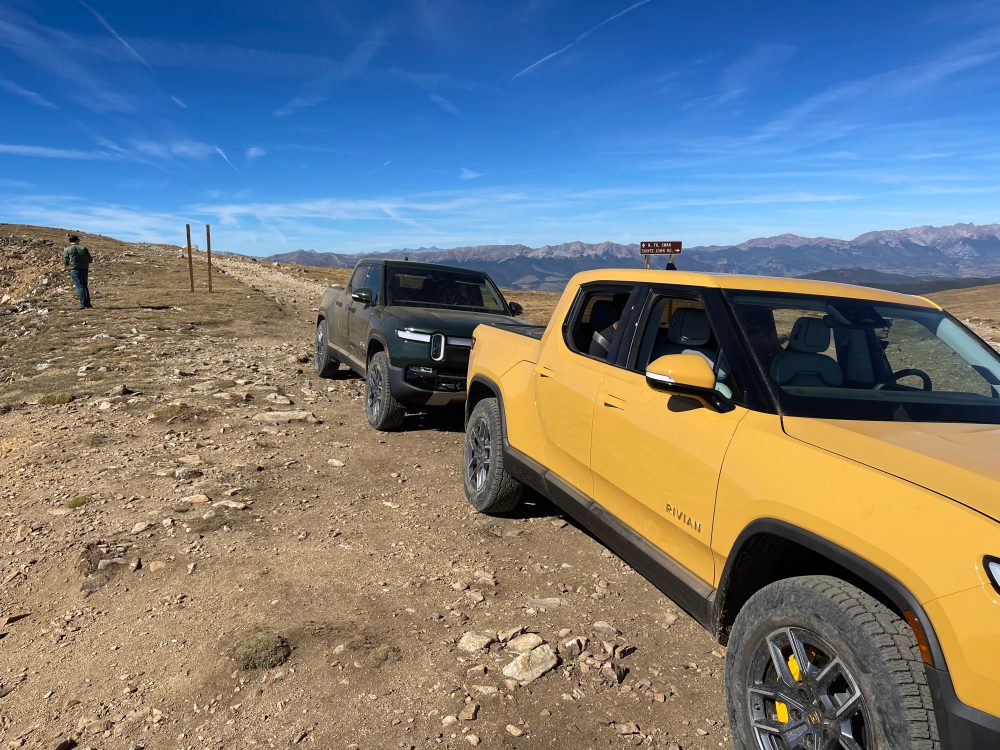
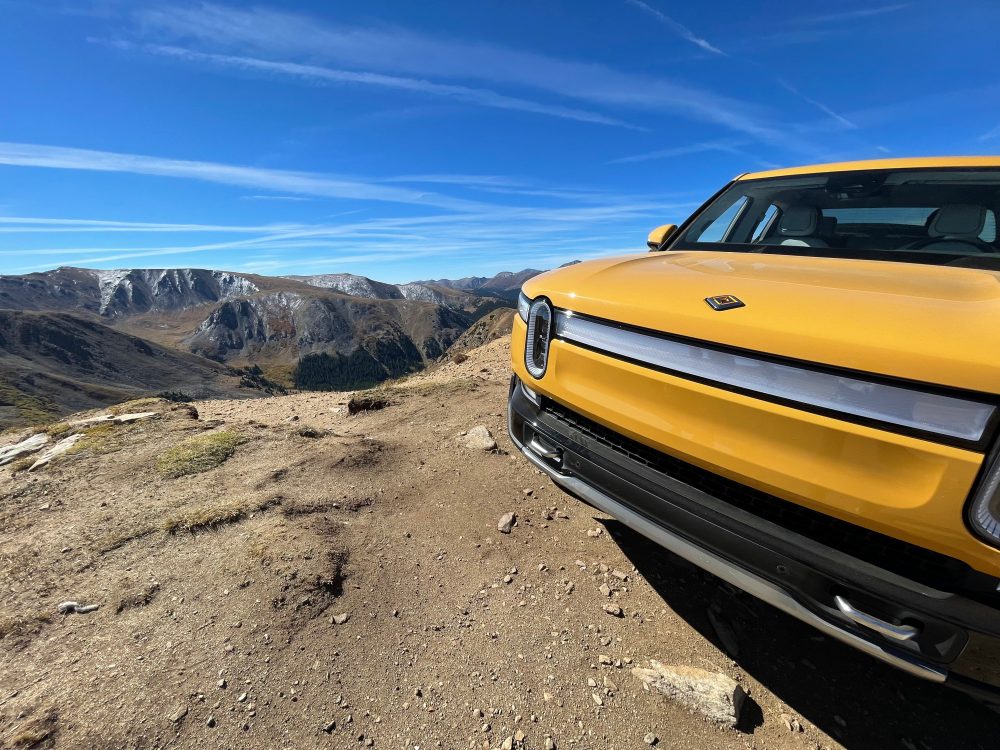
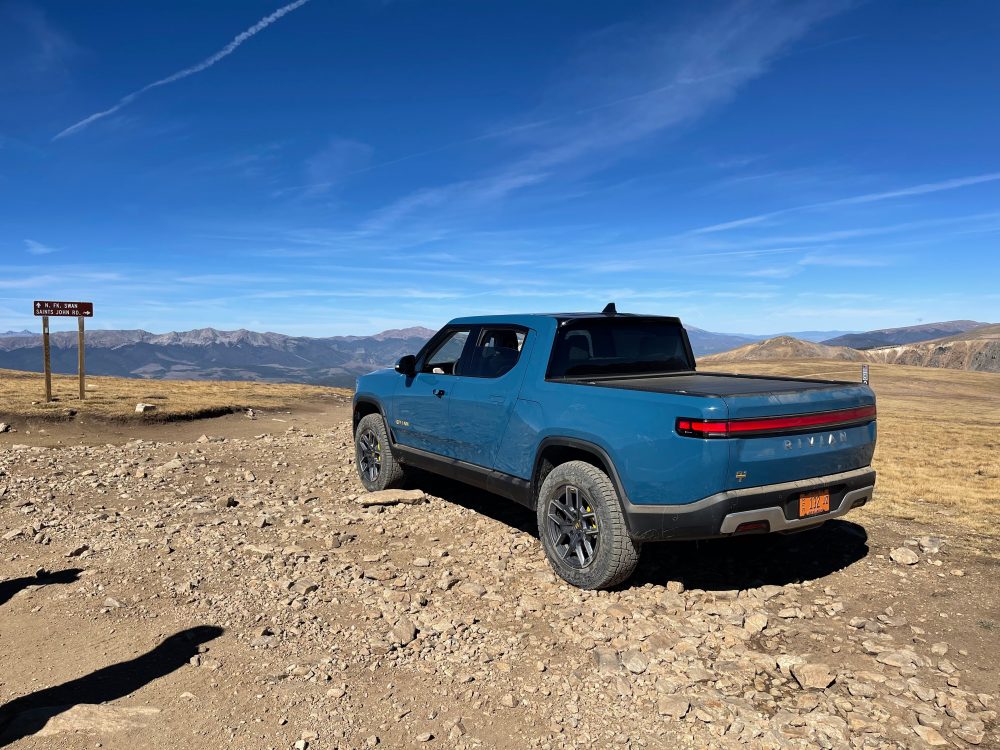
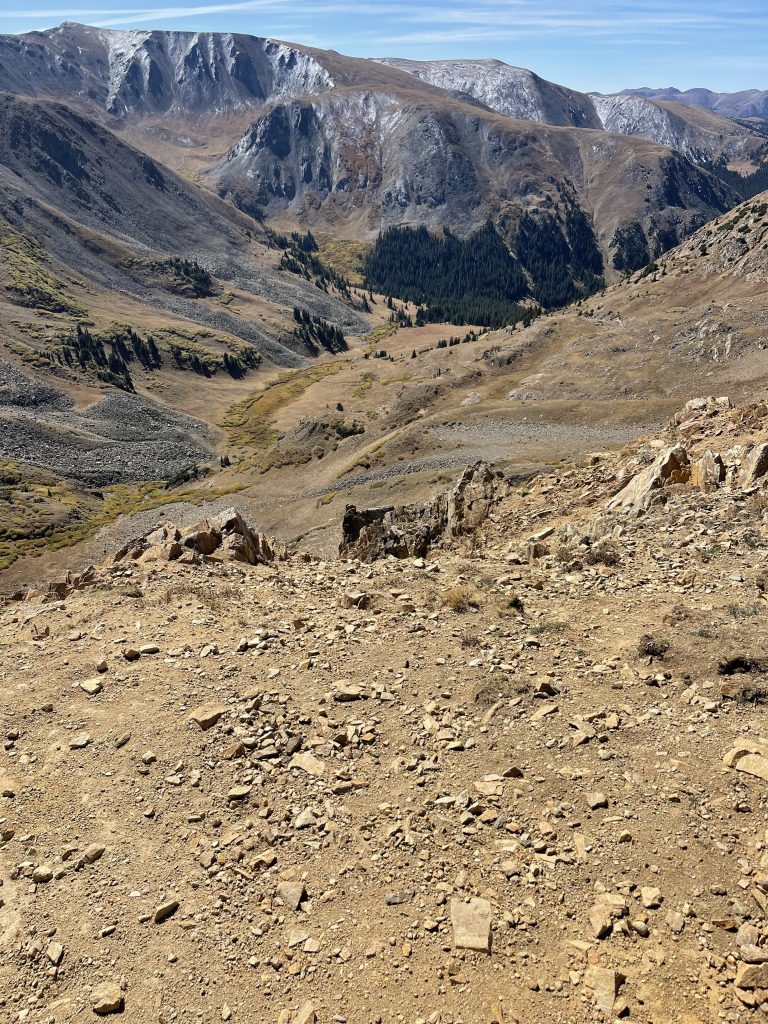
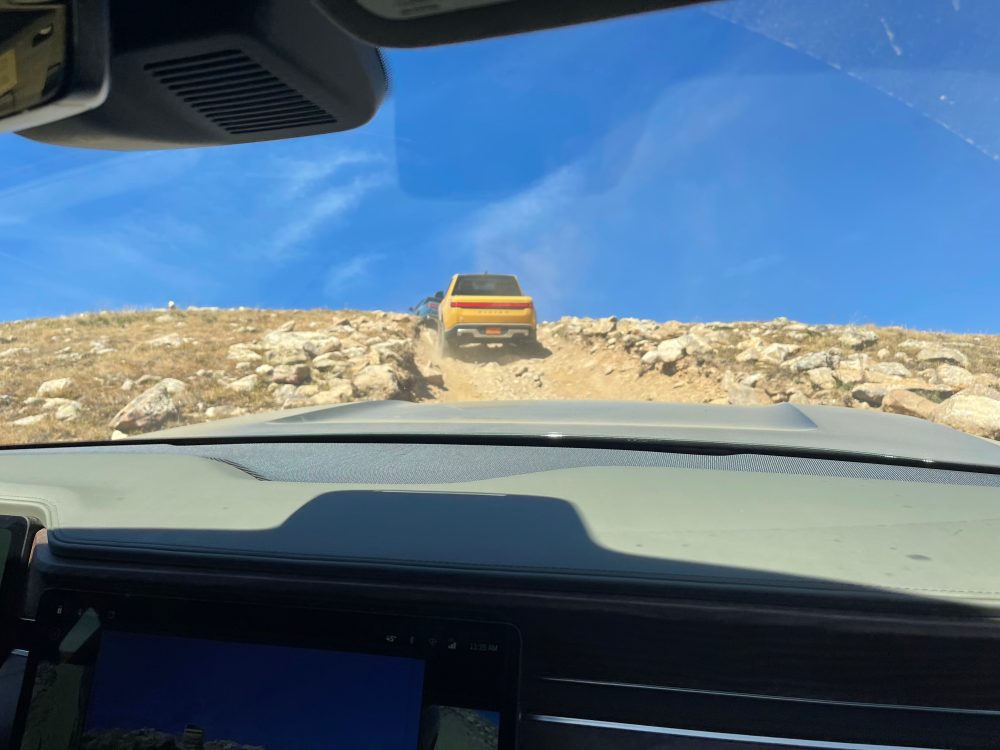
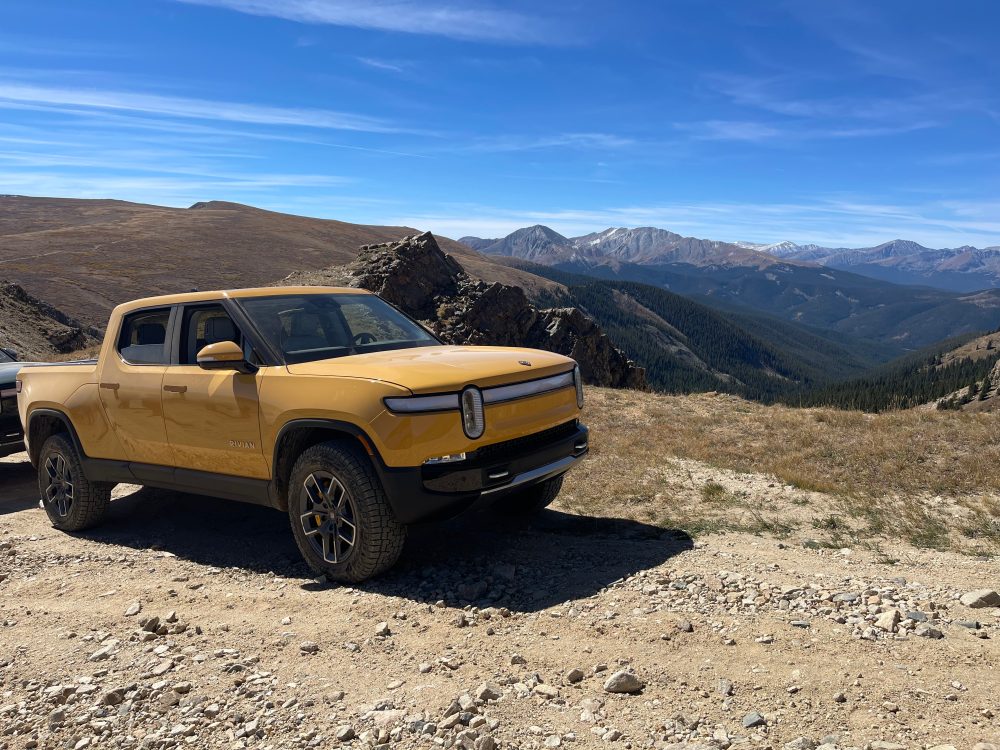
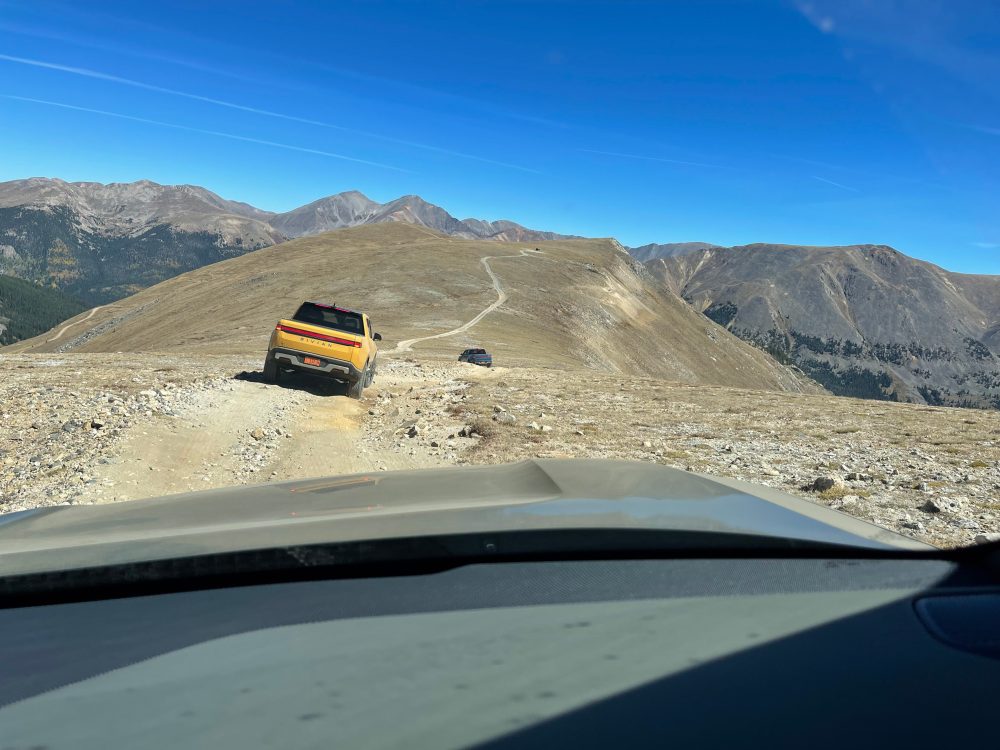
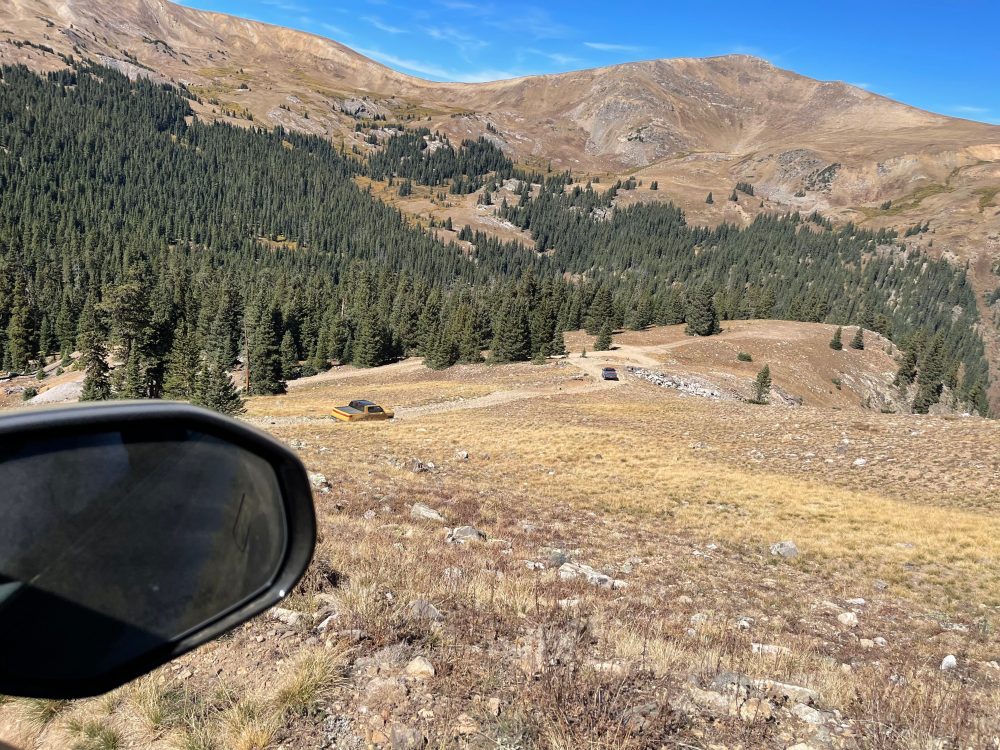
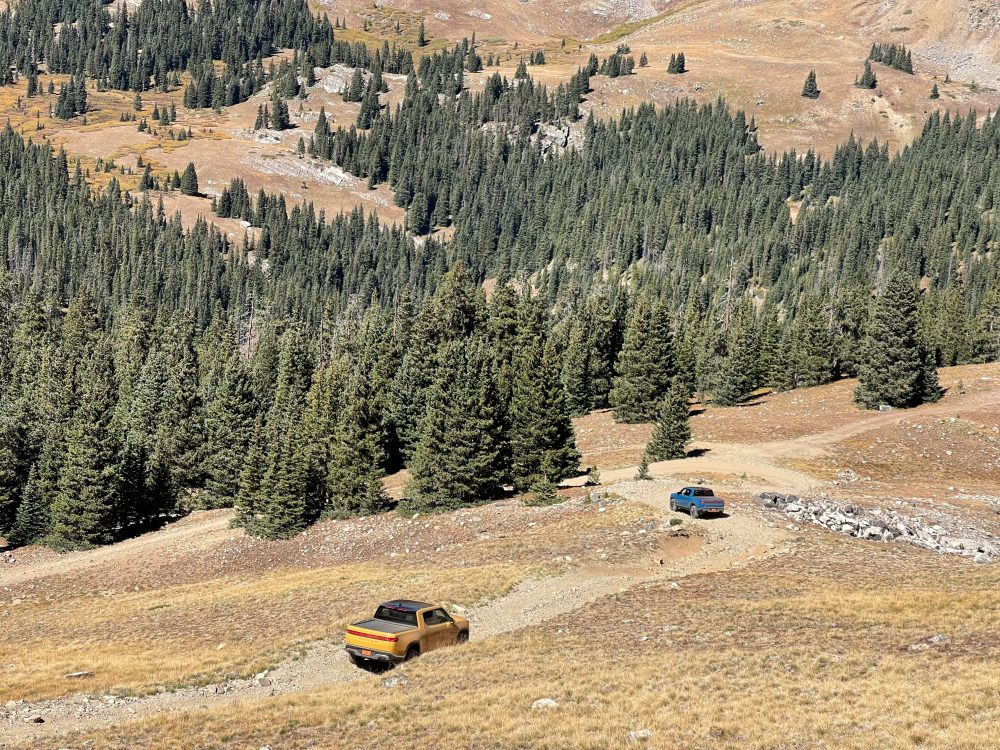
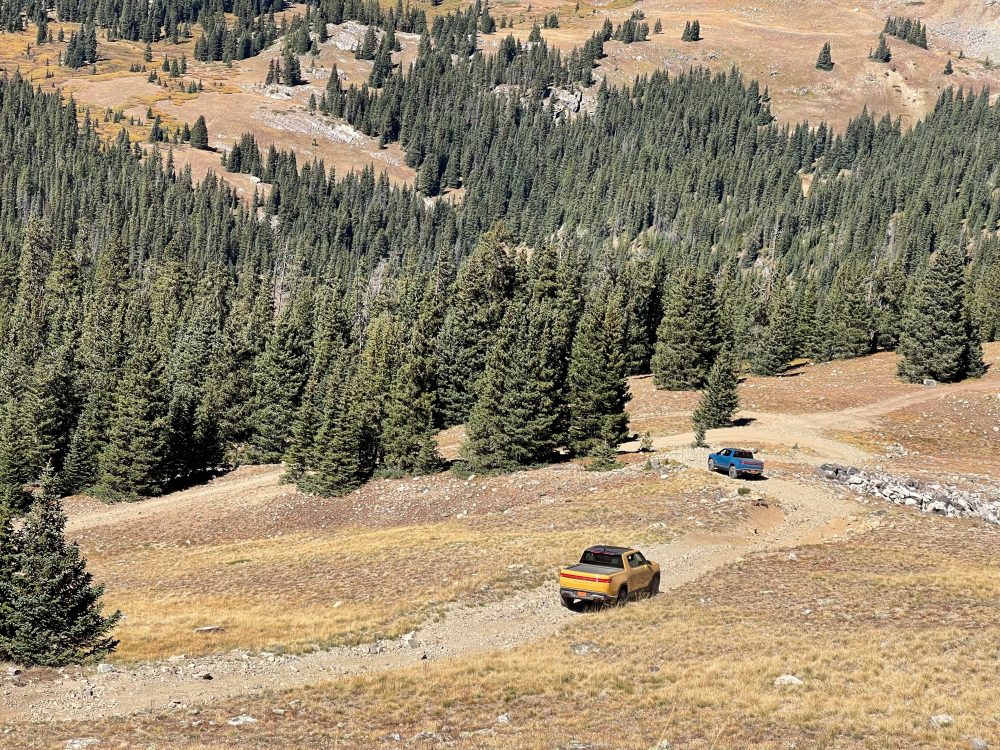
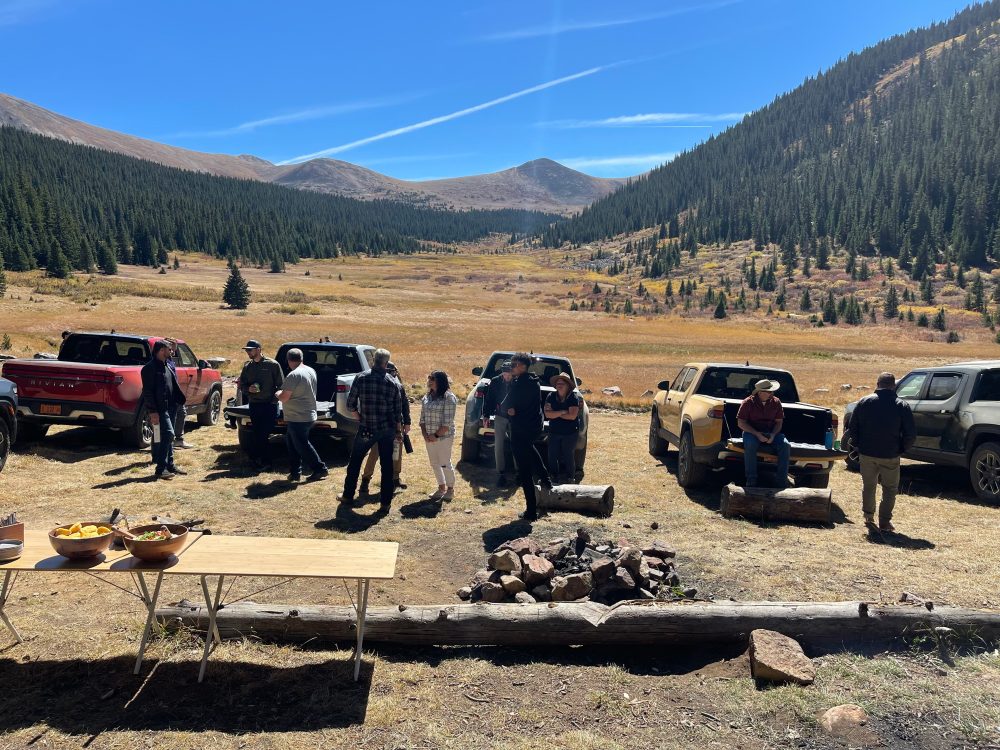
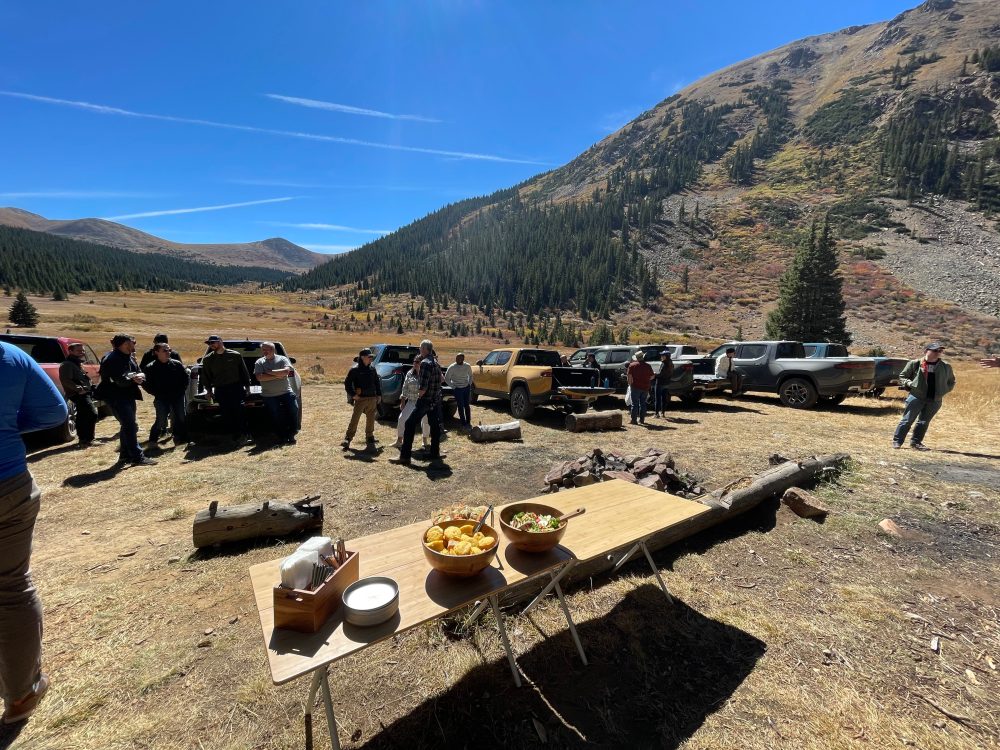
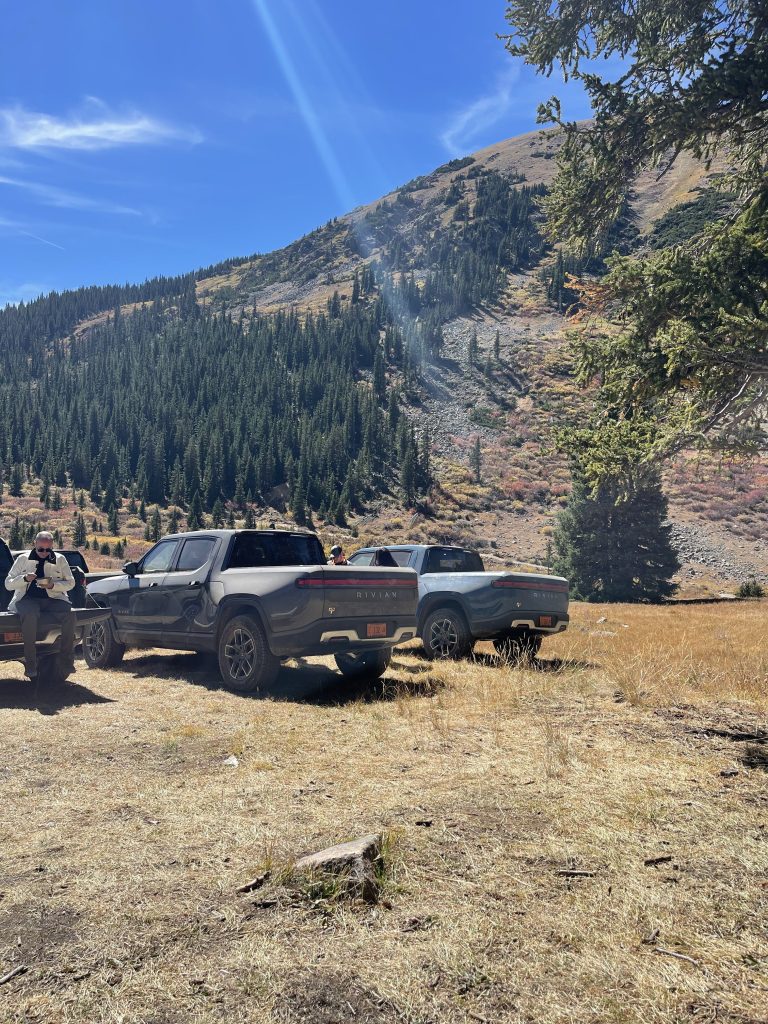
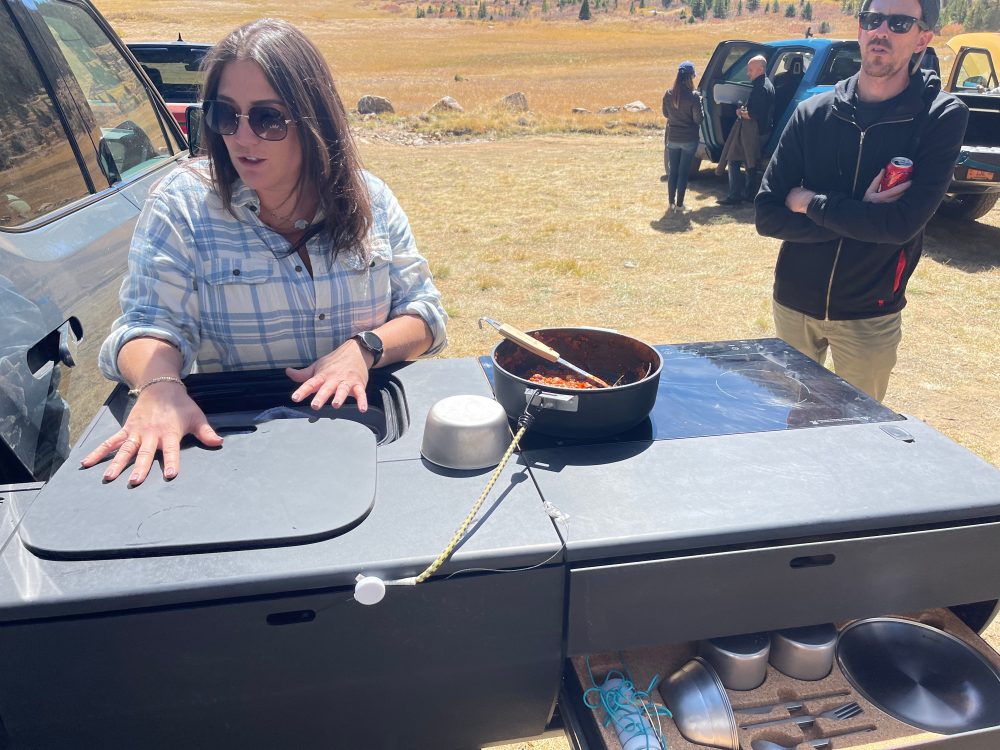
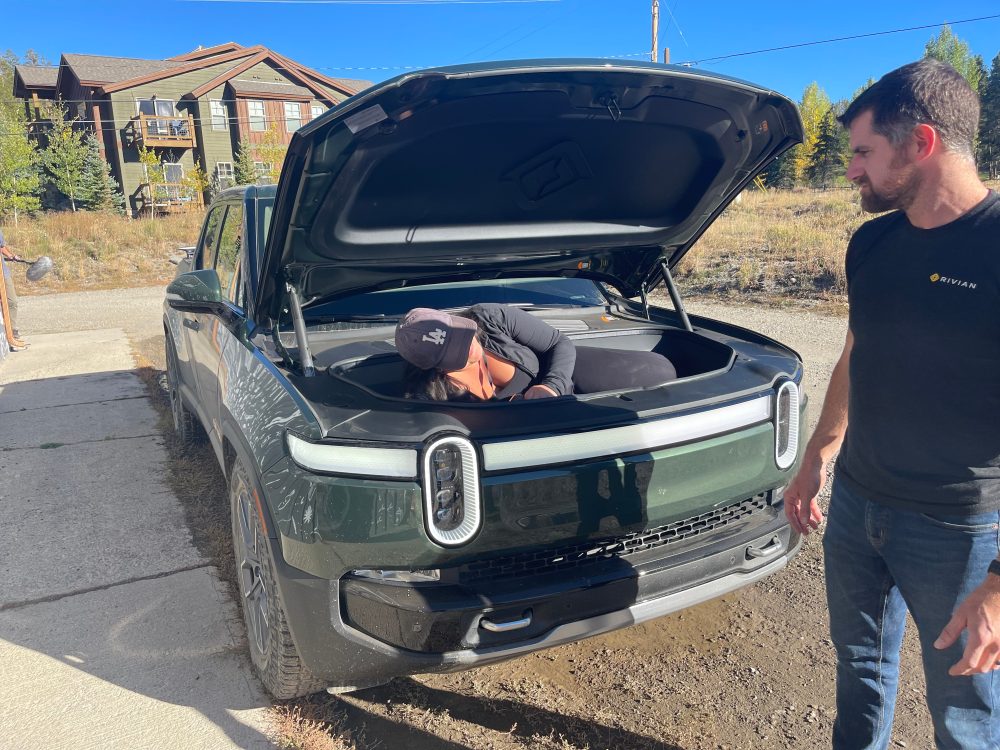
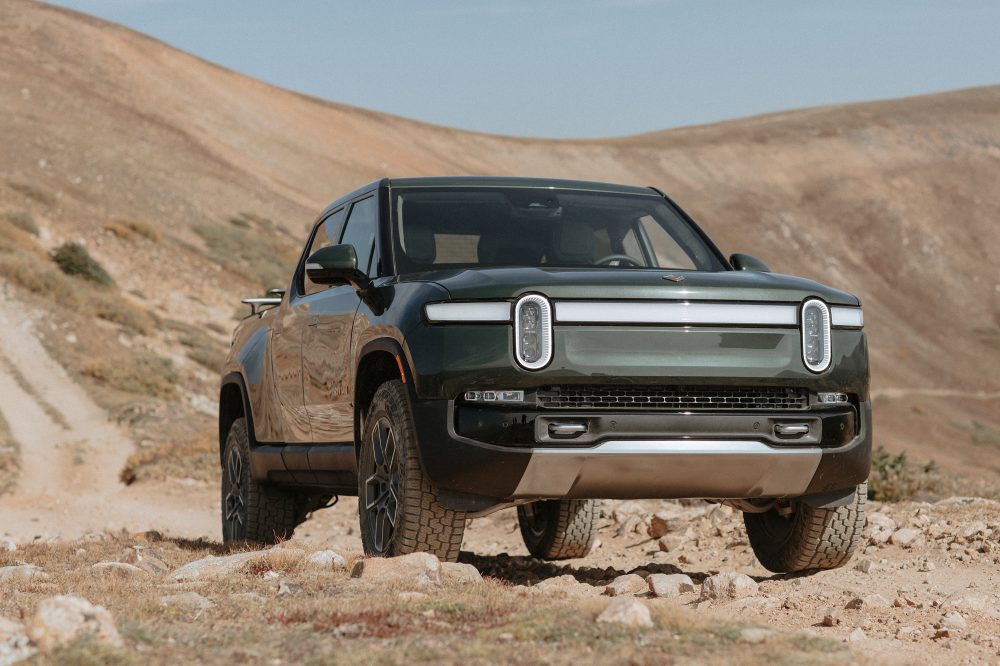
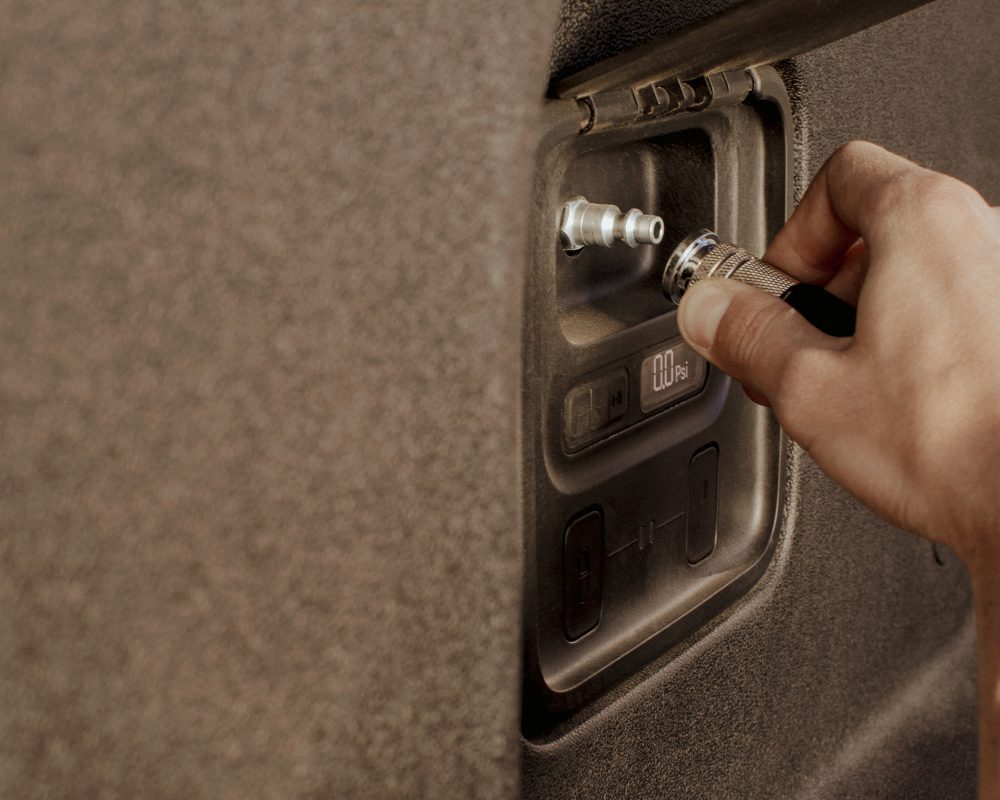
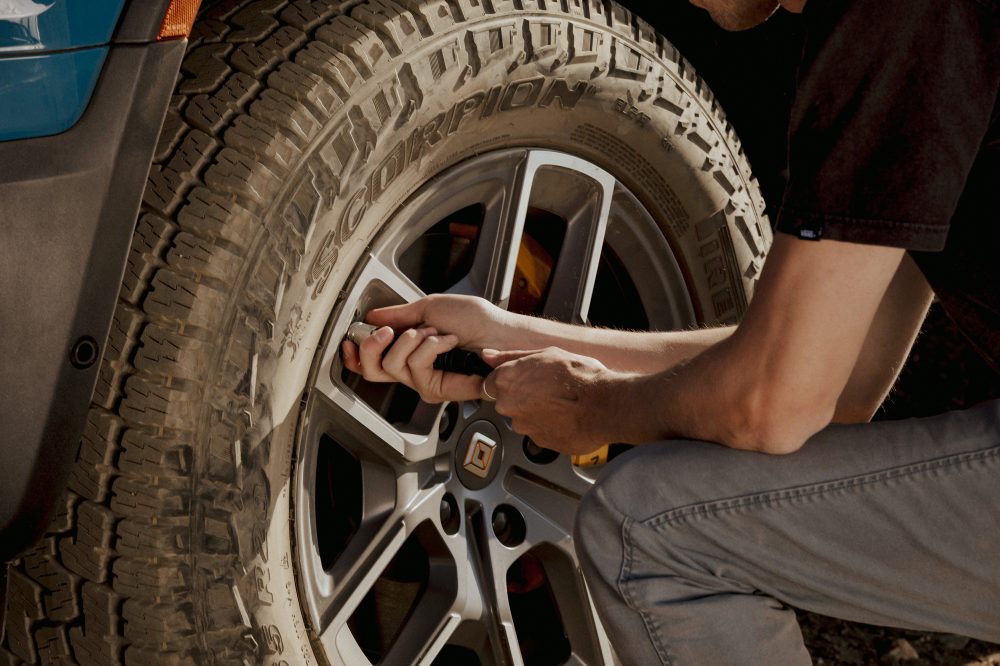
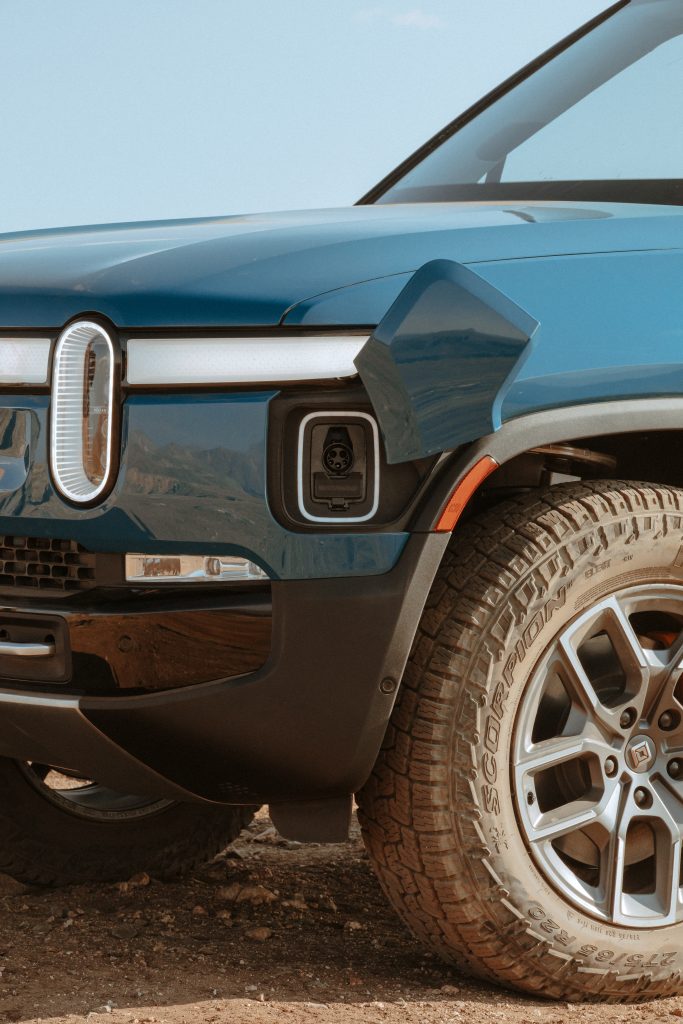
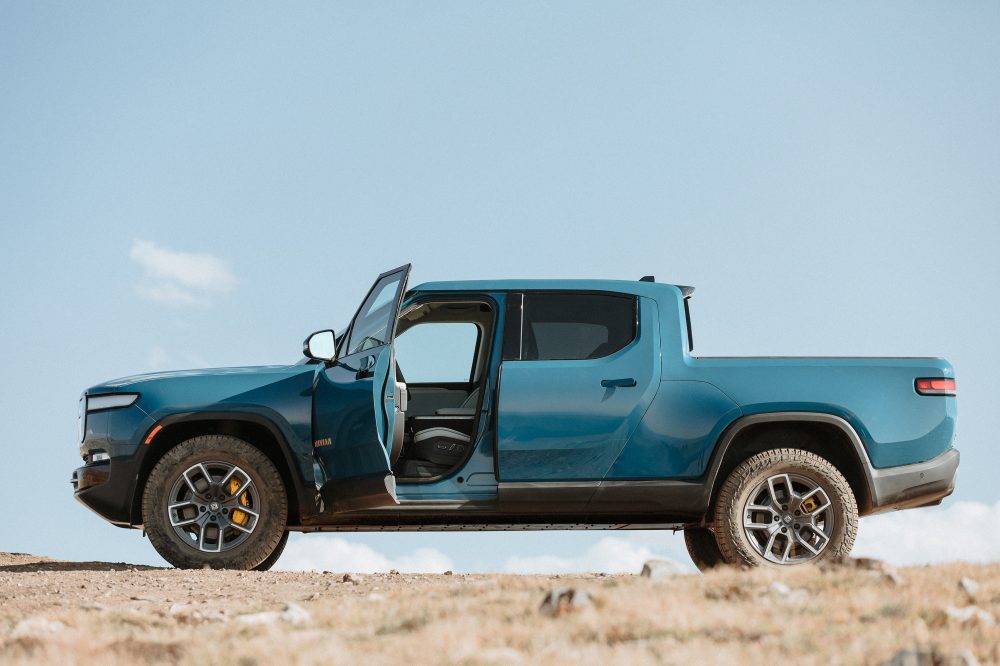
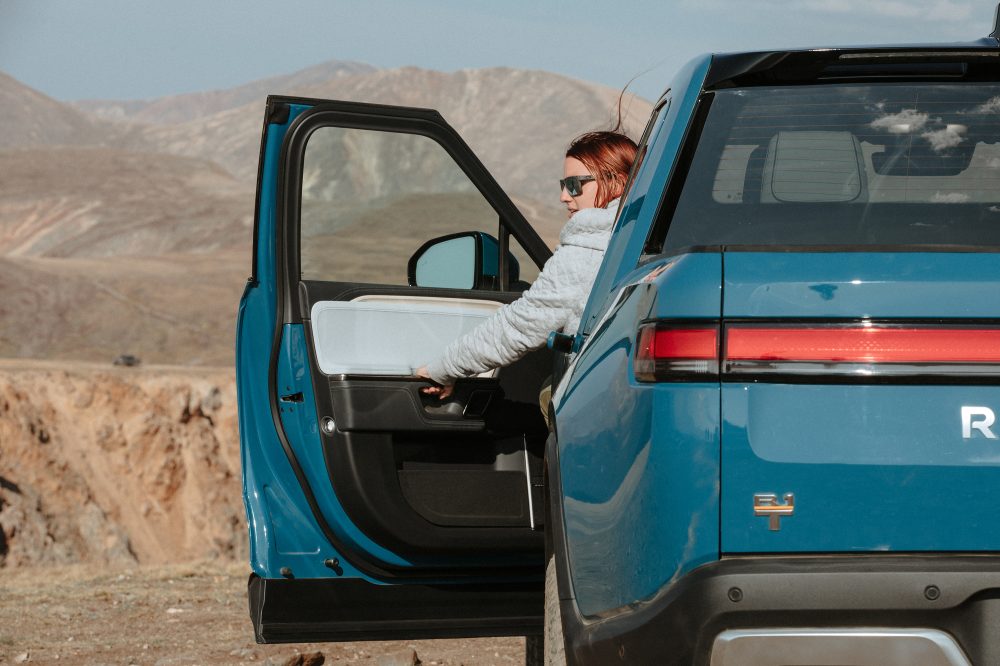
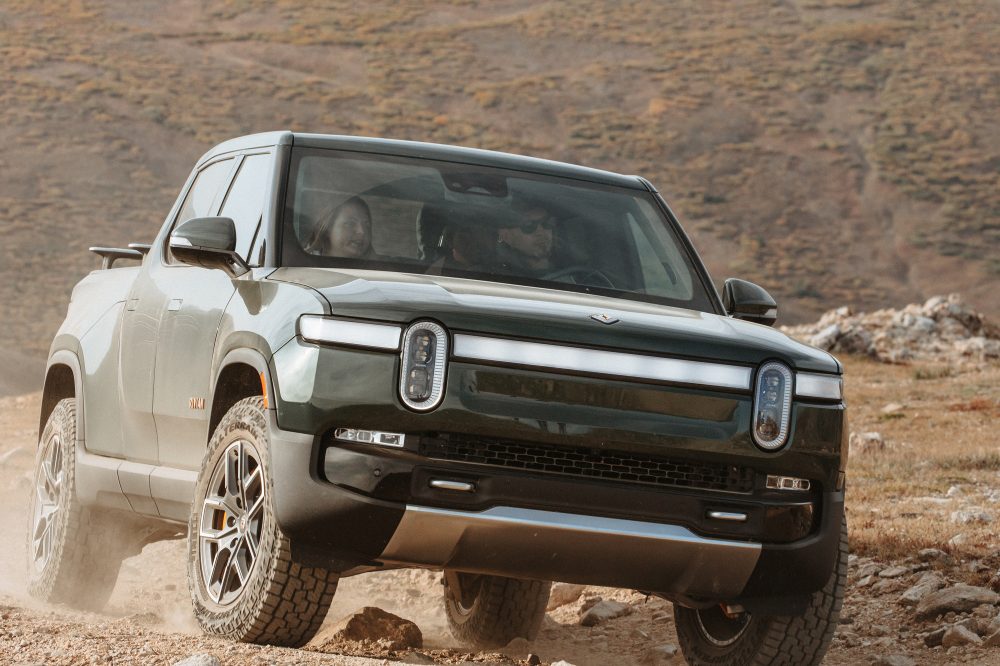
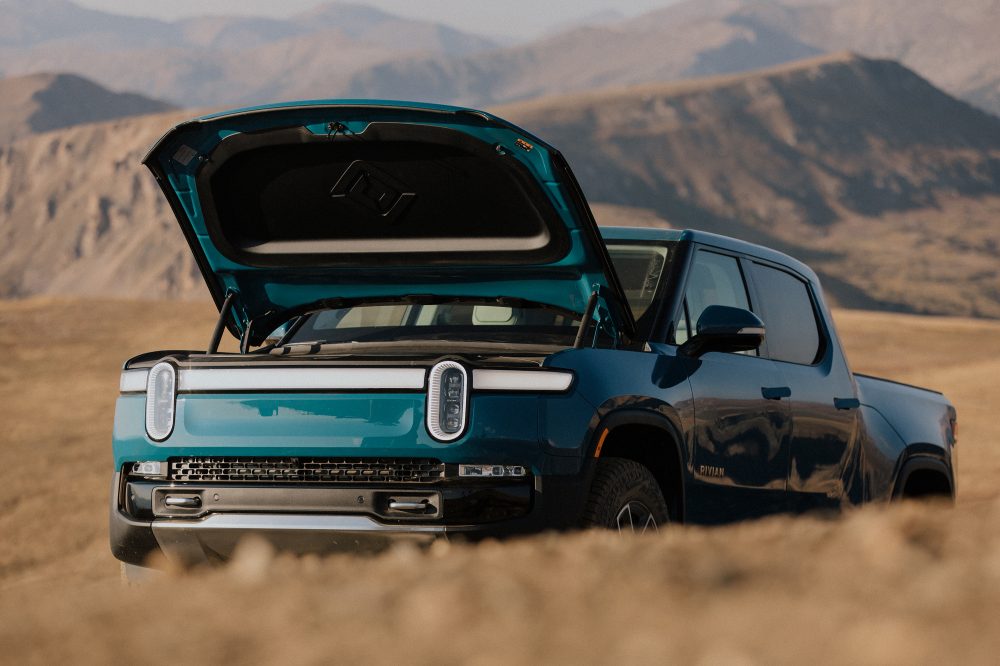
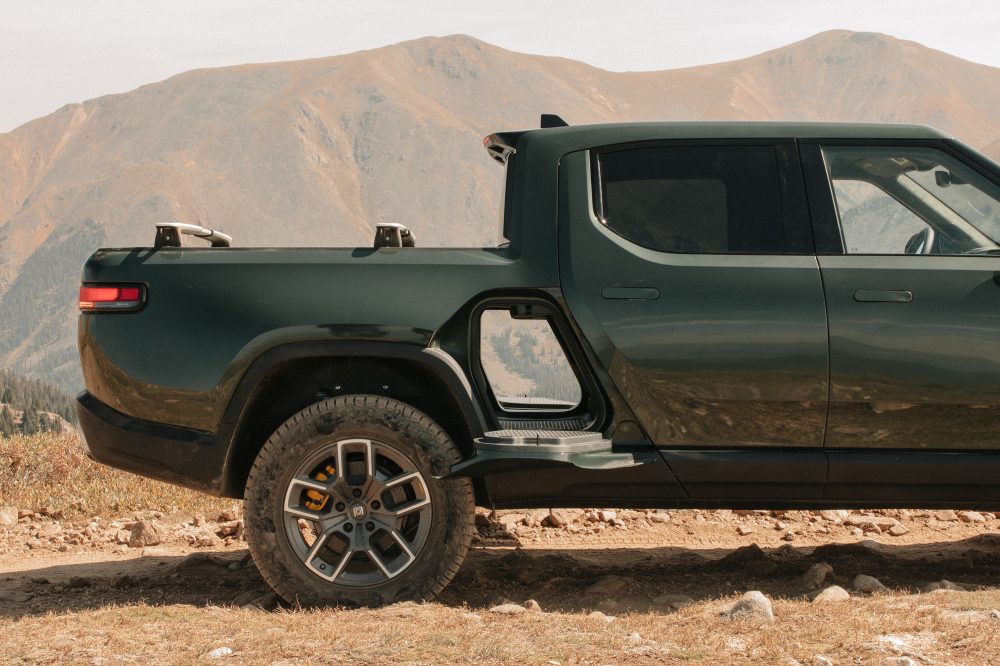
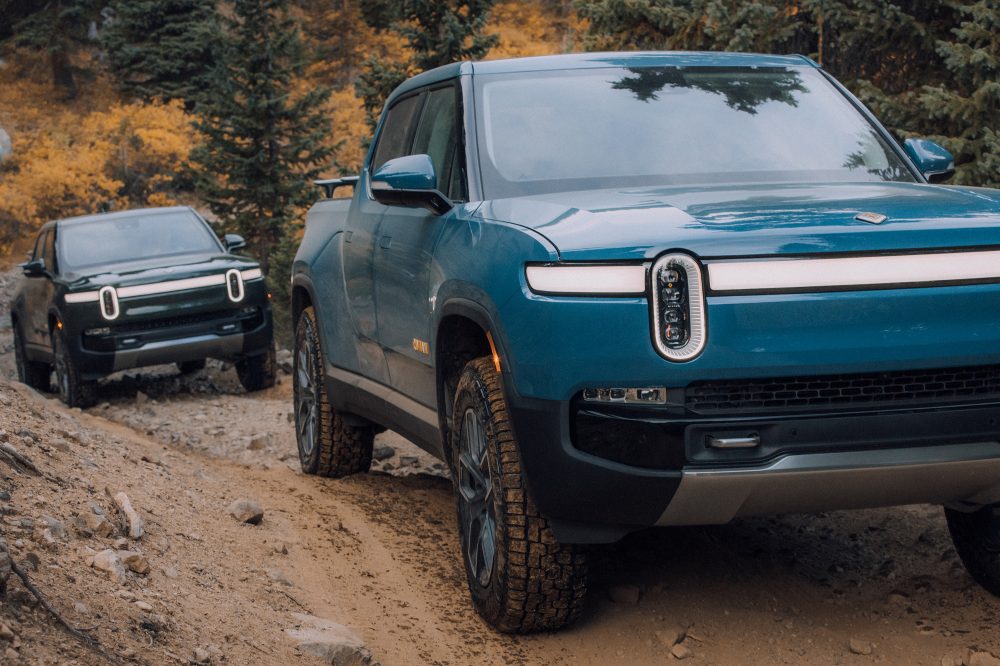

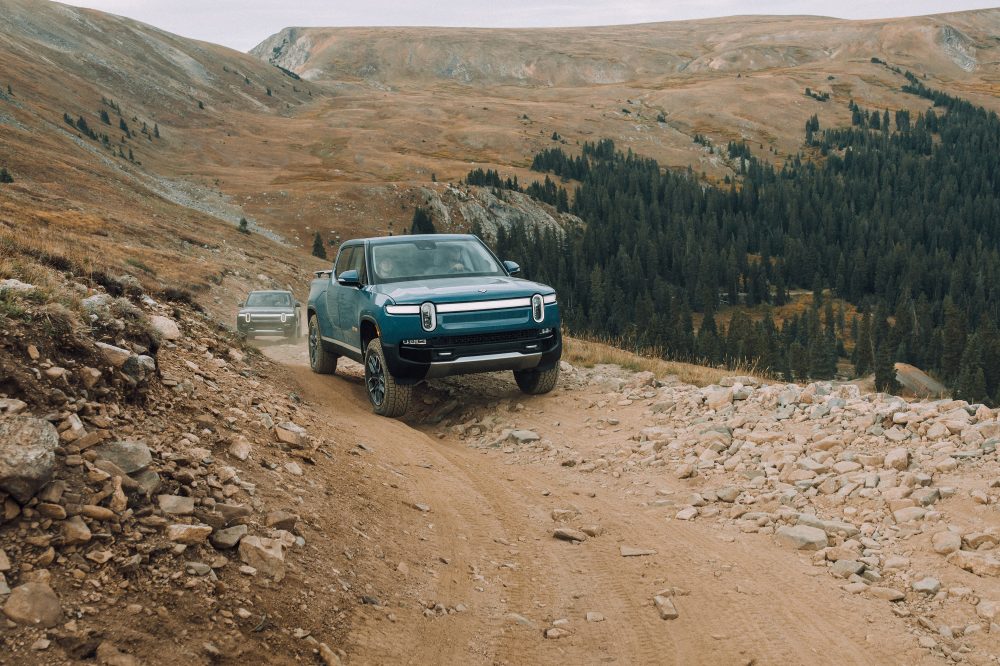
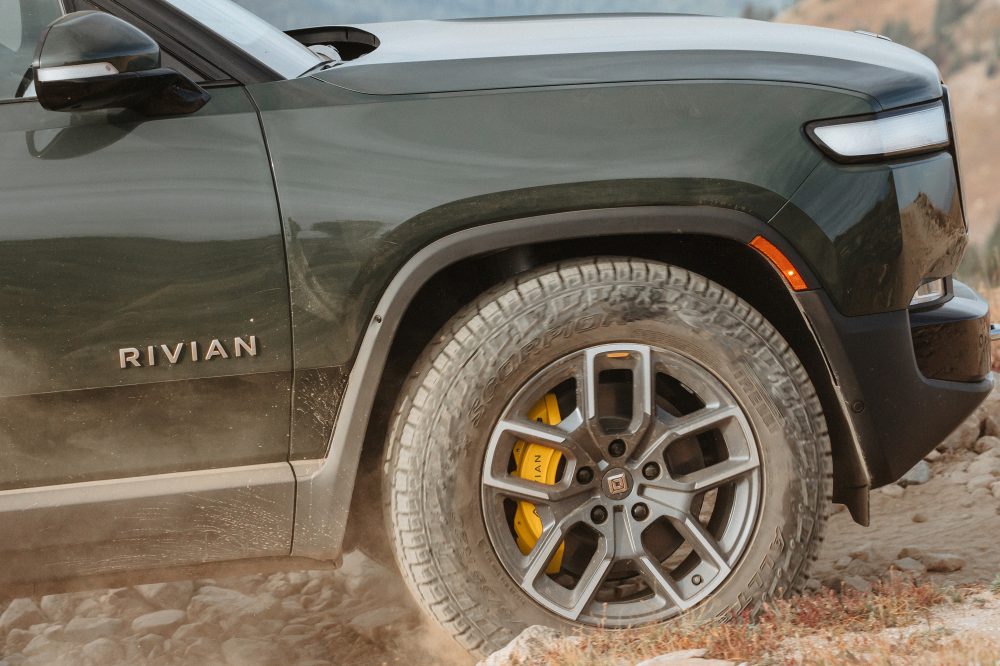
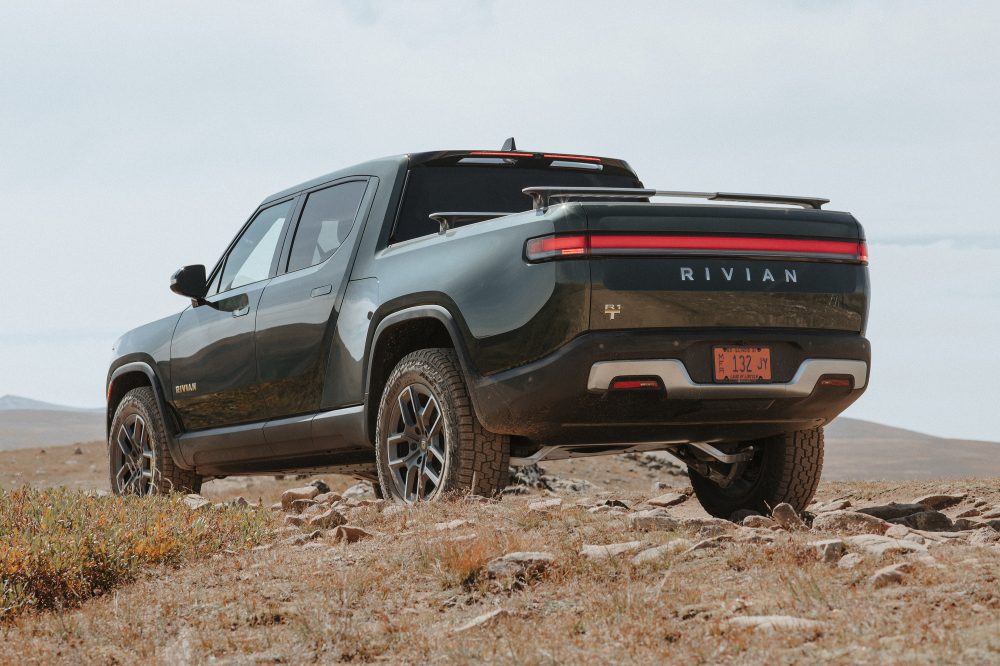
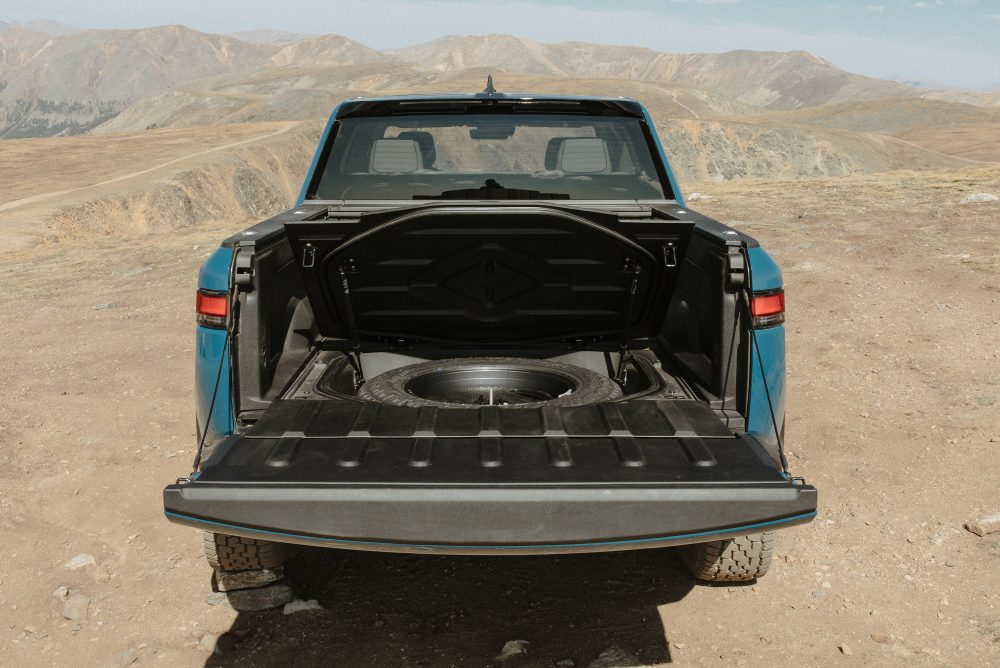
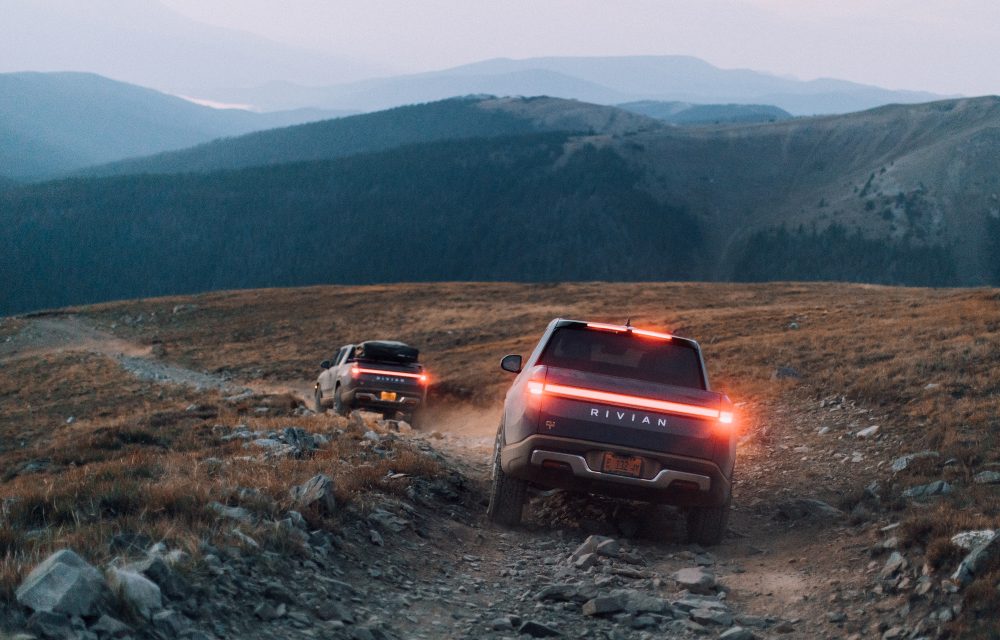
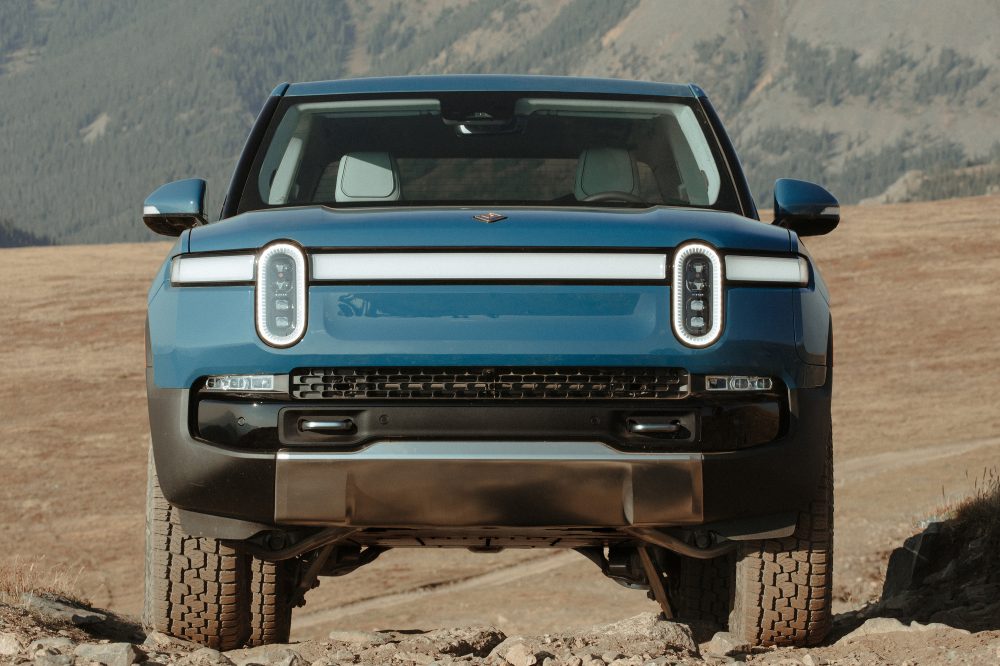
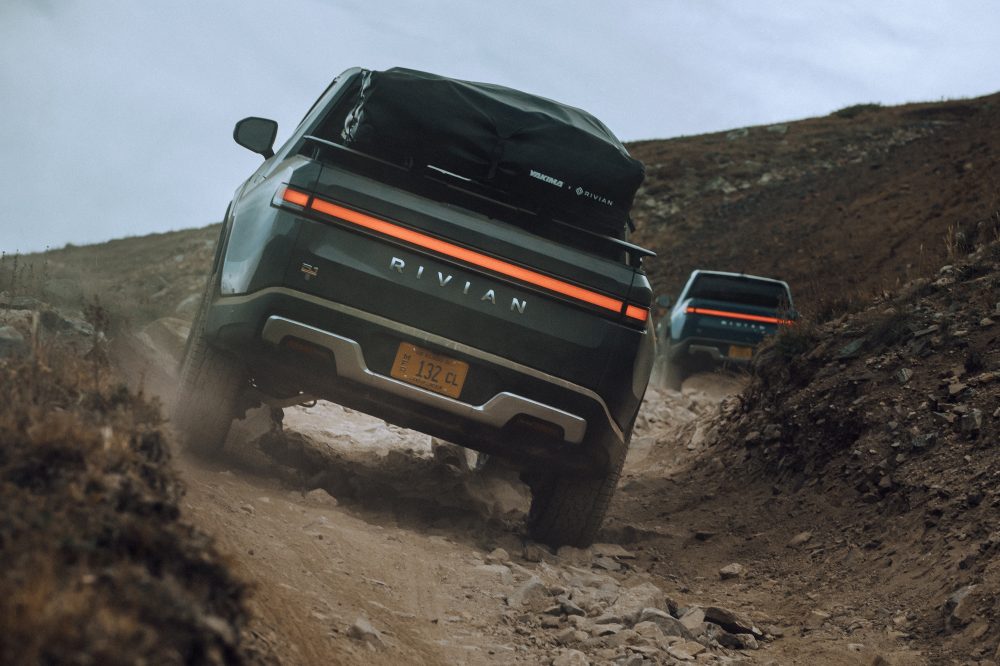
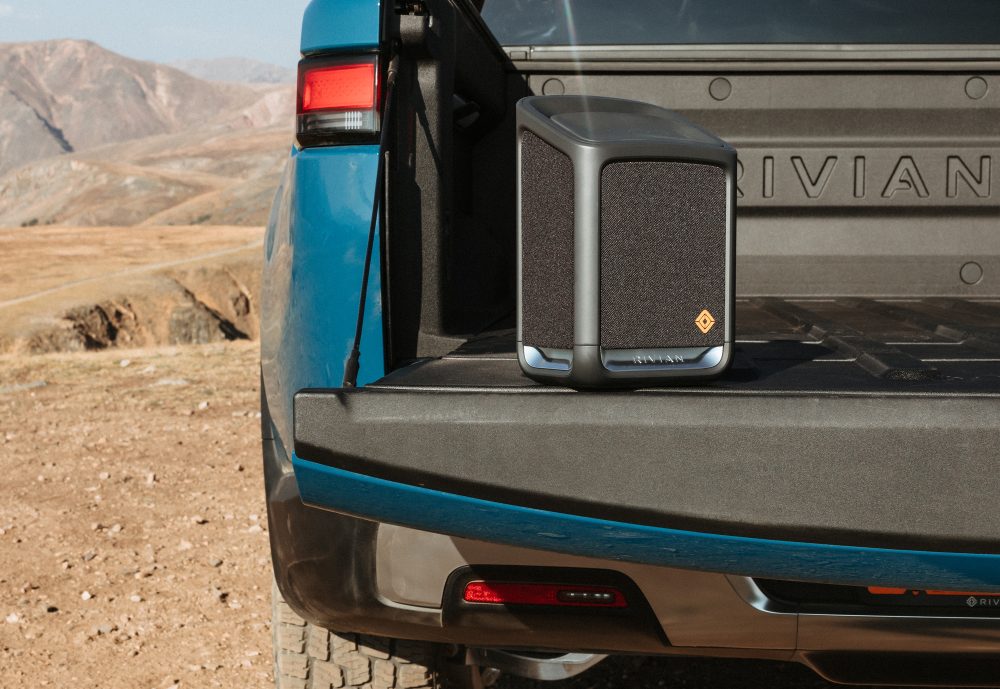
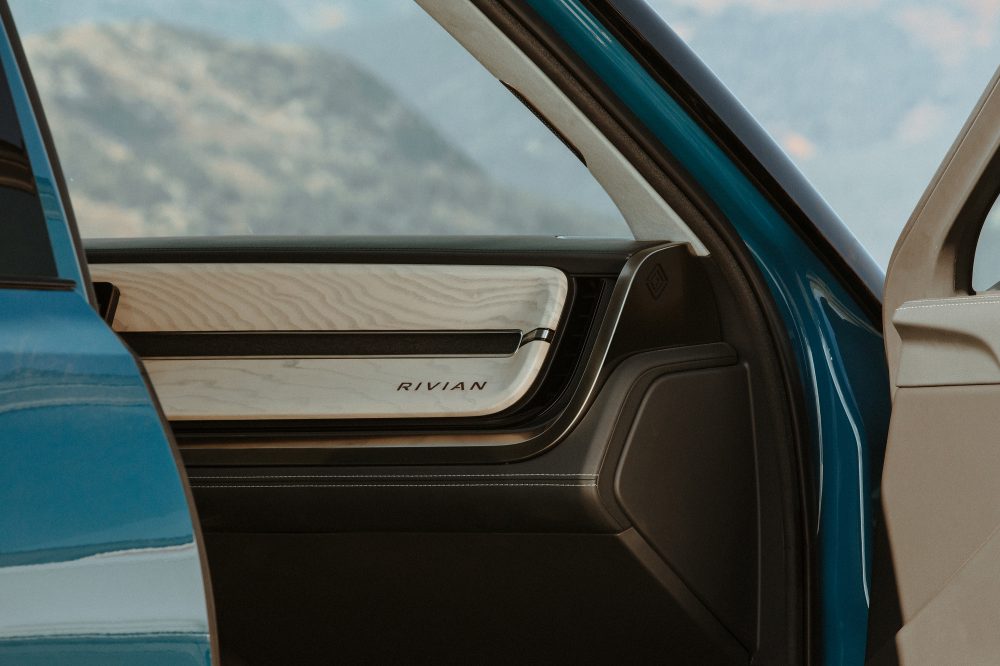
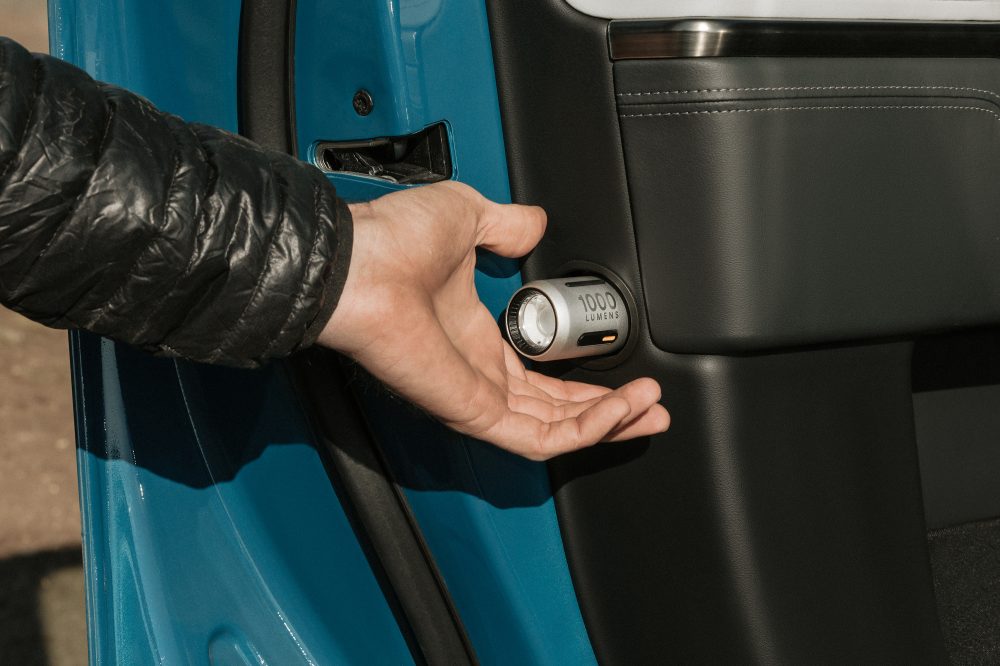
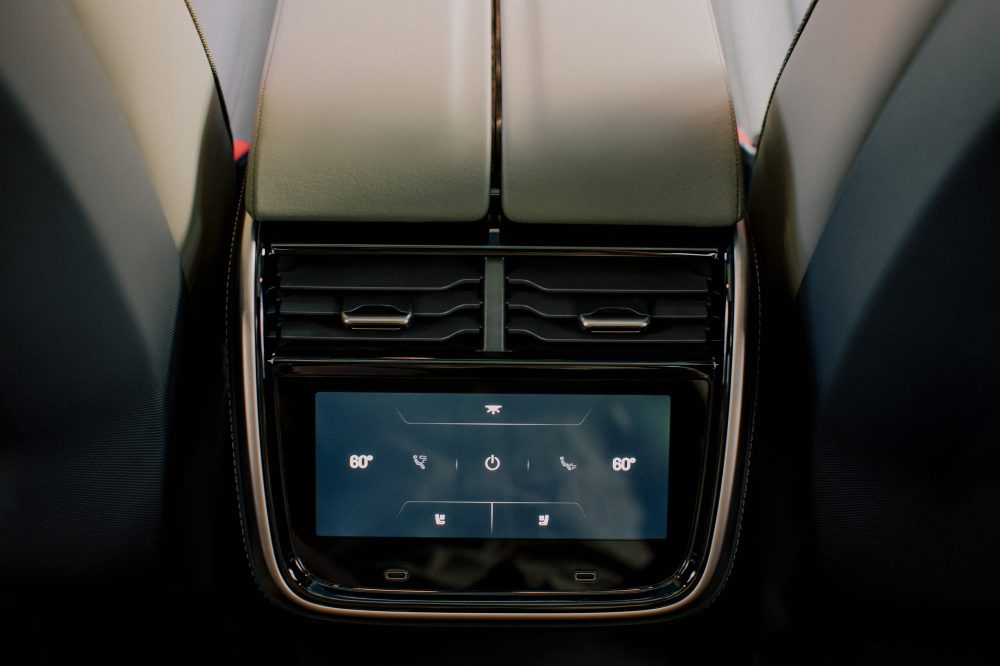
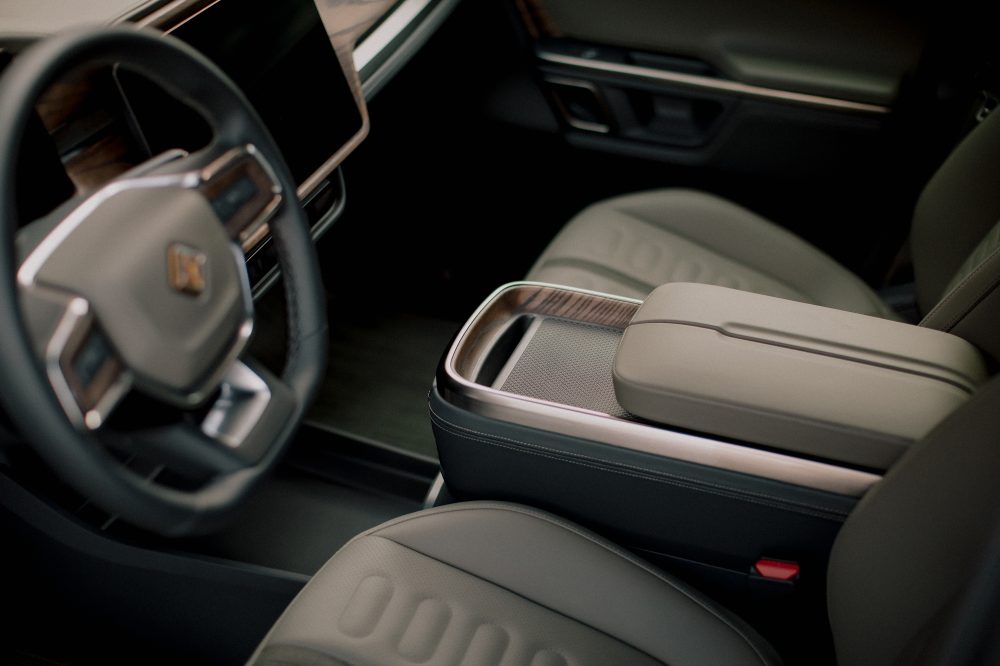
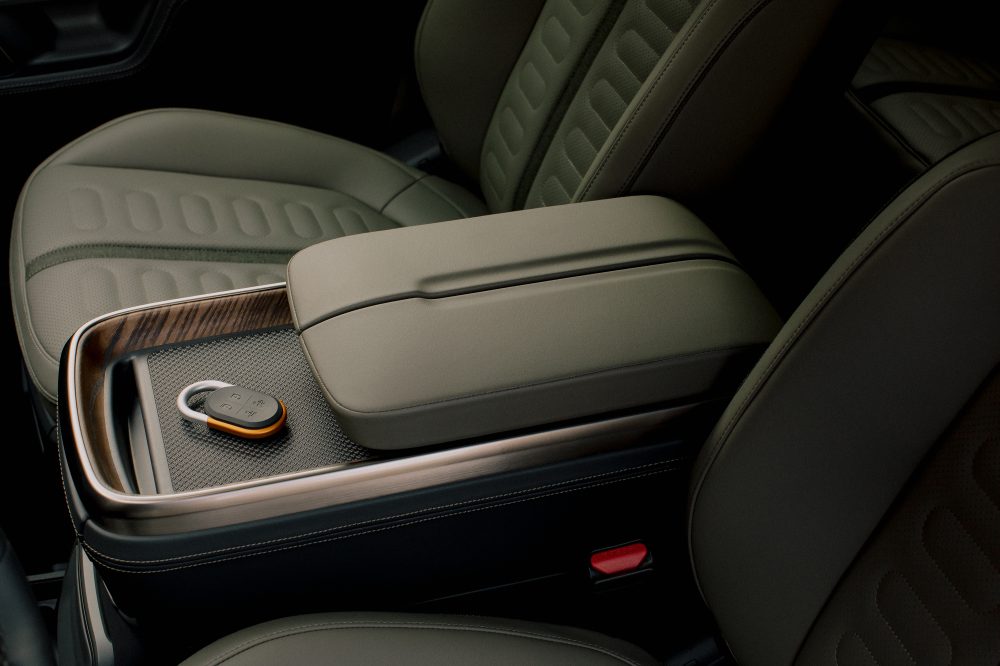
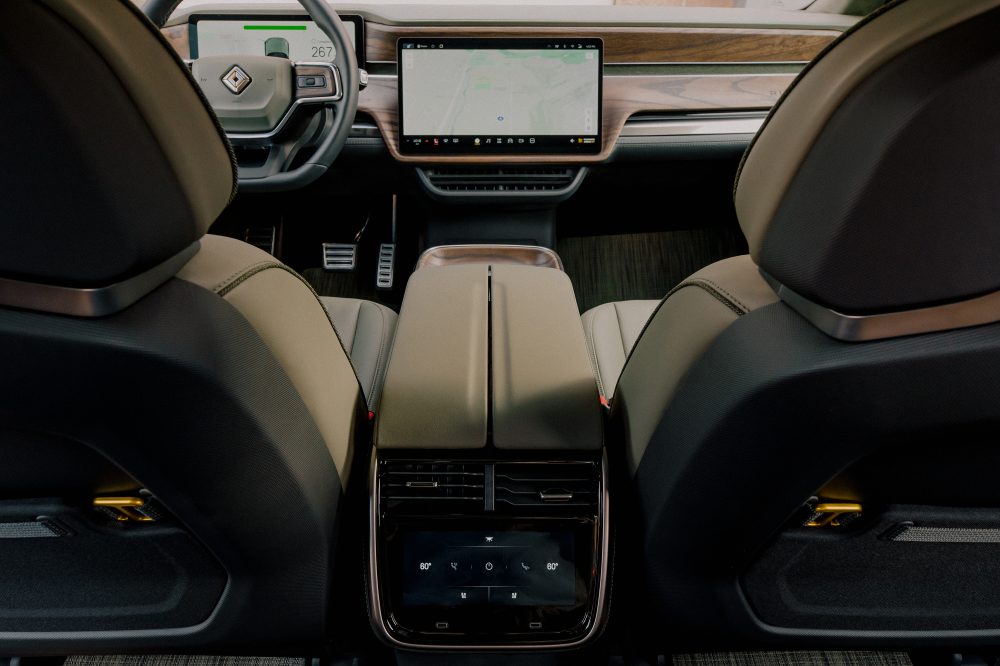
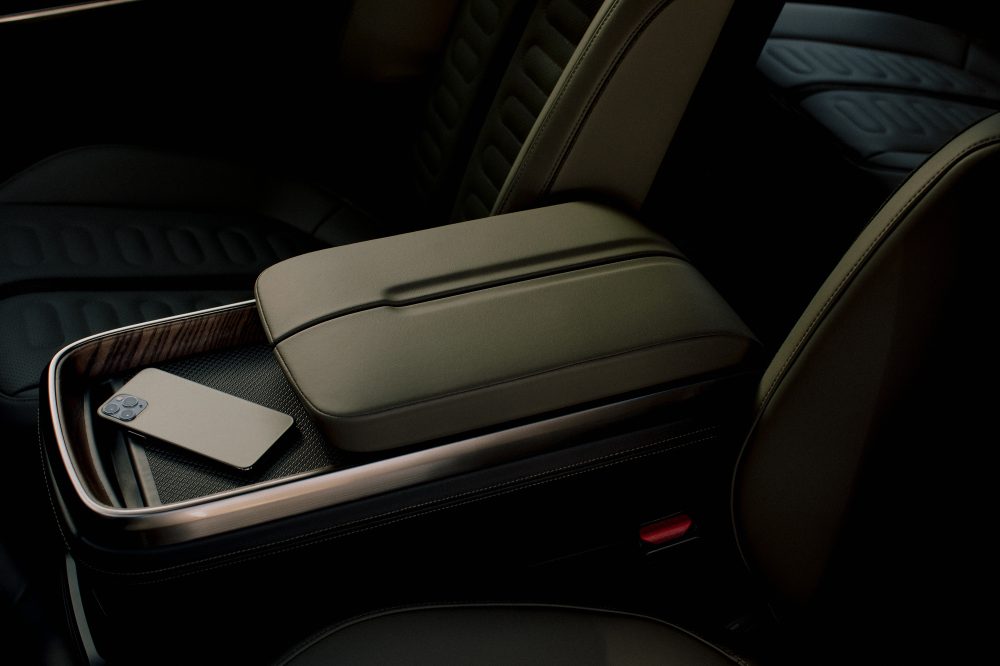
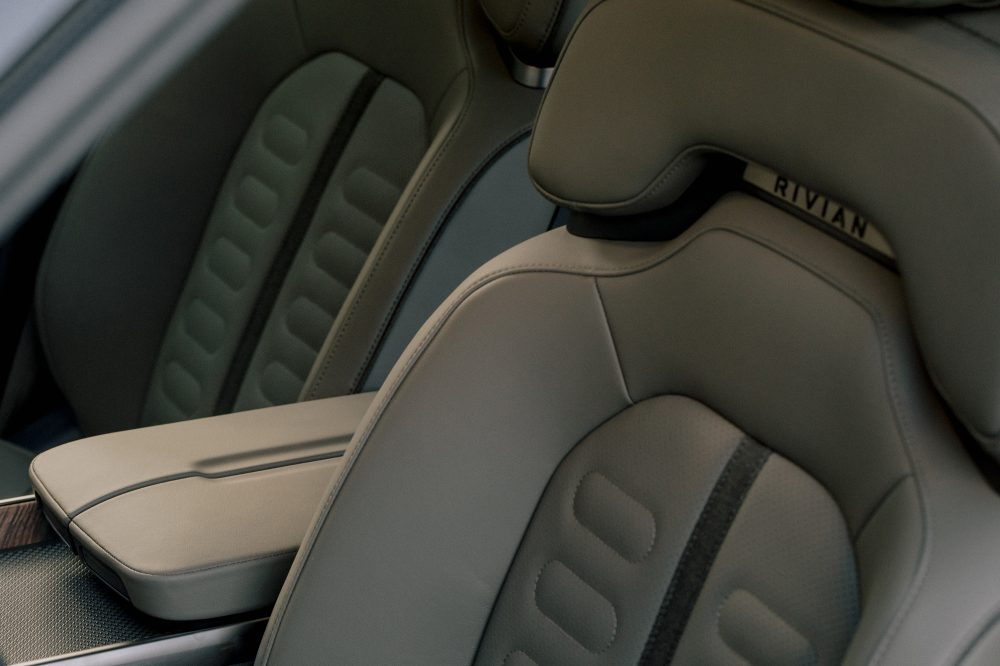
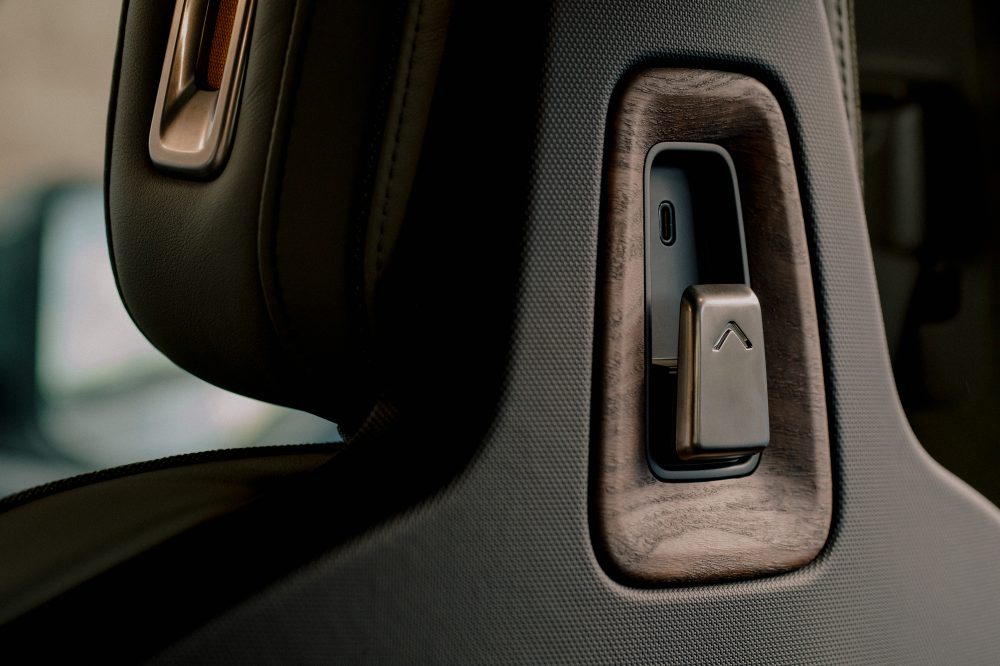
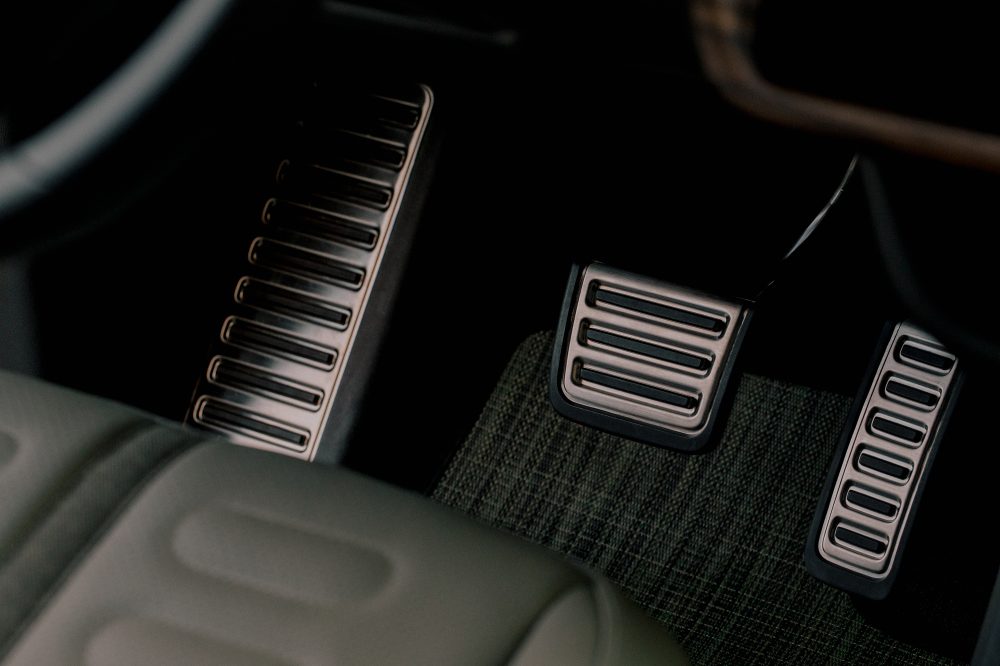
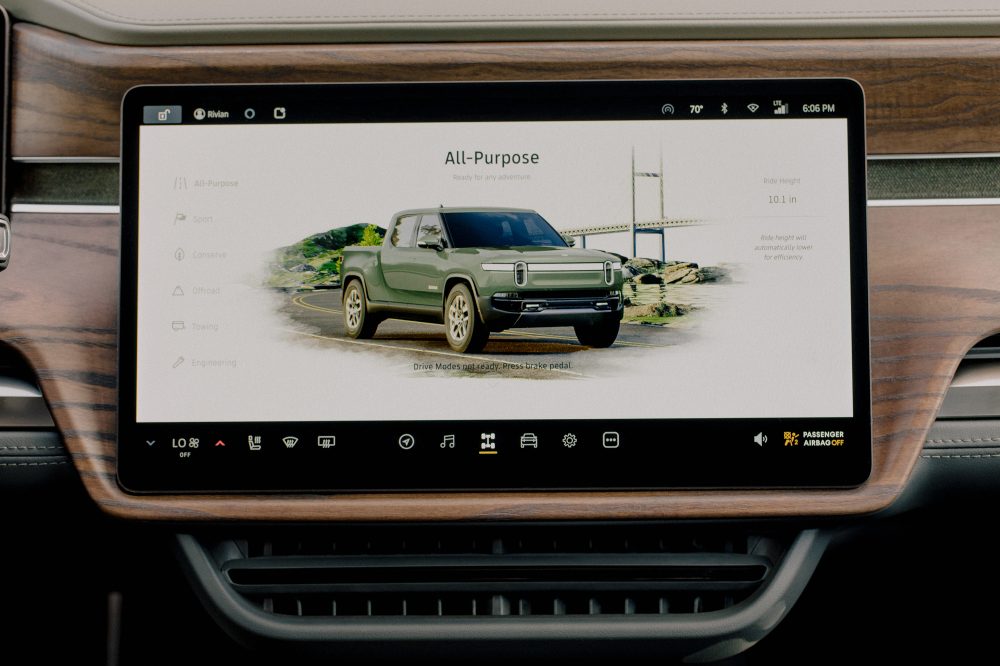
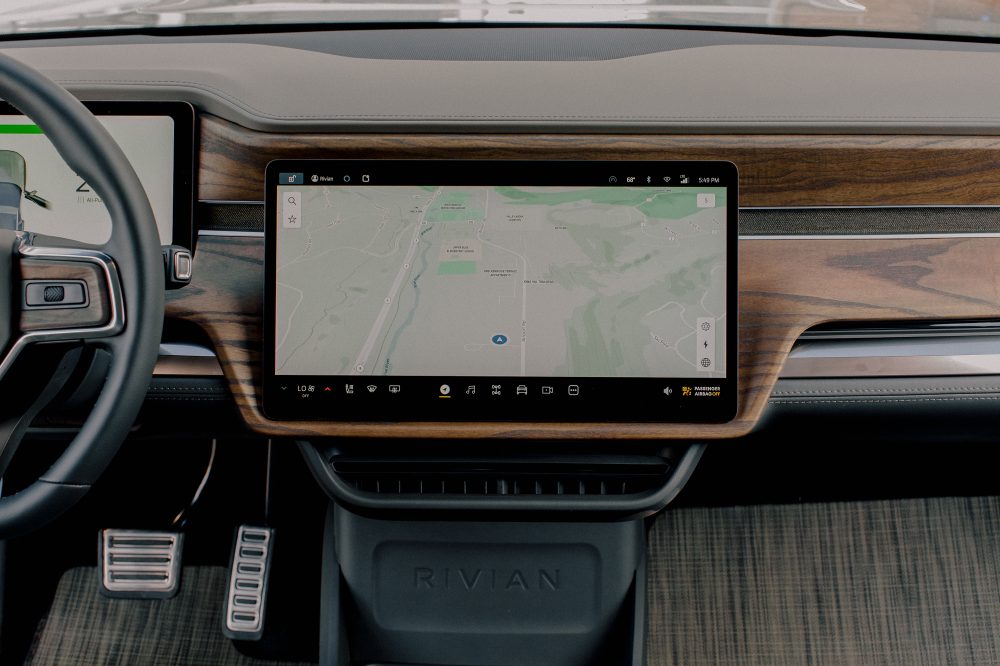
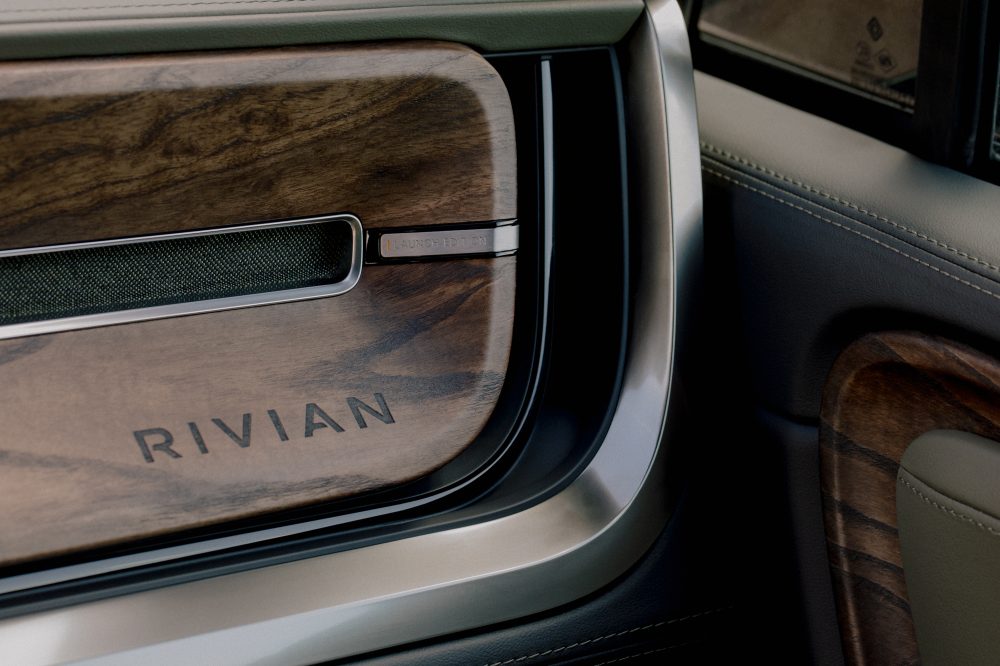
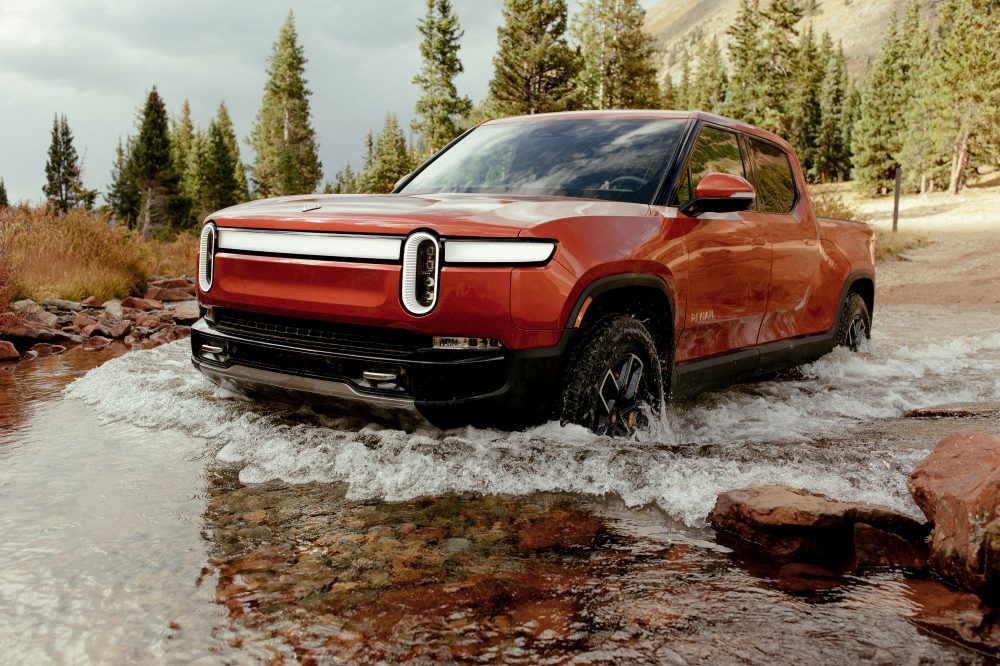
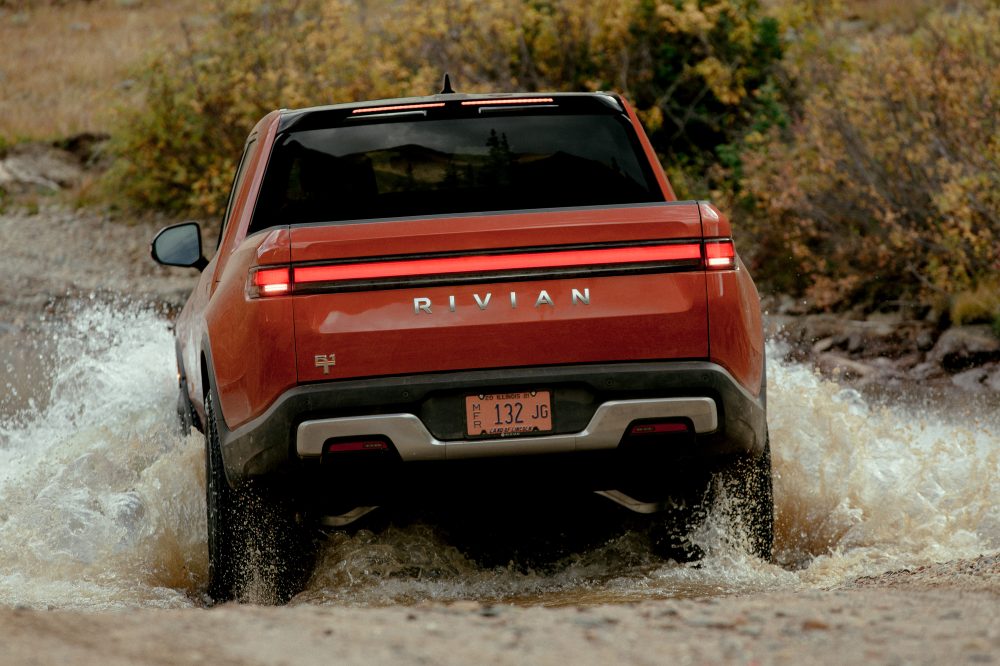
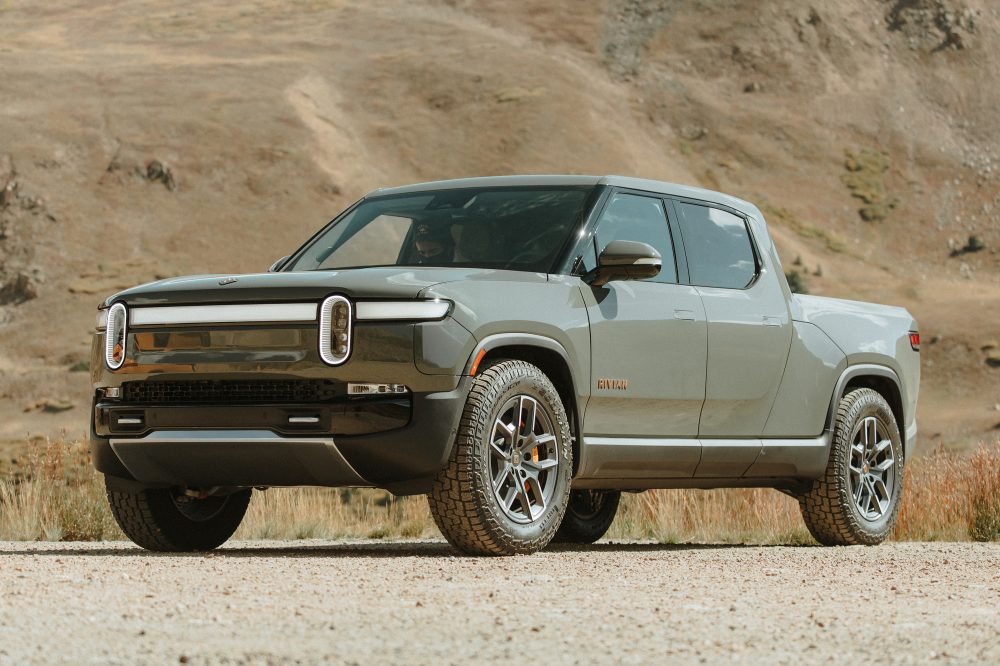
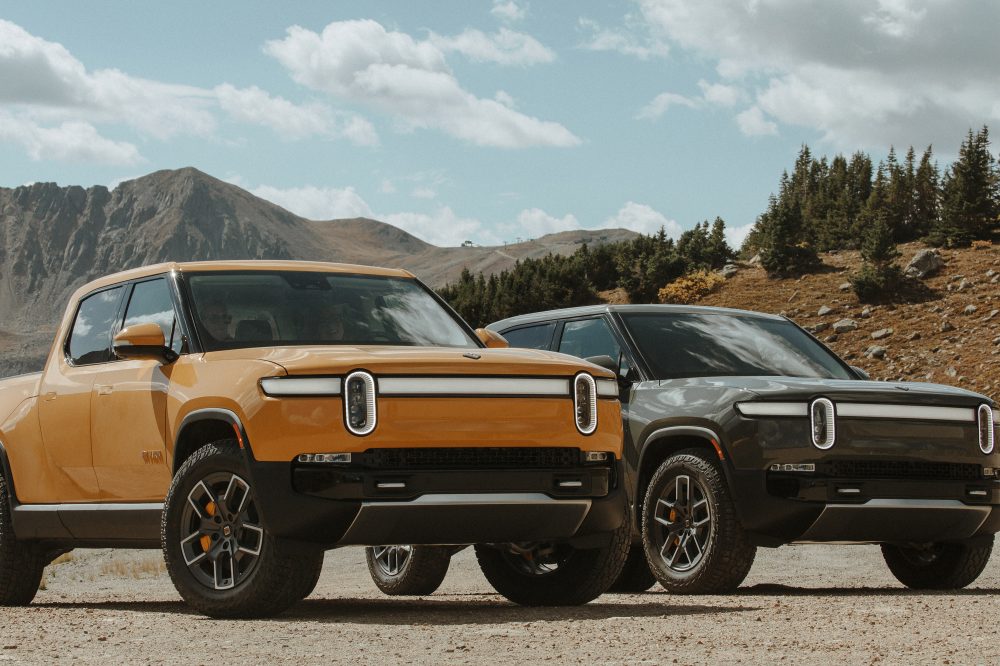
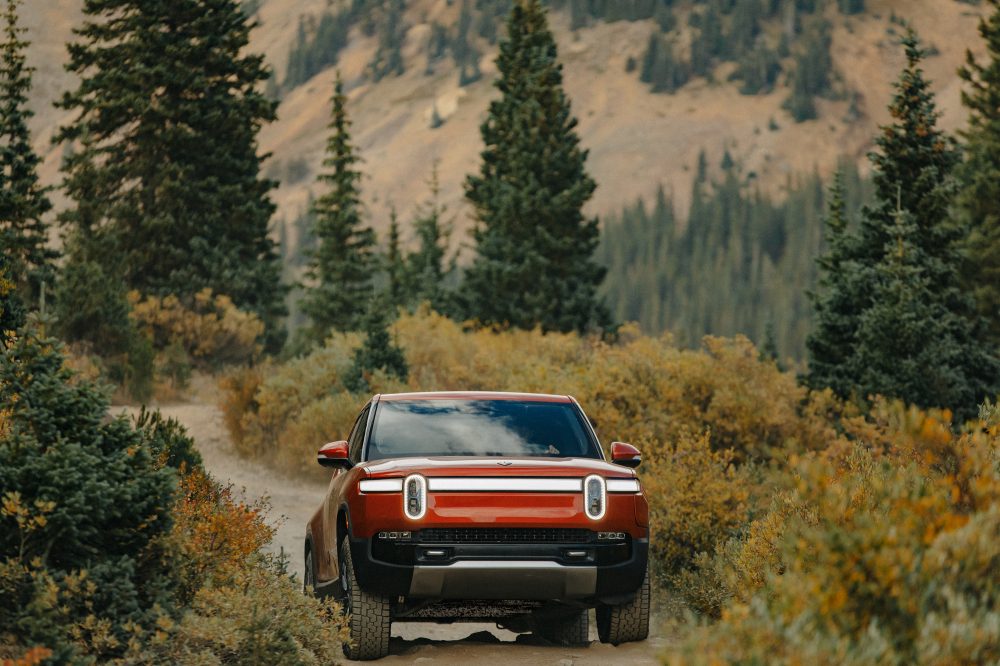
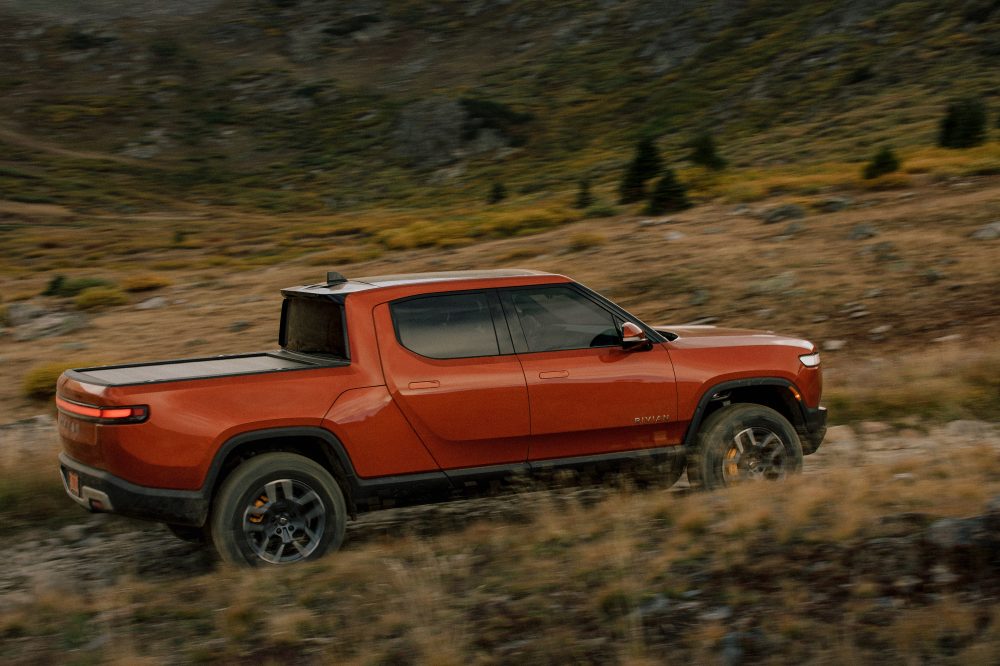
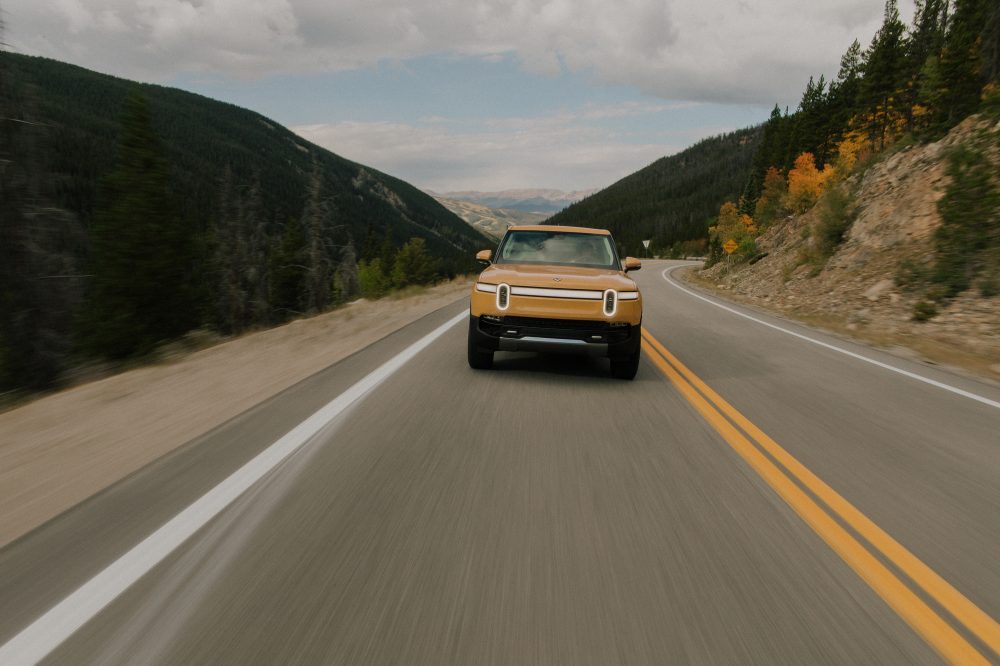
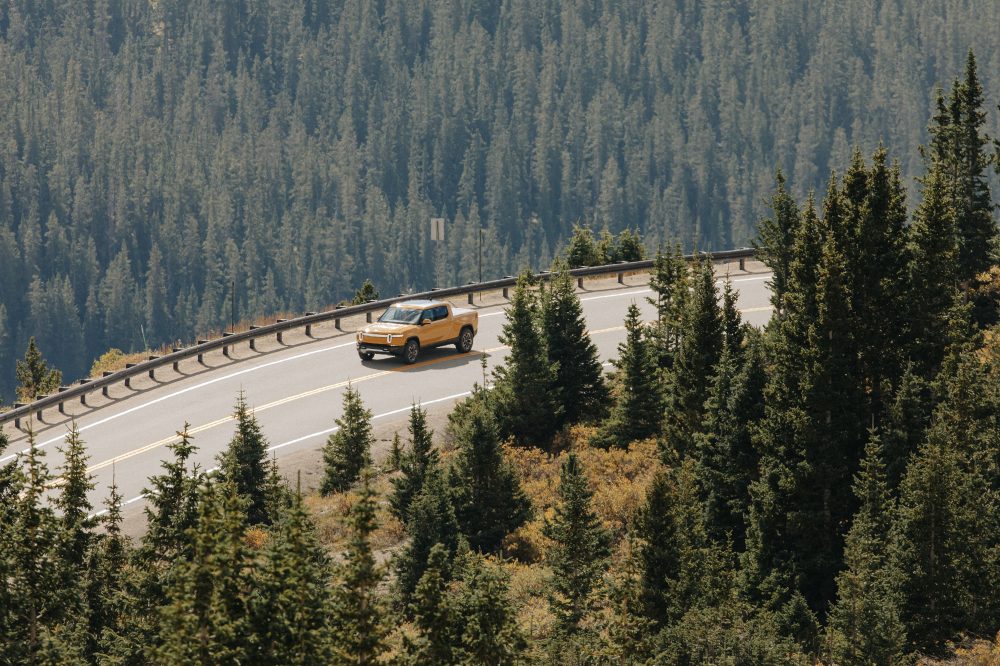
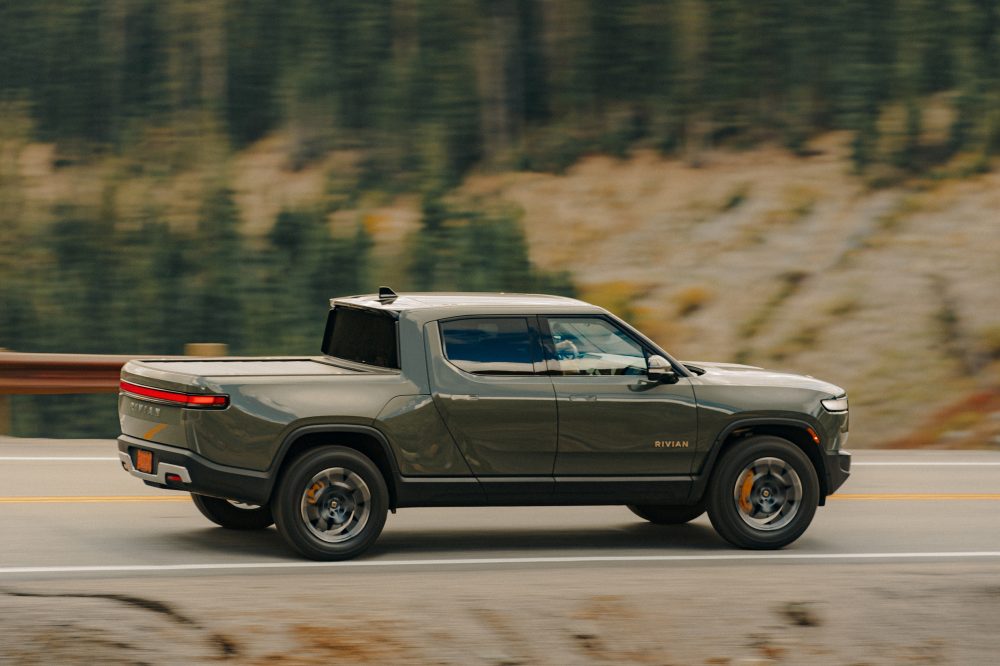
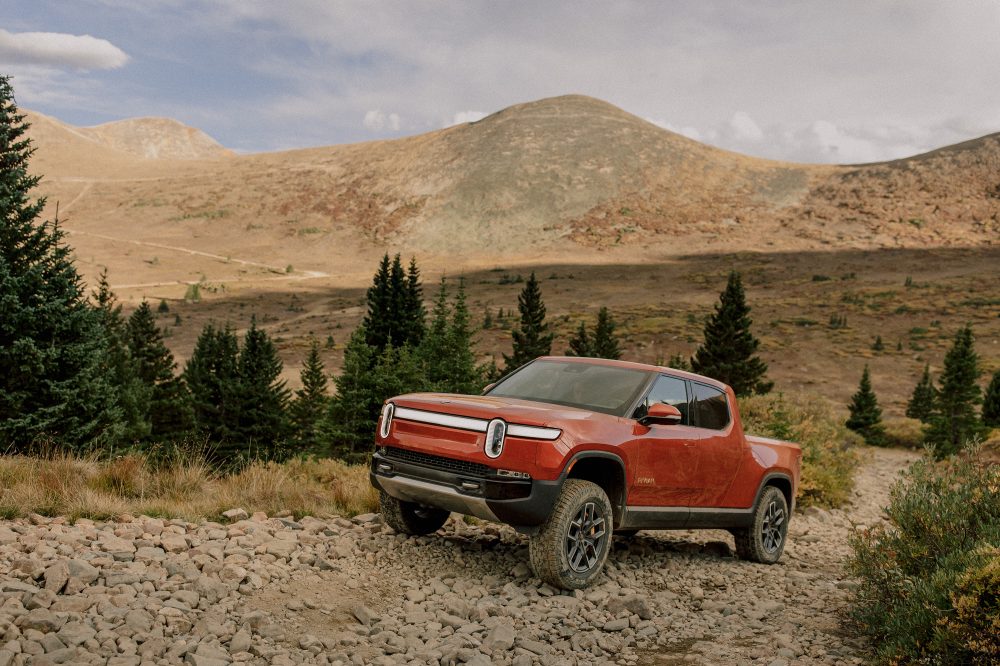
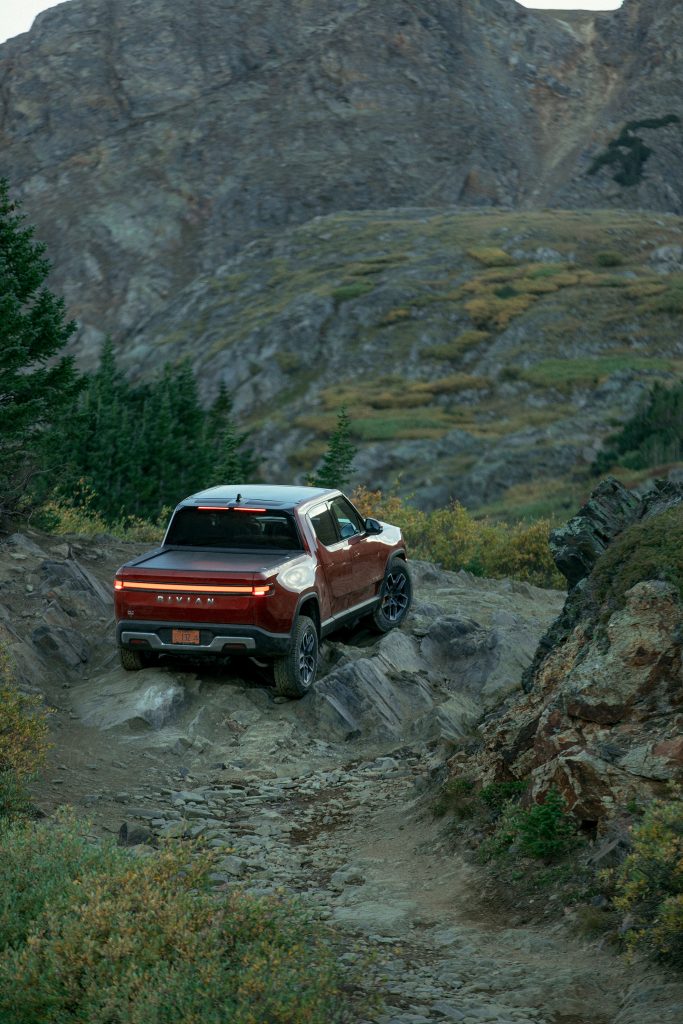
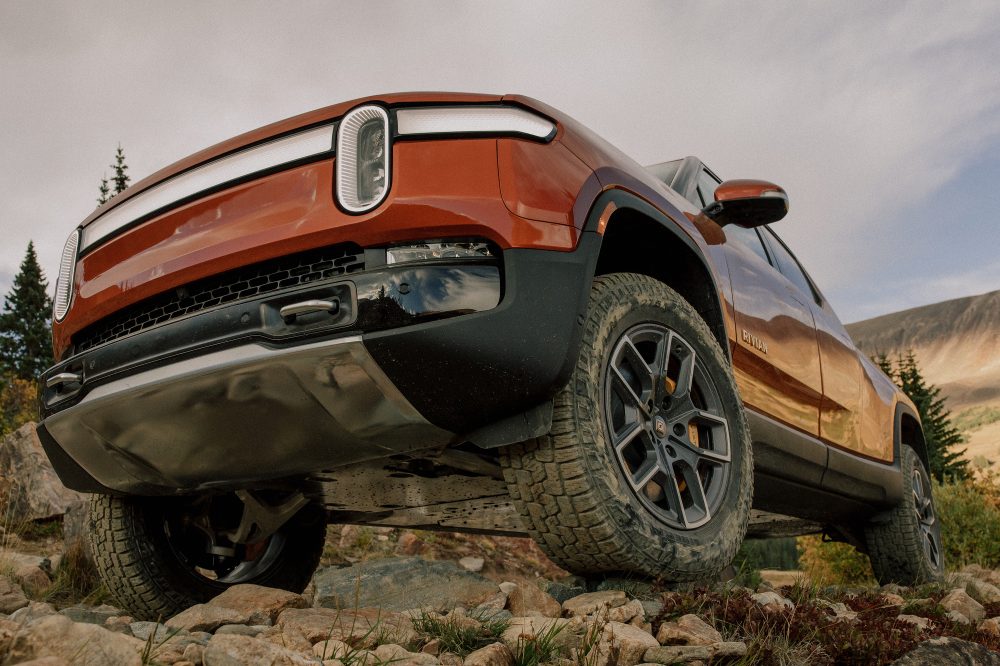
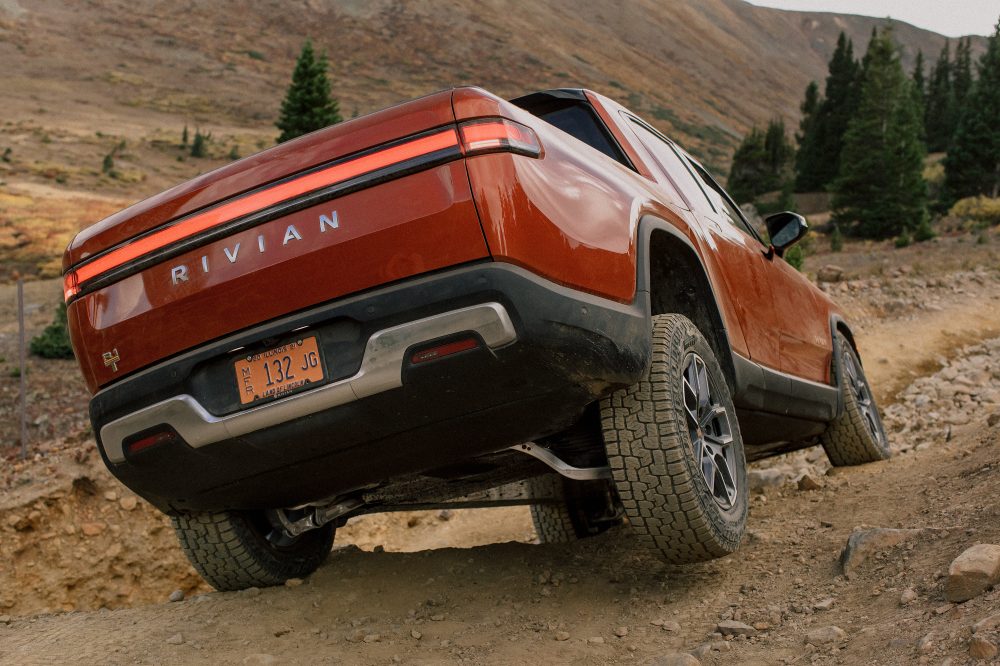
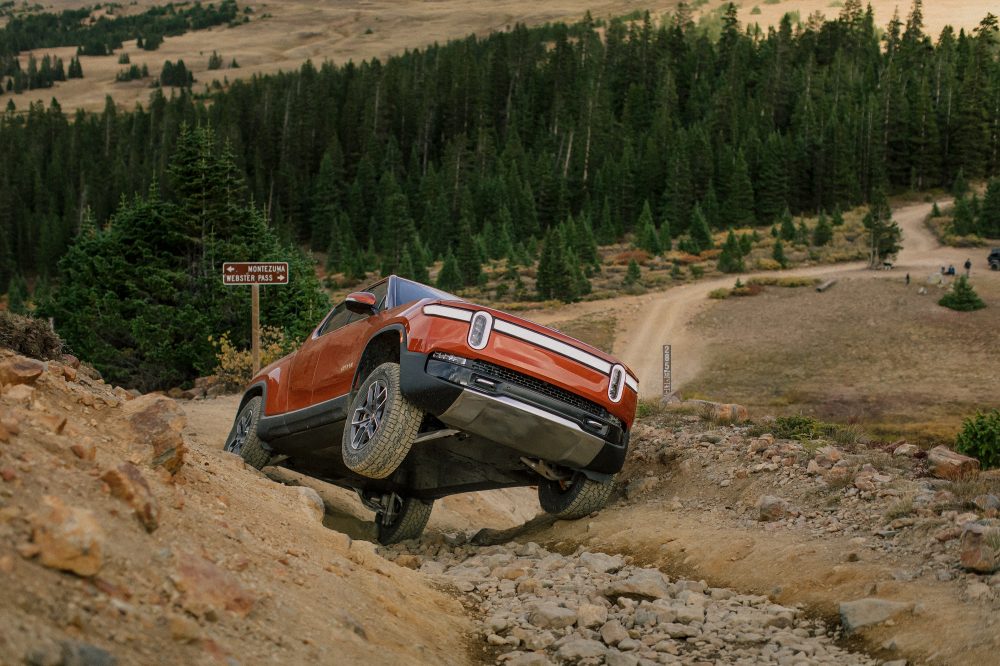

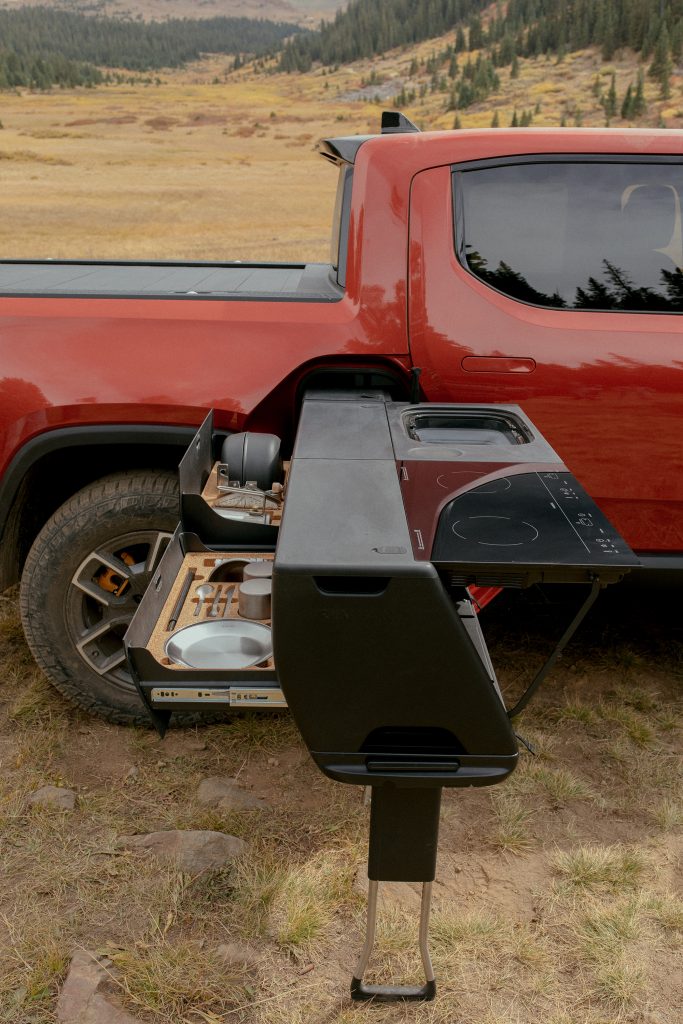
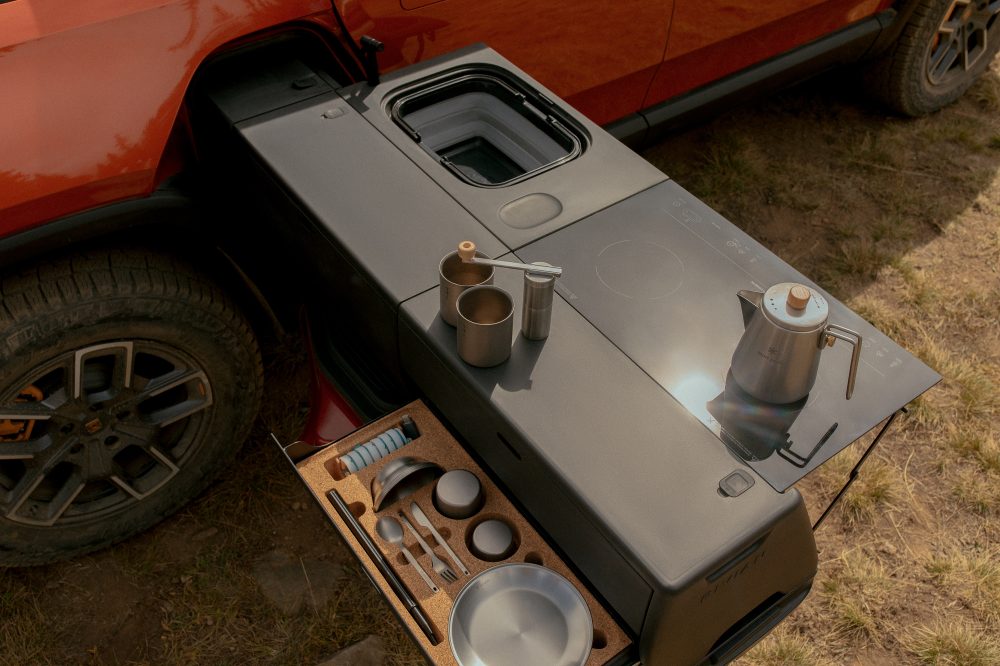
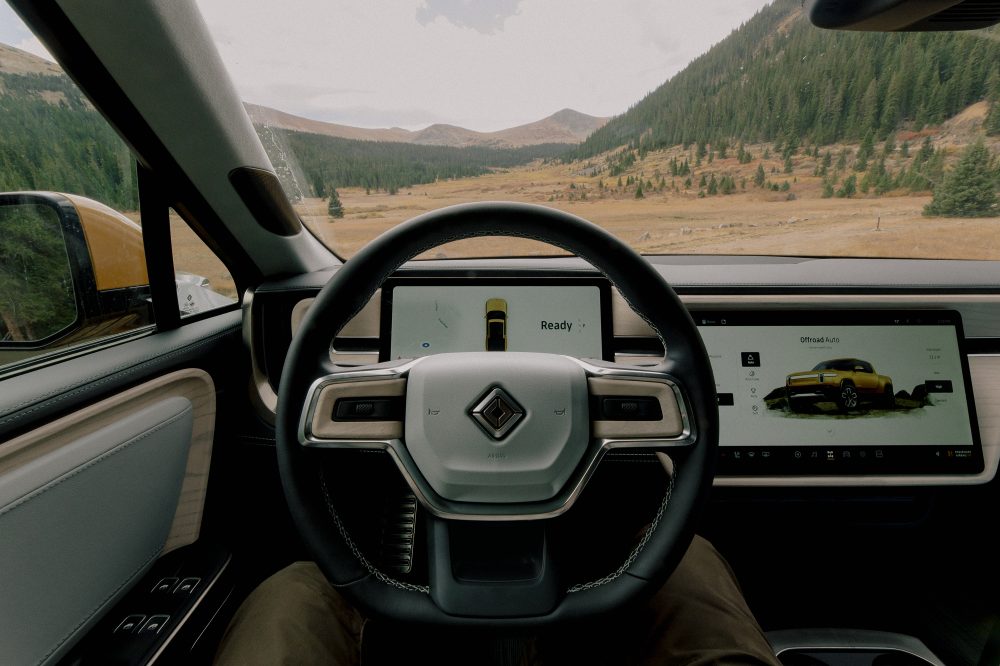
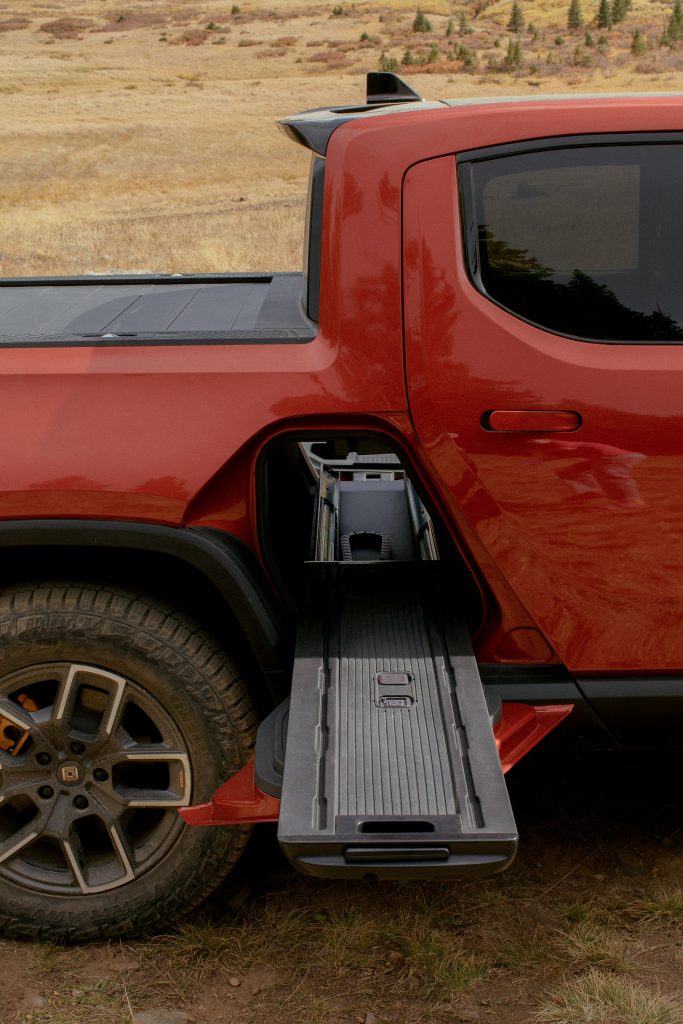
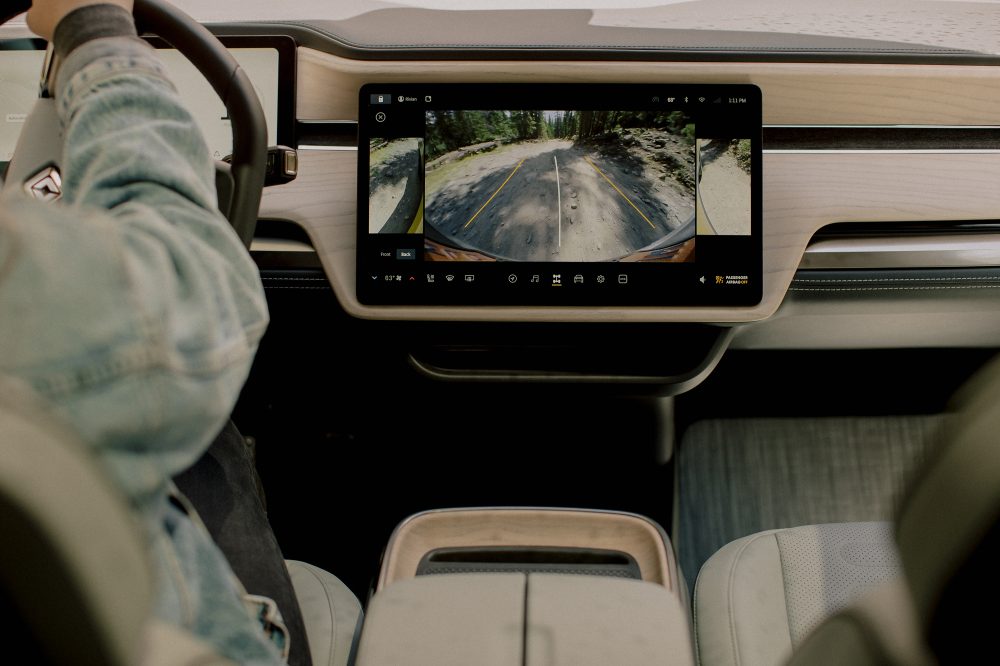
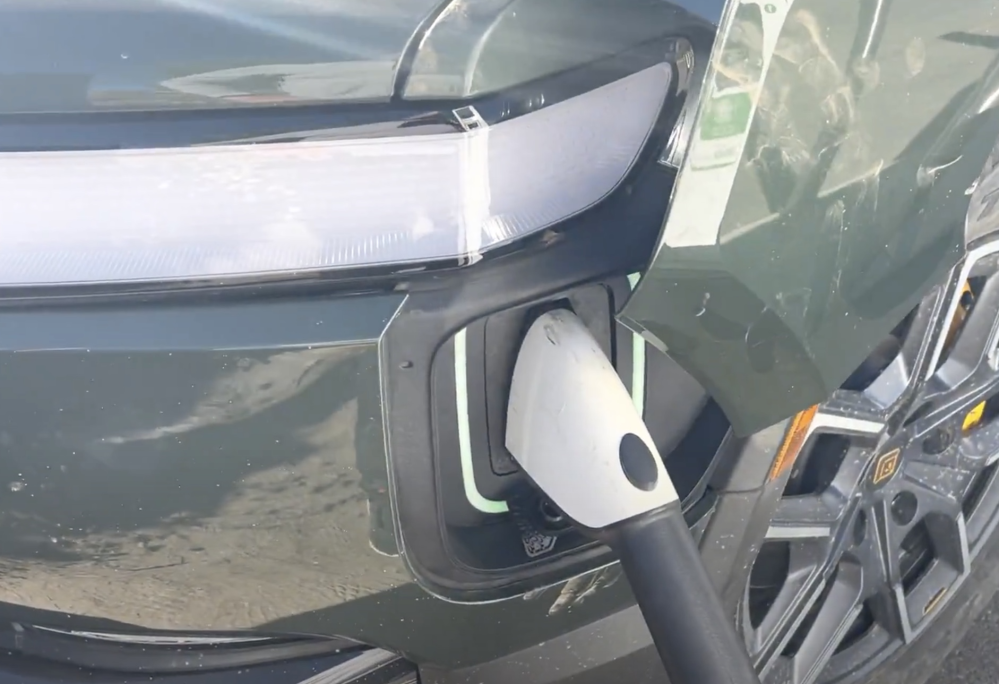
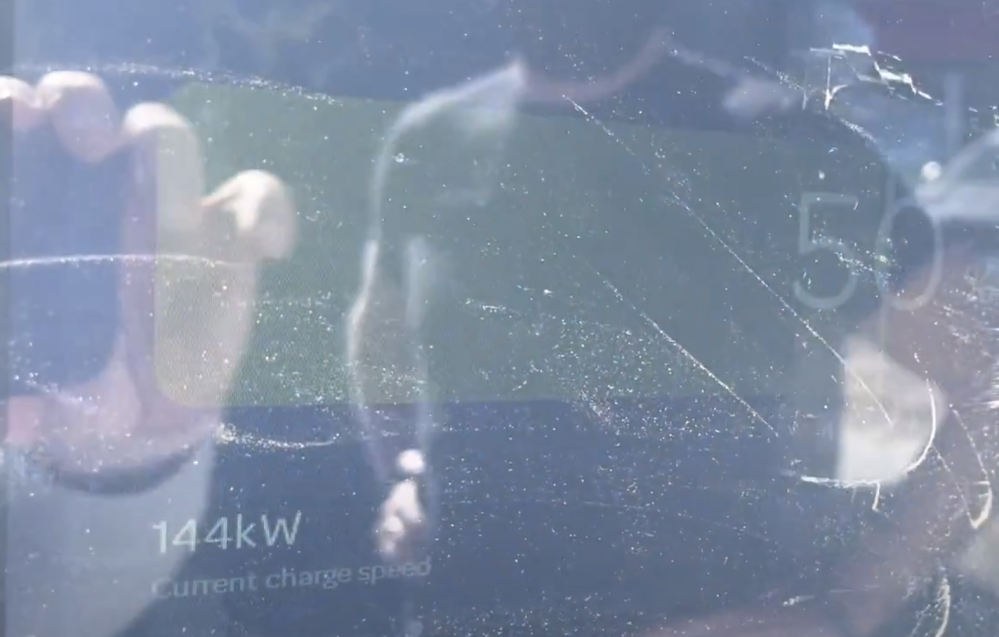

Comments